Forums
- Forums
- Axis And Allies Forum
- General Discussion
- Aviation News
Aviation News
Post a reply
- Go to Previous topic
- Go to Next topic
- Go to Welcome
- Go to Introduce Yourself
- Go to General Discussion
- Go to Screenshots, Images and Videos
- Go to Off topic
- Go to Works in Progress
- Go to Skinning Tips / Tutorials
- Go to Skin Requests
- Go to IJAAF Library
- Go to Luftwaffe Library
- Go to RAF Library
- Go to USAAF / USN Library
- Go to Misc Library
- Go to The Ops Room
- Go to Made in Germany
- Go to Campaigns and Missions
- Go to Works in Progress
- Go to Juri's Air-Raid Shelter
- Go to Campaigns and Missions
- Go to Works in Progress
- Go to Skinpacks
- Go to External Projects Discussion
- Go to Books & Resources
-
1 year agoTue Jul 02 2024, 08:17pmDuggy
 Main AdminMCONNELL AIR FORCE BASE, Kan. (AFNS) --
Main AdminMCONNELL AIR FORCE BASE, Kan. (AFNS) --
A 22nd Air Refueling Wing KC-46A Pegasus executed the world’s first nonstop, KC-46A westbound circumnavigation endurance flight, called Project Magellan, June 29-July 1, starting and finishing at McConnell Air Force Base.
This flight was the latest Maximum Endurance Operation (MEO) for the KC-46A, Air Mobility Command’s newest tanker aircraft.
Overall, MEOs extend aircraft missions in both time and aircrew, to enable greater capabilities and greater reach over greater distances. In doing so, MEOs enable AMC to surge personnel, supplies and aircraft to sustain initial operations and project and connect the joint force, anywhere in the world. The foundation of rapid global mobility is fuel, provided by tankers.
“Maximum Endurance Operations are all about overcoming the tyranny of distance: with a 48-hour duty day, you can literally fly across the world,” said Capt. Cody Donahue, 22nd Operations Group executive officer, who has been planning Project Magellan for months. “In an era of Great Power Competition, crews need the ability to operate longer than they have in the past, and Project Magellan is the next step in getting AMC crews experience in the game-changing new construct that is MEO.”
McConnell AFB coordinated receiver aircraft during the mission to demonstrate its ability to operate as a tanker during MEO. During this flight, the KC-46 refueled Air Force B-2 Spirits, C-17 Globemaster IIIs, F-15E Strike Eagles and another KC-46.
The operation also exemplified Team McConnell’s progress in developing and advancing KC-46 capabilities, since receiving its first KC-46s in 2019.
Onboard the global KC-46 flight were: Col. Brent Toth, aircraft commander; Capt. Cody Donahue, instructor pilot; Capt. Daison Batangan, instructor pilot; Capt. T.J. Buckley, instructor plot; Master Sgt. Jonathan Lauterbach instructor boom operator; Master Sgt. Patrick Murray, instructor boom operator; Capt. Jacob Heyrend, flight surgeon; Staff Sgt. Alejandro Melendez, flying crew chief; and Staff Sgt. Dustin Shaffer, flying crew chief.
“It goes without saying that we will be accomplishing training in our primary roles as tanker pilots,” Donahue said. “Our pilots will be conducting multiple heavyweight onloads and our boom operators will be refueling several different types of aircraft throughout the flight.”
McConnell AFB also exhibited its ability to explode into theater – or multiple theaters in this case – by coordinating with three other military bases around the world to pre-position several of the wing’s tankers to refuel the KC-46 enroute so it could fly for 45 hours straight. Two KC-46’s were sent to Andersen Air Force Base, Guam, one KC-135 Stratotanker to Royal Air Force Mildenhall, United Kingdom, and one KC-135 to the U.S. Central Command area of responsibility, in order to rendezvous with the globe-trotting aircraft to resupply their much-needed fuel. Backing up the 22nd ARW airbridge was a KC-135 from 100th ARW out of RAF Mildenhall and a KC-135 deployed from the Utah Air National Guard.
“Not only is the duration of this sortie notable, but we are completing it with just two basic crews,” Donahue said. “Previously, three pilots were able to fly as an ‘augmented’ crew for up to 24 hours. Going forward, AMC is looking to have a crew of four pilots operating for up to 48 hours.”
The command remains focused on providing Mobility Air Forces warfighters with the resources and capabilities required to perform effectively during high-pace operational environment and max-endurance missions.
Namely, long duty days call for safety measures. Capt. Jacob Heyrend, 349th Air Refueling Squadron flight surgeon, was aboard to ensure the health, safety and performance of the crew.
“Goals for this flight were to see the combined capabilities of a modern tanker and augmented crews, pushing the brink of human performance,” Heyrend said. “The final goal I had for the flight was to maintain crew, flight and mission safety and health as the aeromedical element.”
The crew collaborated with a third-party contractor to enroll the crew in a fatigue study. The contractors have experience working with elite sports professionals, NASA and other international space station astronauts.
“They utilize validated metrics, such as the Psychomotor Vigilance Testing,” Heyrend said. “The aircrew self-administered these tests at certain points in the sleep-wake cycle and when prompted by me, or self-initiated utilizing proprietary software. I also performed various ad hoc cognitive assessments in flight, many of which were components of the Montreal Cognitive Assessment. I observed task response as well to gain a whole person perspective of each crew member.”
The four pilots and two boom operators aboard the flight took turns resting and relieved their counterparts at set intervals, taking advantage of the built-in bunk beds on the tanker.
As the first main operating base for the KC-46, McConnell AFB has refined its approach to the Air Force’s newest tanker to provide rapid airlift, air refueling and aeromedical evacuation for the joint force. Successfully flying its longest KC-46 MEO yet is a testament to the hard work of the McConnell AFB Airmen.
"The 22nd ARW's recent MEO around the world showcased not only the unmatched endurance of the KC-46 aircraft, but also the incredible resilience and professionalism of our aircrew,” said Col. Cory Damon, 22nd ARW commander, who was aboard the final tanker refueling this worldwide KC-46 flight. “This mission was a true test of our capabilities and a shining example of the critical role our tankers play in providing fuel and support to the joint force. I'm incredibly proud of our team's achievement in pushing the boundaries of what our tankers and their crews can do, and I have no doubt that this historic mission will serve as a foundation for future maximum endurance operations and further solidify our position as a key enabler of global power projection.”
Also, aboard that last tanker in the global airbridge refueling the around-the-world KC-46 flight was Brig. Gen. Gerald Donohue, Headquarters AMC, Strategic Deterrence and Nuclear Integration director of operations, observing this latest demonstration of the KC-46’s capabilities to provide rapid global mobility and global reach.
“Learning in training mitigates risk in crisis,” Donohue said. “This mission provided AMC another opportunity to learn lessons and capture best practices for increasing human performance during MEO. You need to look no further to see that the Mobility Air Forces are deadly serious about our role as the joint force maneuver.”
(U.S. Air Force photo)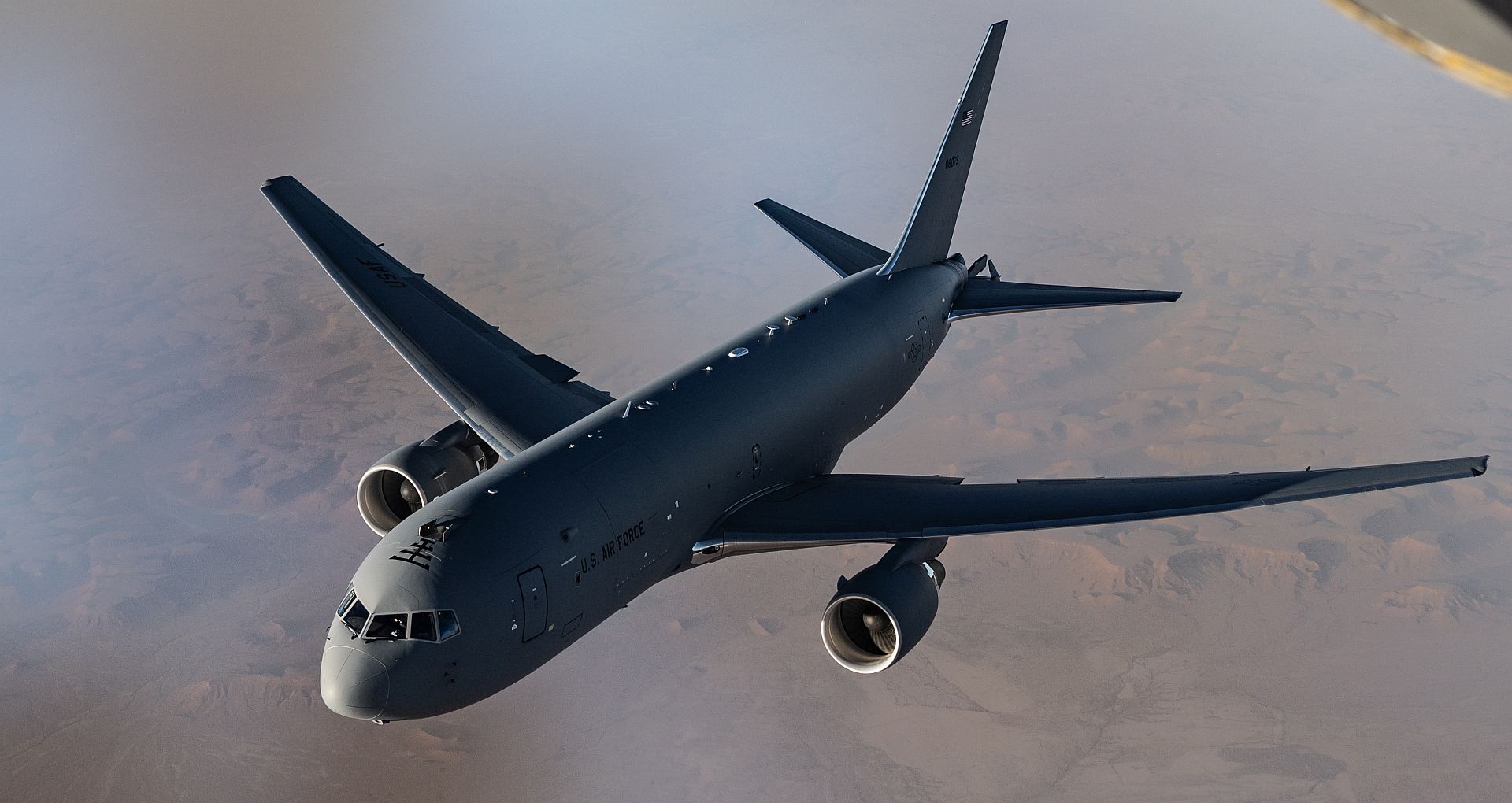
An F/A-18F Super Hornet, attached to Strike Fighter Squadron (VFA) 103, lands on the flight deck of Nimitz-class aircraft carrier USS George Washington (CVN 73) in the Pacific Ocean, June 30, 2024. George Washington is deployed as part of Southern Seas 2024 which seeks to enhance capability, improve interoperability, and strengthen maritime partnerships with countries throughout the U.S. Southern Command area of responsibility through joint, multinational and interagency exchanges and cooperation. (U.S. Navy photo by Mass Communication Specialist 2nd Class David C. Fines)_103_lands_on_the_flight_deck_of_Nimitz-class_aircraft_carrier_USS_George_Washington.jpg?width=1920&height=1080&fit=bounds)
An F-16 Viper assigned to the 8th Fighter Squadrons waits on a runway at Holloman Air Force Base, New Mexico, June 28, 2024. The squadron’s new flagship honors the F-117 Nighthawk, which was flown by the 8th FS for over 25 years. (U.S. Air Force photo by Airman 1st Class Michelle Ferrari)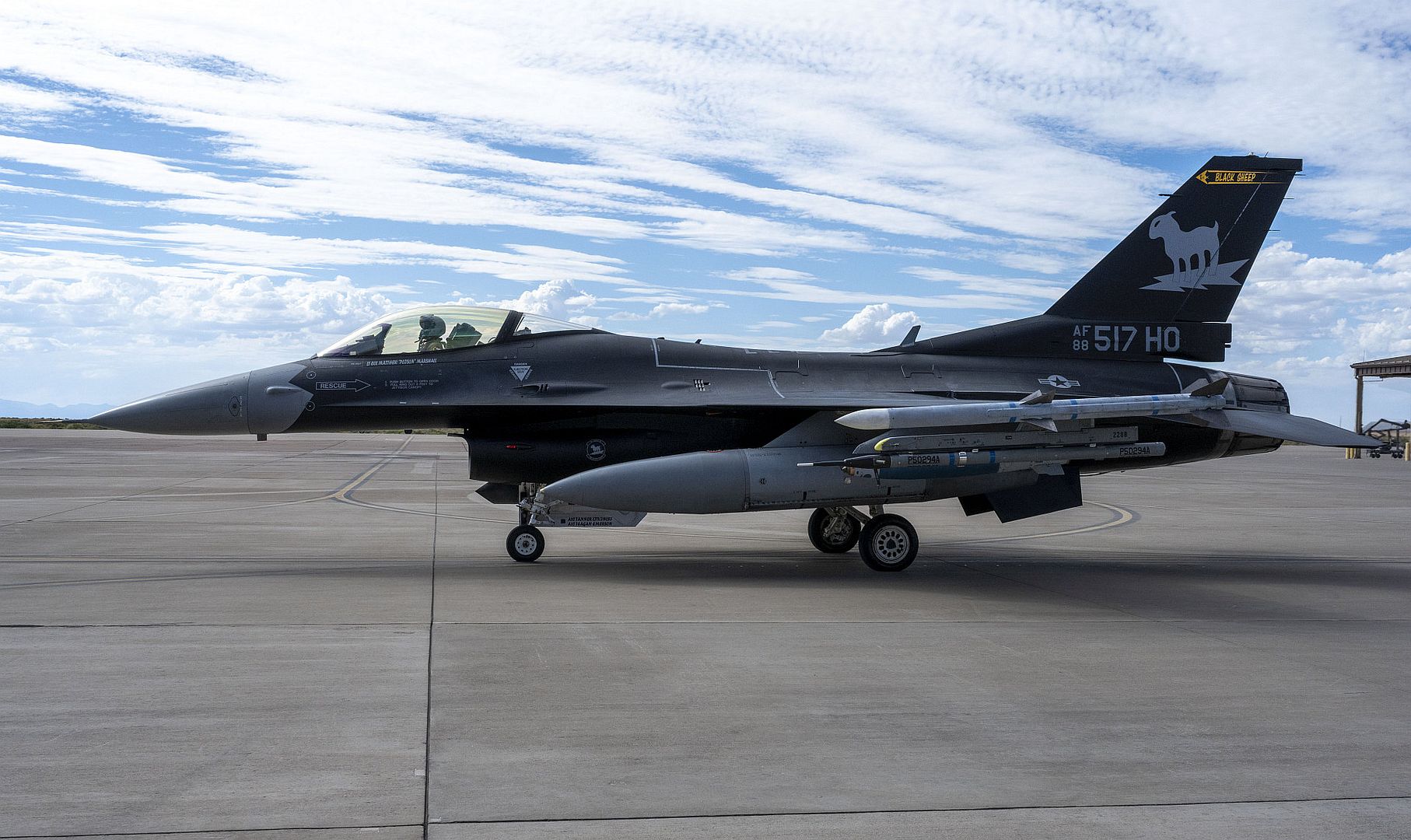
An F-16 Viper assigned to the 8th Fighter Squadrons flies over Holloman Air Force Base, New Mexico, June 6, 2024. The squadron’s new flagship honors the F-117 Nighthawk, which was flown by the 8th FS for over 25 years.
(U.S. Air Force photo by Airman 1st Class Michelle Ferrari)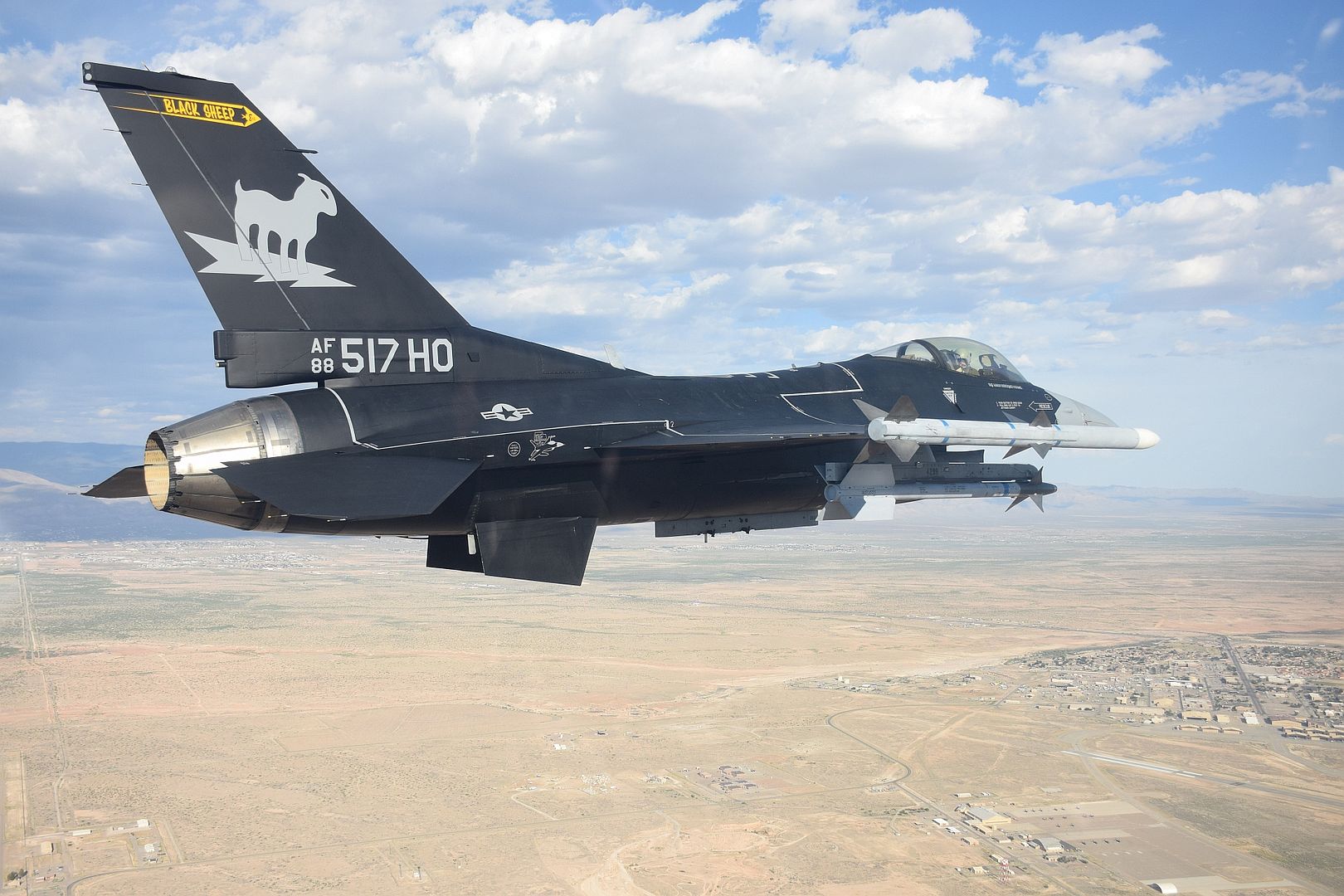
MORRIS AIR NATIONAL GUARD BASE, Ariz,-- The Morris ANGB is home to the Air National Guard’s premier F-16 fighter pilot training unit, the 162nd Wing, providing training for coalition war-fighting partners for the United States Air Force and international allies, which is why the Department of the Air Force selected Morris ANGB to receive up to nine Slovak-owned F-16 Block 70s. The first Block 70 aircraft arrived here, June 13.
“As the Slovakian air force prepares its air bases to receive their newly acquired F-16 Block 70s, it was determined that the most advantageous location to base their first aircraft was Morris ANGB,” said Col. Thomas Obrochta, 162nd Operations Group commander. “This will enable the first Slovakian F-16 pilots to train on their own aircraft prior to delivering them to their home nation.”
Beyond this initial delivery of Slovak F-16s to Morris ANGB for training, two additional jets will arrive in Slovakia later this summer to begin in-country operations. The First F-16s with Block 70 capabilities to operate in Europe.
The Slovakia Republic Minister of Defense established an intensive commission on the selection of the aircraft to replace the obsolete MiG-29 Fulcrum fighters.
“The process of selecting new fighter aircraft began in 2015,” said Col. Adolf Ulicny, Slovakia Foreign Liaison Officer. “The fifth generation F-16 Block 70 aircraft fulfilled all our ideas and the entire spectrum of our tasks.”
The F-16 is a compact, multi-role fighter aircraft, and has proven itself in air-to-air combat and air-to-surface attack. The latest version F-16 Block 70 offers unparalleled capabilities.
“The F-16 Block 70 is the latest edition of one of the most combat proven fighter jets of all time,” said Obrochta. “It includes an advanced APG-83 Active Electronically Scanned Array [AESA] fire control radar, a high-resolution Center Pedestal Display, which provides critical tactical imagery to pilots and allows them to take full advantage of AESA and targeting pod data, advanced weapons integration, and an extended structural life of 12,000 hours-- more than 50 percent beyond that of previous production F-16 aircraft.”
The initial cadre of Slovakian F-16 pilots have been training at Morris ANGB for the last two years.
“The cadre of Slovakian F-16 pilots underwent an initial basic course covering air-to-air and air-to-ground tactics,” said Lt. Col. Matthew Hodges, squadron commander when Slovakian cadre of pilots started. “After they completed the basic course, they then seasoned and built the hours required for the Flight Lead upgrade and some continuing to season for the instructor pilot upgrade to be able to go back to Slovakia and start their own F-16 operations.”
According to Obrochta, the 162nd Wing is committed to providing the highest quality training to international military personnel instilled with sound piloting skills.
“Training with the Block 70’s at the 162nd Wing enables Slovakian pilots to gain proficiency in their aircraft while integrating with other U.S. fighter and support aircraft,” said Obrochta. “In addition, it provides 162nd instructor pilots critical experience in the Block 70 so that they are better prepared to teach future international students.”
The Slovakia air force modernization acquisition of the F-16 Block 70 aircraft aims to bolster Slovakia’s defense capability, capacity and competence, strengthening bilateral defense operation, and increase interoperability with U.S. and NATO forces.
“So far, 11 pilots have been trained for the F-16 Block 70”, said Ulicny. “Pilots in the training program at other air bases in the U.S. must all come to the 162nd Wing to retrain for the highest type of aircraft, the F-16 Block 70.”
Some Slovak-owned F-16 Block 70s will be temporarily stationed in the United States through fiscal year 2026 at the 162nd Wing, with others beginning operations in Slovakia later this year.
“It has been a pleasure to watch them grow in their tactics, understanding and realization that they are the ones who will be working together to safeguard Slovakia,” said Hodges.
(U.S. Air National Guard photo. by Senior Airman Guadalupe Beltran)
ISTANBUL, July 2, 2024 /PRNewswire/ -- Boeing [NYSE: BA] and Turkish Airlines today announced an order for four 777 Freighters to further strengthen the airline's position in the global air cargo market. With this order, Turkish Airlines will operate 12 777 Freighters.
"This new investment in expanding our cargo fleet underscores our commitment to meeting the growing global demand for air freight services," said Turkish Airlines Chief Cargo Officer Ali Türk. "The addition of these Boeing 777 Freighters will not only enhance our operational capabilities, but also serve as another step in our strategic vision to reach the top of air cargo sector worldwide while maintaining our leading position with our unparalleled service and efficiency for our customers across the globe."
Turkish Airlines' purchase of additional 777 Freighters will help the carrier meet growing demand for freight services, driven by the rapid growth of e-commerce and the need for efficient and reliable transportation across the globe. The new freighters will enable Turkish Airlines to optimize its cargo operations, reduce costs and deliver goods to destinations worldwide on time.
"We are proud to continue our long-standing partnership with Turkish Airlines and support its expansion of cargo operations with the addition of Boeing 777 Freighters," said Paul Righi, vice president of Boeing Commercial Sales for Eurasia. "The 777 Freighter's payload capacity, range and flexibility will enable Turkish Airlines to deliver exceptional customer service while maximizing operational efficiency."
The Boeing 777 Freighter is the world's most capable twin-engine freighter with a maximum payload capacity of 102 metric tons (112 tons) and a range of 9,200 kilometers (4,970 nautical miles).
With more than 265 deliveries, the 777 Freighter is Boeing's best-selling freighter airplane of all time. As the market leader in cargo airplanes, Boeing provides more than 90% of the worldwide dedicated freighter capacity, including new production and converted airplanes.
In addition to freighters, Turkish Airlines operates a fleet of Boeing airplanes that includes the 777-300ER (Extended Range), Next-Generation 737, 737 MAX and 787 Dreamliner.
As a leading global aerospace company, Boeing develops, manufactures and services commercial airplanes, defense products and space systems for customers in more than 150 countries. As a top U.S. exporter, the company leverages the talents of a global supplier base to advance economic opportunity, sustainability and community impact. Boeing's diverse team is committed to innovating for the future, leading with sustainability, and cultivating a culture based on the company's core values of safety, quality and integrity. Join our team and find your purpose at boeing.com/careers.
The RAAF F/A-18F Super Hornets and EA-18G Growlers conducted air to air refuelling with two KC-30A Multi-Role Tanker Transport aircraft during Exercise Diamond Spear 24, held over the east coast of Australia.
Exercise Diamond Spear 2024 forms part of the #AusAirForce’s Air Warfare Instructor Course (AWIC). The exercise provides an essential live training environment to develop the knowledge, skills and experience needed to grow the next generation of Air Warfare Instructors.
(Photos courtesy of CPL Kieren Whiteley & LACW Taylor Anderson RAAF)
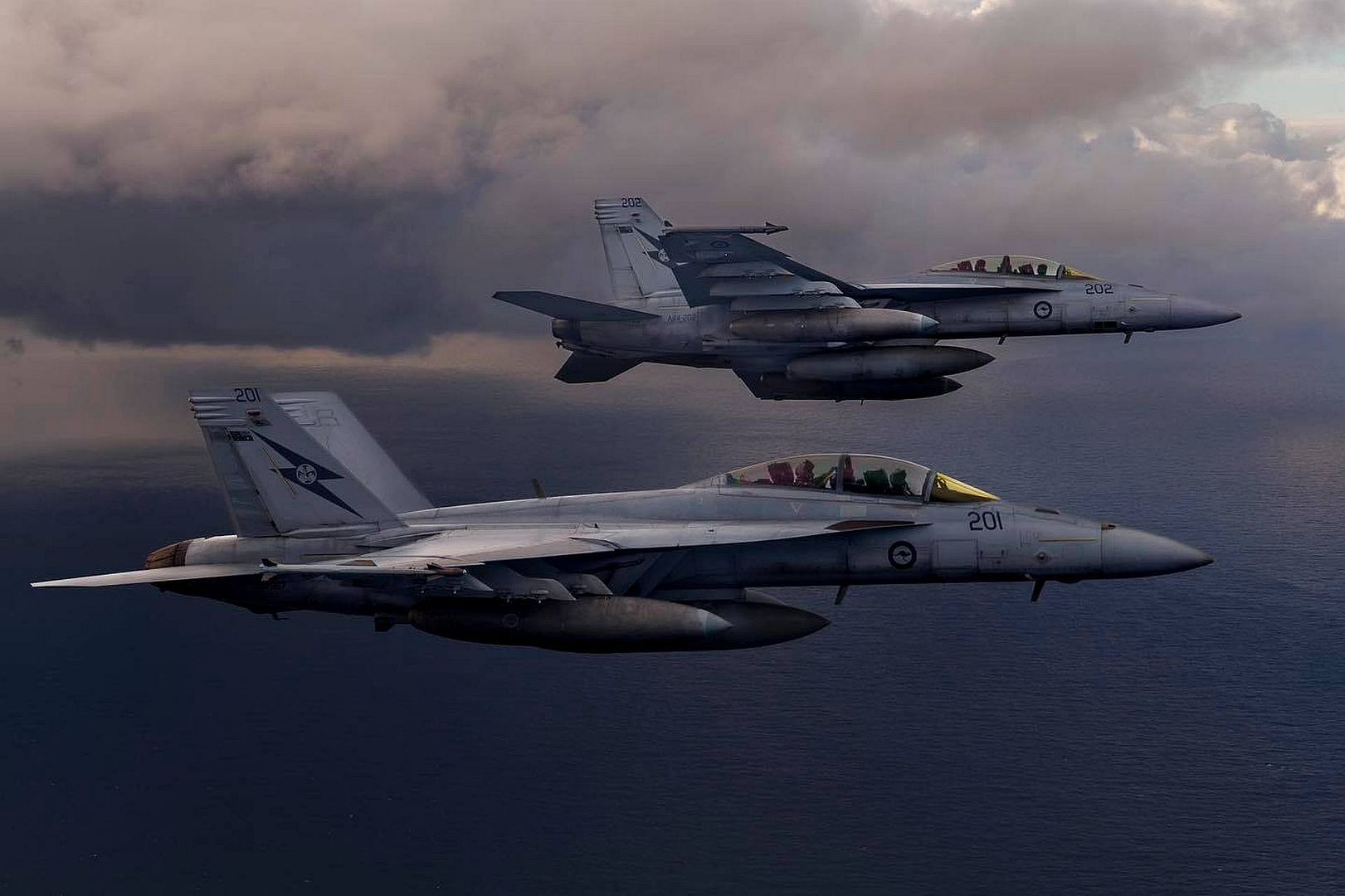
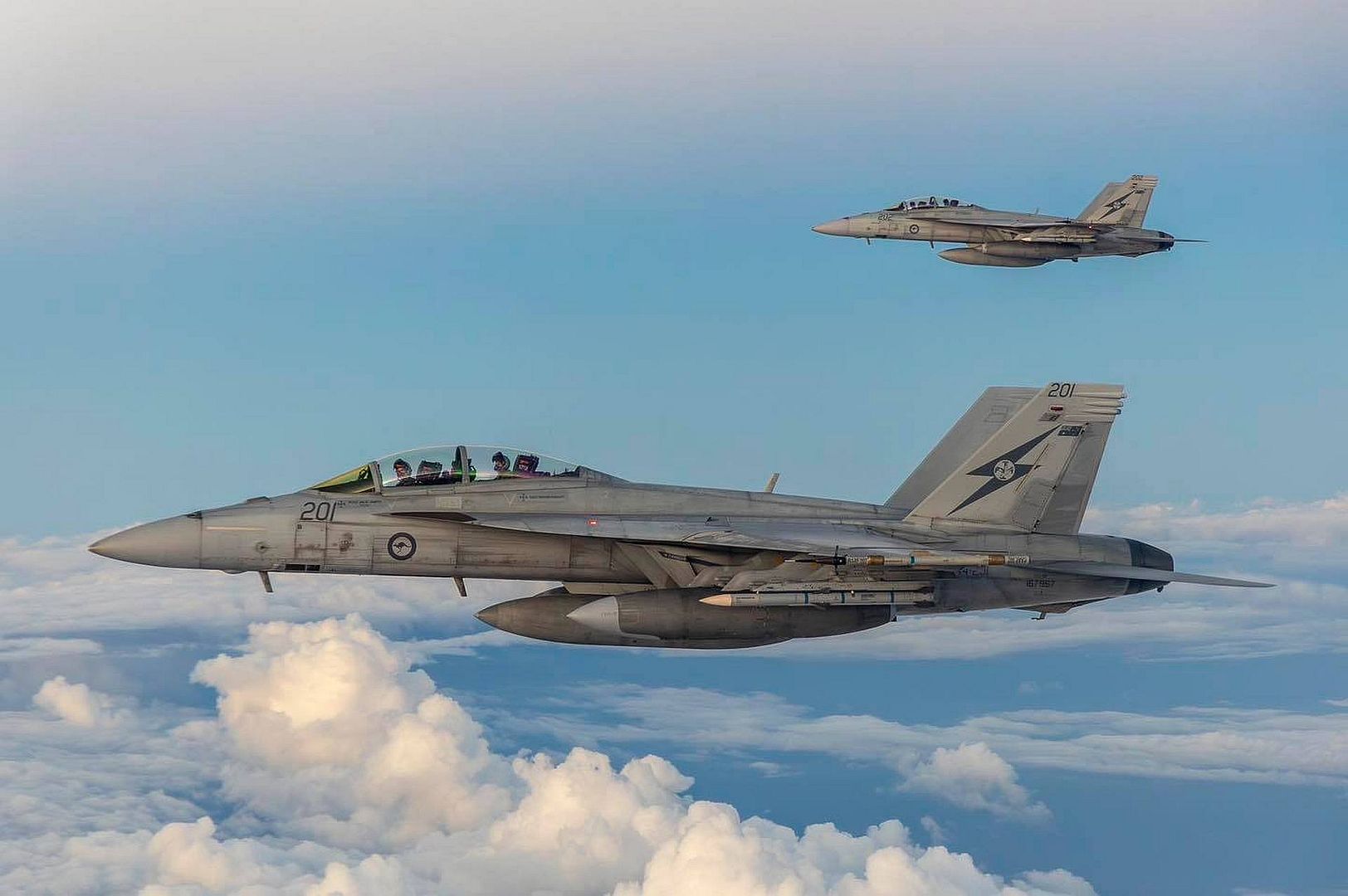
Al Udeid (Qatar), 30 June 2024 - The #MilitaryAirforce air campaign in the Indo-Pacific officially took off yesterday.
With the first leg, from Sea Exercise at Al Udeid, Qatar, the deployment of Armed Forces personnel to participate in the International Exercise Pitch Black 2024 has begun in Australia, with a contingent of over 400 women and men and 15 fighter aircraft and support aircraft; some of these latest deployments are a complex transfer phase to and from Italy.
(Photos courtesy of the Aeronautica Militare)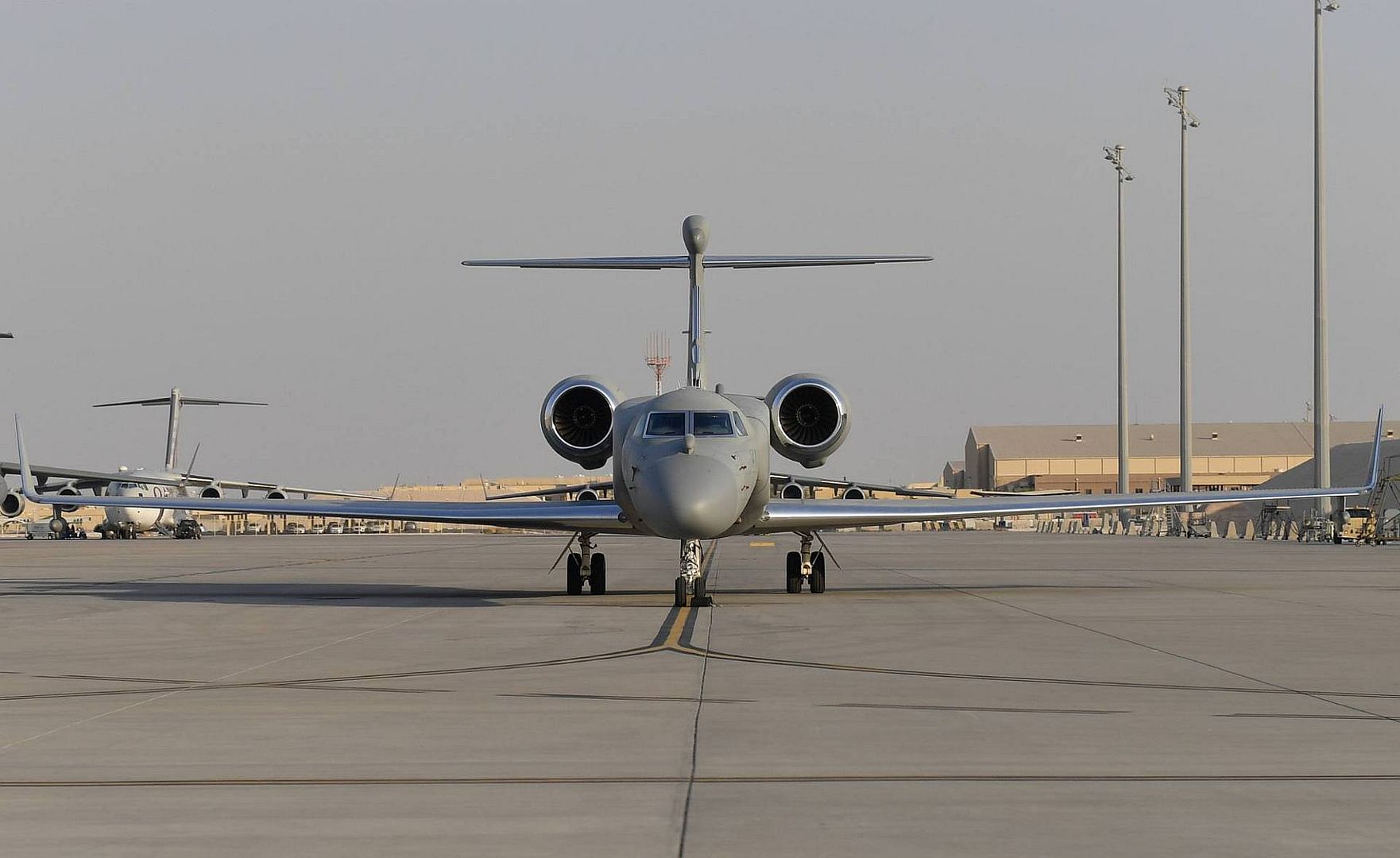

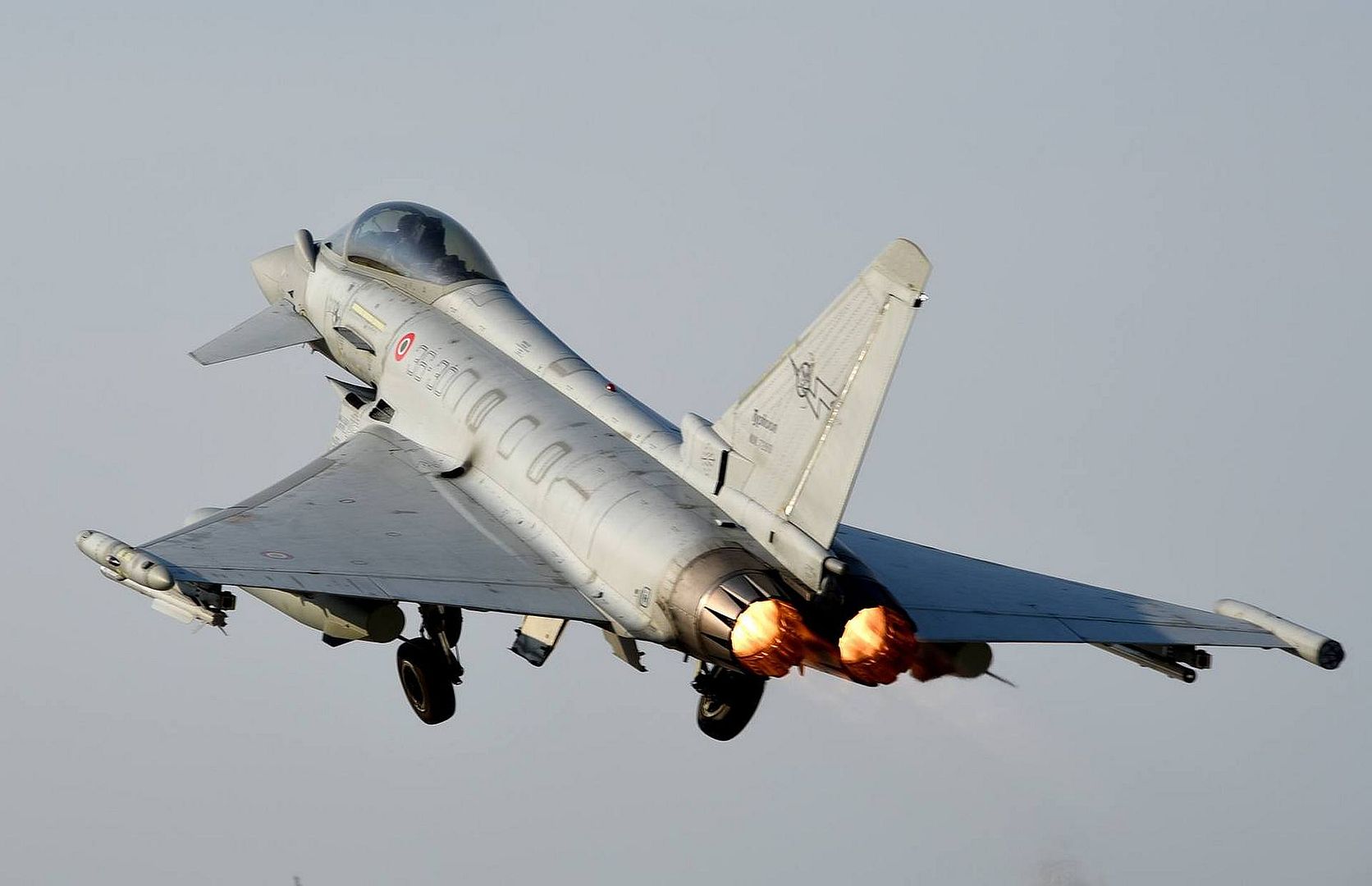
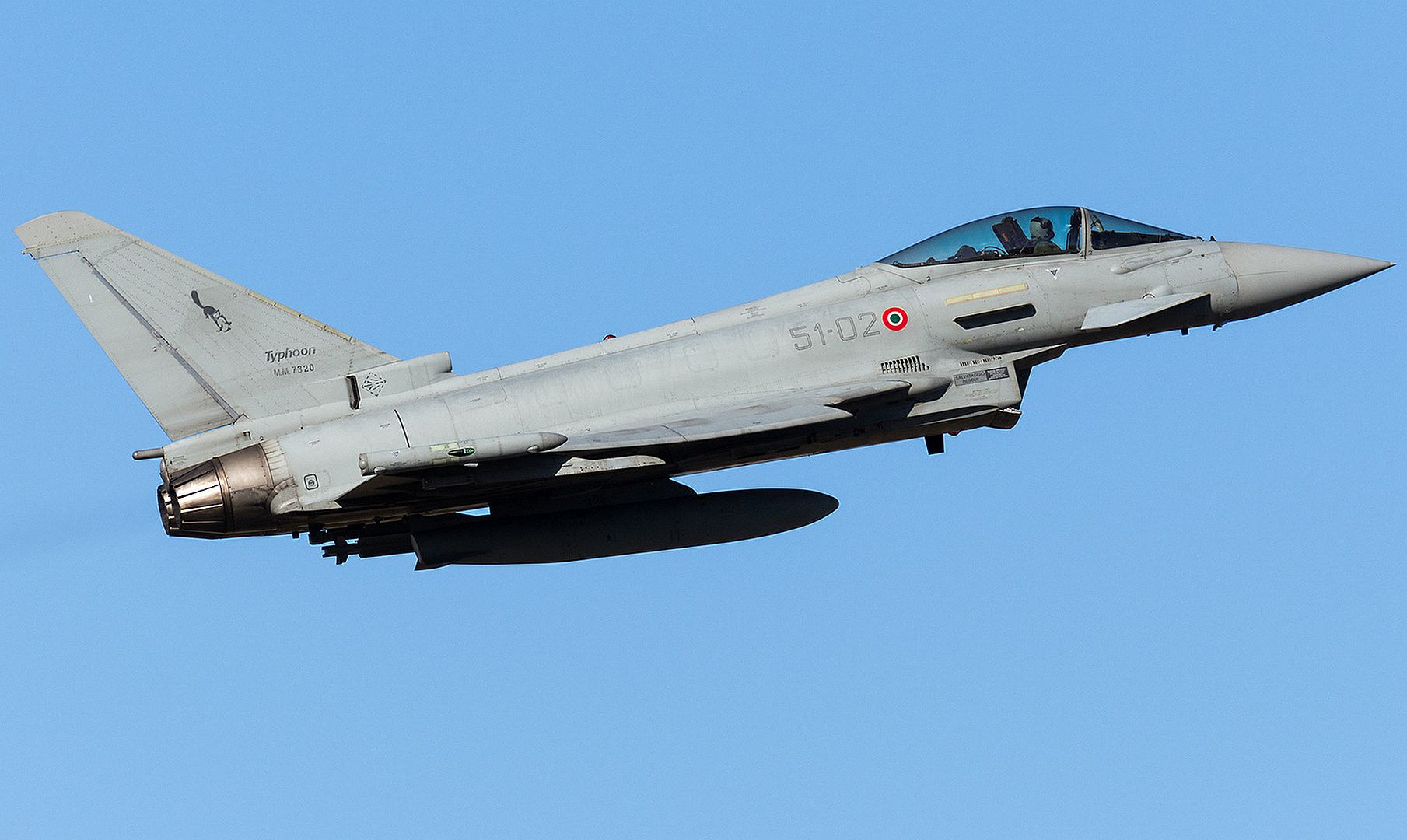

-
 Main AdminA KC-46A Pegasus arrives at McConnell Air Force Base, Kansas, July 1, 2024. The aircraft executed the world’s first nonstop, westbound circumnavigation endurance flight, called Project Magellan. (U.S. Air Force photo by Airman Paula Arce)
Main AdminA KC-46A Pegasus arrives at McConnell Air Force Base, Kansas, July 1, 2024. The aircraft executed the world’s first nonstop, westbound circumnavigation endurance flight, called Project Magellan. (U.S. Air Force photo by Airman Paula Arce)
A P-8A Poseidon attached to Patrol Squadron 46, the "Grey Knights," lands at Marine Corps Air Station Kaneohe Bay, Hawaii, during Exercise Rim of the Pacific (RIMPAC) 2024, July 2. Twenty-nine nations, 40 surface ships, three submarines, 14 national land forces, more than 150 aircraft and 25,000 personnel are participating in RIMPAC in and around the Hawaiian Islands, June 27 to Aug. 1. The world's largest international maritime exercise, RIMPAC provides a unique training opportunity while fostering and sustaining cooperative relationships among participants critical to ensuring the safety of sea lanes and security on the world's oceans. RIMPAC 2024 is the 29th exercise in the series that began in 1971. (U.S. Navy Photo by Mass Communication Specialist 1st Class William Sykes)_2024_July_2..jpg?width=1920&height=1080&fit=bounds)
A Japanese Maritime Self-Defense Force Kawasaki P-1 lands at Marine Corps Air Station Kaneohe Bay, Hawaii, July 2, during Exercise Rim of the Pacific (RIMPAC) 2024. Twenty-nine nations, 40 surface ships, three submarines, 14 national land forces, more than 150 aircraft and 25,000 personnel are participating in RIMPAC in and around the Hawaiian Islands, June 27 to Aug. 1. The world's largest international maritime exercise, RIMPAC provides a unique training opportunity while fostering and sustaining cooperative relationships among participants critical to ensuring the safety of sea lanes and security on the world's oceans. RIMPAC 2024 is the 29th exercise in the series that began in 1971. (U.S. Navy Photo by Mass Communication Specialist 1st Class William Sykes)_2024..jpg?width=1920&height=1080&fit=bounds)
Members of the Japanese Maritime Self-Defense Force (JMSDF) and Combined Task Force 172 pose for a photo in front of a JSMDF Kawasaki P-1 after it's arrival at Marine Corps Air Station Kaneohe Bay, Hawaii, July 2, during Exercise Rim of the Pacific (RIMPAC) 2024. Twenty-nine nations, 40 surface ships, three submarines, 14 national land forces, more than 150 aircraft and 25,000 personnel are participating in RIMPAC in and around the Hawaiian Islands, June 27 to Aug. 1. The world's largest international maritime exercise, RIMPAC provides a unique training opportunity while fostering and sustaining cooperative relationships among participants critical to ensuring the safety of sea lanes and security on the world's oceans. RIMPAC 2024 is the 29th exercise in the series that began in 1971. (U.S. Navy Photo by Mass Communication Specialist 1st Class William Sykes)_2024.jpg?width=1920&height=1080&fit=bounds)
Training Air Wing - 2 Commemorates One Million T-45 Goshawk Hours.
Capt. Aaron Rybar, Commander, Training Air Wing - 2, addresses the crowd during a commemorative ceremony onboard Naval Air Station (NAS) Kingsville, July 2. TAW-2 has operated the T-45 Goshawk since September 1991.
(Photo by Ensign Alan Wang)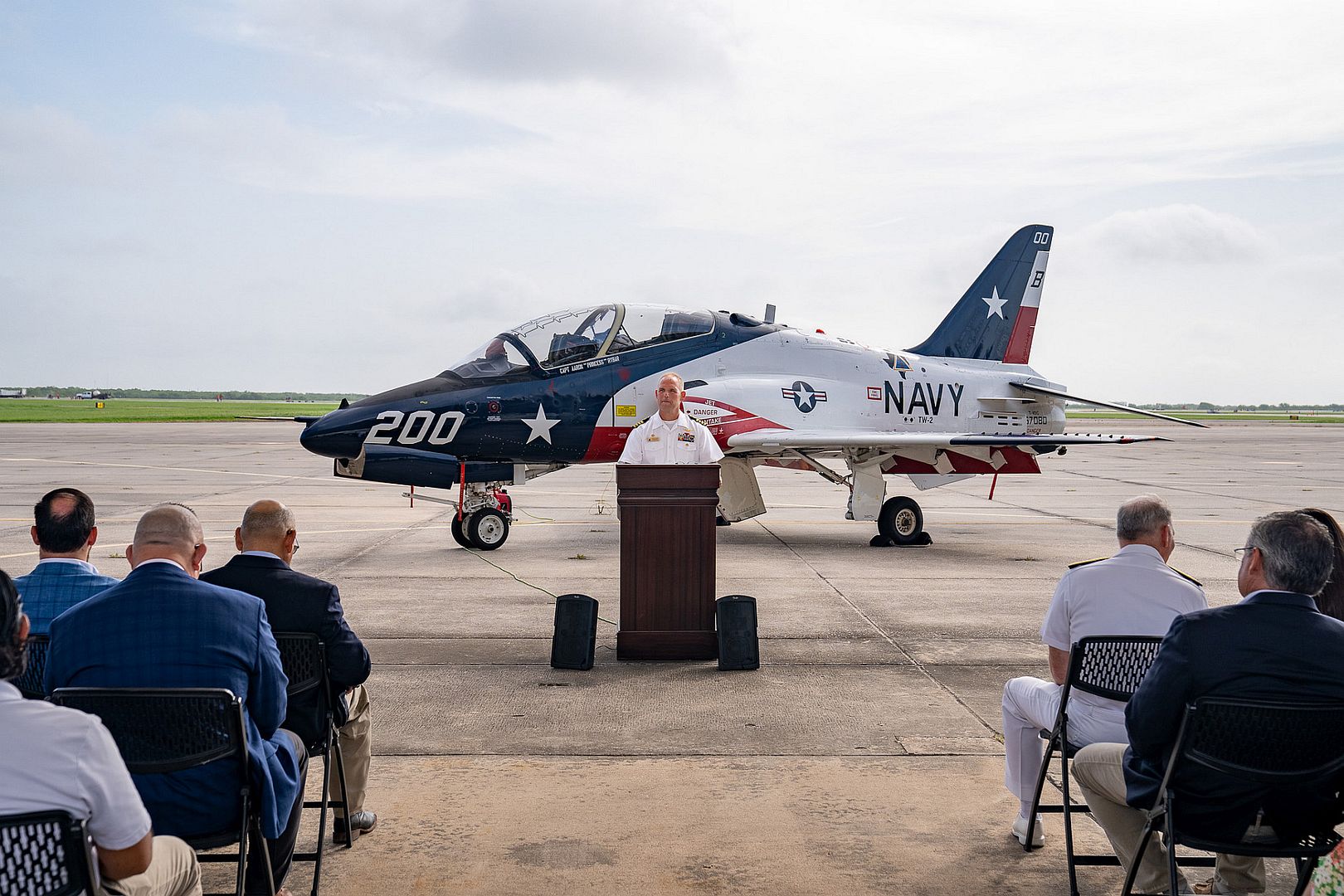
PACIFIC OCEAN (July 1, 2024) Sailors prepare to launch an EA-18G Growler, attached to the Shadowhawks of Electronic Attack Squadron (VAQ) 141, from the flight deck of the U.S. Navy’s only forward-deployed aircraft carrier, USS Ronald Reagan (CVN 76), in the Pacific Ocean, July 1. The primary role of EA-18G Growlers is to disrupt the ability to communicate between units in combat through the use of electronic warfare. Ronald Reagan, the flagship of Carrier Strike Group 5, provides a combat-ready force that protects and defends the United States, and supports alliances, partnerships and collective maritime interests in the Indo-Pacific region. (U.S. Navy photo by Mass Communication Specialist 3rd Class Kazia Ream)_141_from_the_flight_deck_of_the_U.S._Navy_s_only_forward-deployed_aircraft_carrier_USS_Ronald_Reagan.jpg?width=1920&height=1080&fit=bounds)
Marignane – Airbus has delivered the first H160 in the U.S. to PHI, marking the beginning of H160 operations in the country. This is the first of the initial four H160 helicopters that PHI will operate for offshore transportation in the Gulf of Mexico.
Prior to beginning commercial operations, the helicopter will be used in a route-proving programme designed to demonstrate the H160’s capabilities in the demanding offshore environment. This will help facilitate a smooth entry into service, ensuring the operator and final customer are familiar with the aircraft’s advanced technology and safety features.
“This is an exciting milestone for our teams and partners,” said Scott McCarty, CEO of PHI Group. “The H160 represents a new era for PHI, enhancing our commitment to safety, quality and efficiency for our operations in the Gulf of Mexico. We are proud to officially welcome this next-generation aircraft into our fleet as we kick off route-proving. Congratulations to everyone who helped make this achievement possible!”
“With its state-of-the-art technology, the H160 has set a new standard in the helicopter industry and we are pleased U.S. customers will now benefit from the aircraft’s superior performance,” said Bruno Even, CEO of Airbus Helicopters. “The H160’s lower fuel consumption, its ability to use up to 50% blended SAF, comfortable cabin, and excellent cockpit visibility make it ideally suited for offshore operations, and we are confident that it will excel in PHI’s energy missions.”
The H160 has proven to be a popular choice for customers in North America and the first Canadian delivery of the helicopter type was made recently to Chartright Air Group. The H160 has entered into service in Brazil, Japan, Saudi Arabia, France, and many other European countries.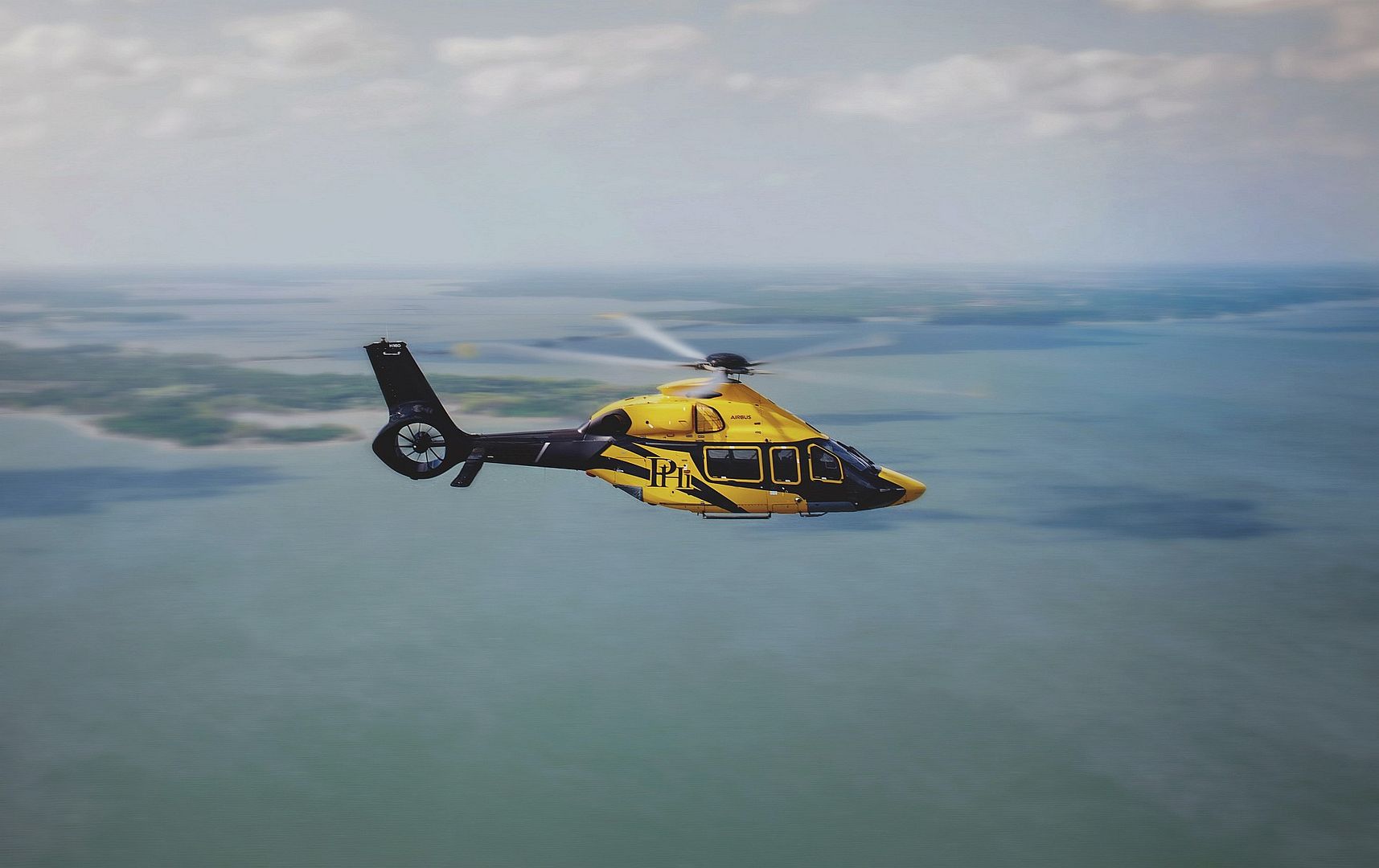
Some more photos from Aeronautica Militare's deployment to Australia to take part in the Pitch Black 2024.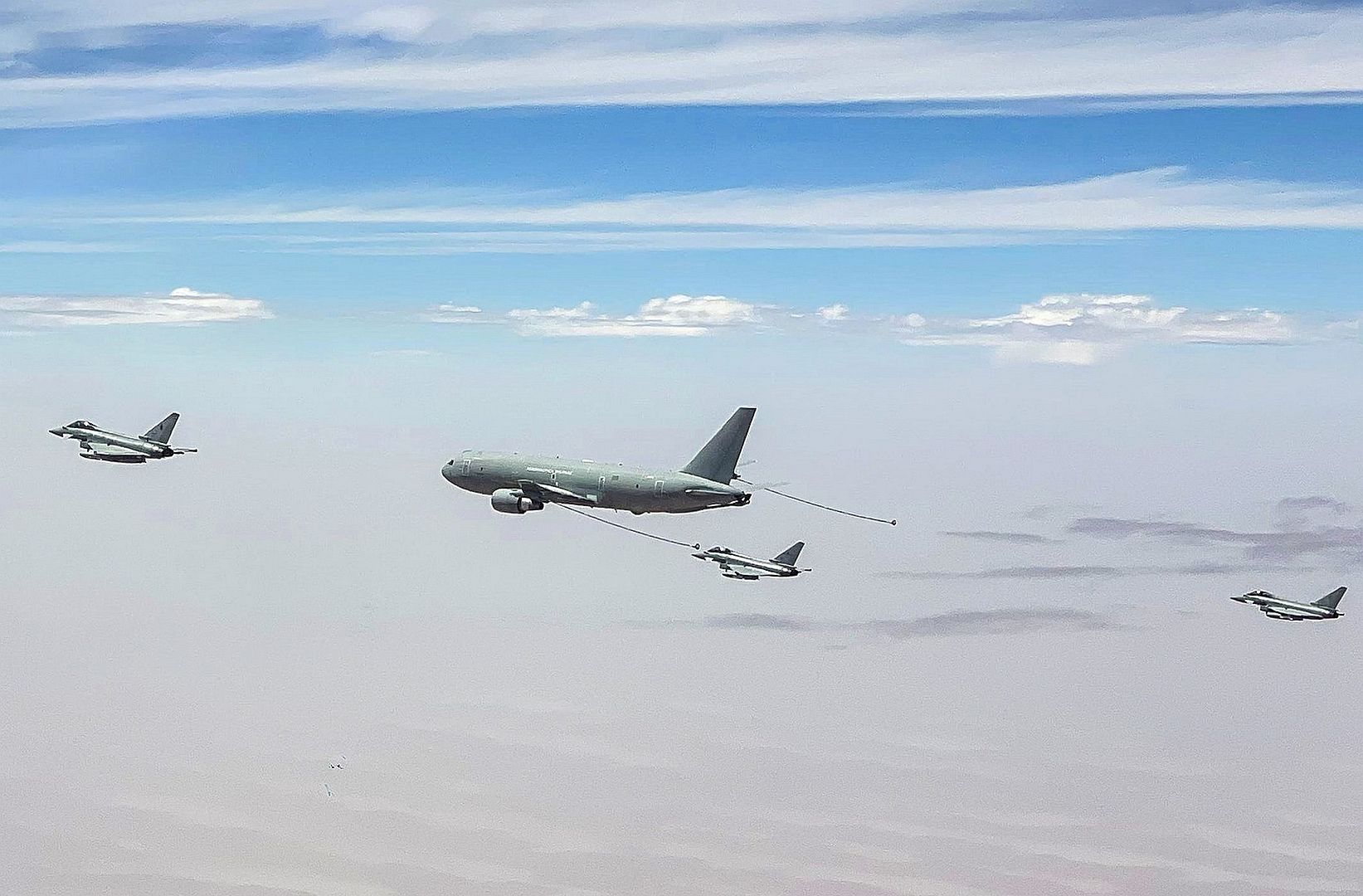
July 2, 2024 - The atolls of white beaches and the crystal blue of the Indian Ocean have opened the wonderful doors of the Maldives Islands, the second stage of the deployment of the Italian contingent
(Photos courtesy of the Aeronautica Militare)
-
 Main AdminU.S. Marines with Marine Medium Tiltrotor Squadron 268 (Reinforced), Marine Rotational Force – Darwin 24.3, take off in MV-22B Ospreys during an Exercise Predator’s Run warm start at Robertson Barracks, NT, Australia, July 3, 2024. Marines participated in a warm start planning exercise in preparation for Predator’s Run Warfighting Exercise. (U.S. Marine Corps photo by Cpl. Juan Torres)
Main AdminU.S. Marines with Marine Medium Tiltrotor Squadron 268 (Reinforced), Marine Rotational Force – Darwin 24.3, take off in MV-22B Ospreys during an Exercise Predator’s Run warm start at Robertson Barracks, NT, Australia, July 3, 2024. Marines participated in a warm start planning exercise in preparation for Predator’s Run Warfighting Exercise. (U.S. Marine Corps photo by Cpl. Juan Torres)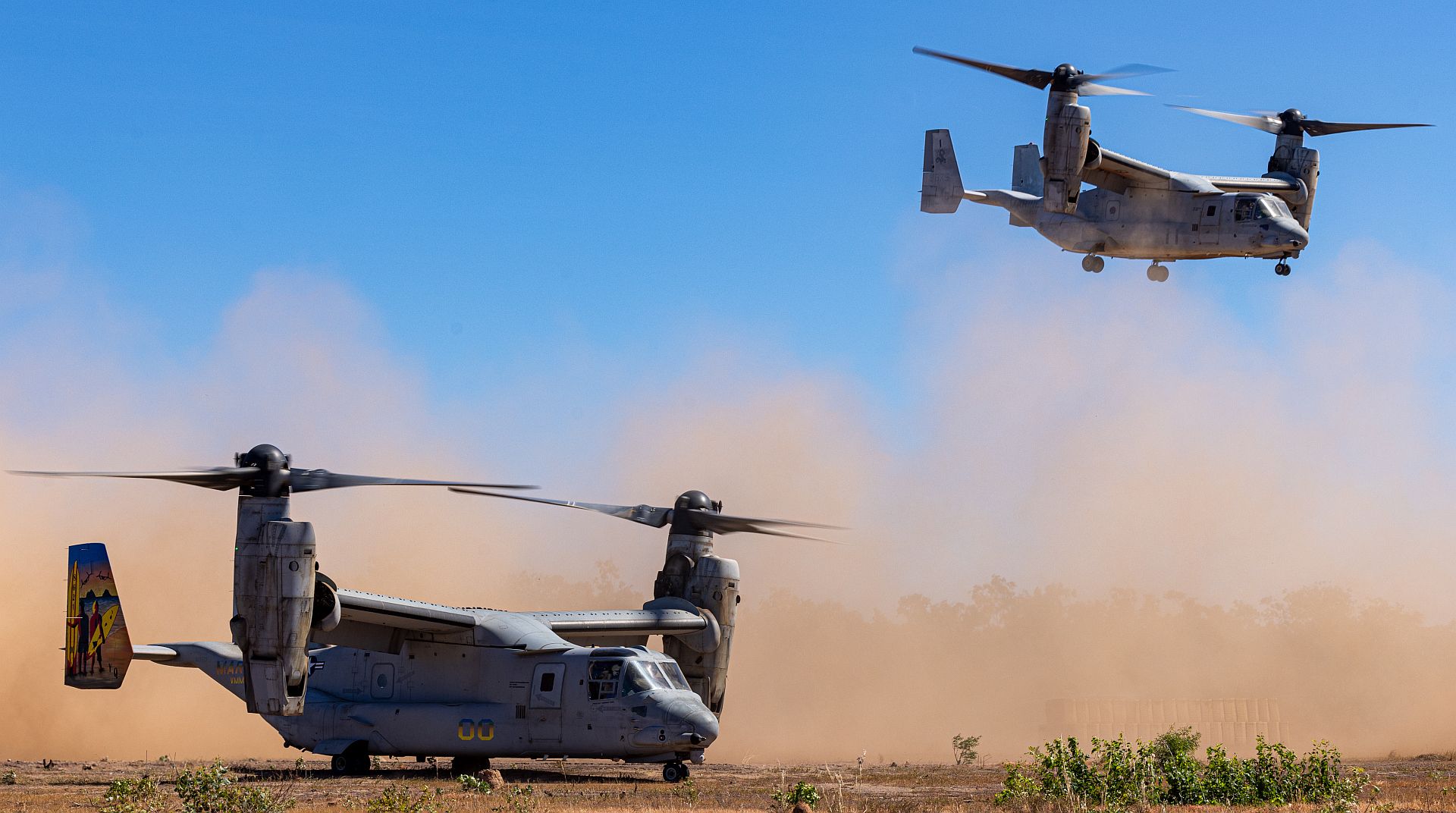
U.S. Marines with Marine Medium Tiltrotor Squadron 268 (Reinforced), Marine Rotational Force – Darwin 24.3, fly an MV-22B Osprey during an Exercise Predator’s Run warm start at Robertson Barracks, NT, Australia, July 3, 2024. Marines participated in a warm start planning exercise in preparation for Predator’s Run Warfighting Exercise. (U.S. Marine Corps photo by Cpl. Juan Torres)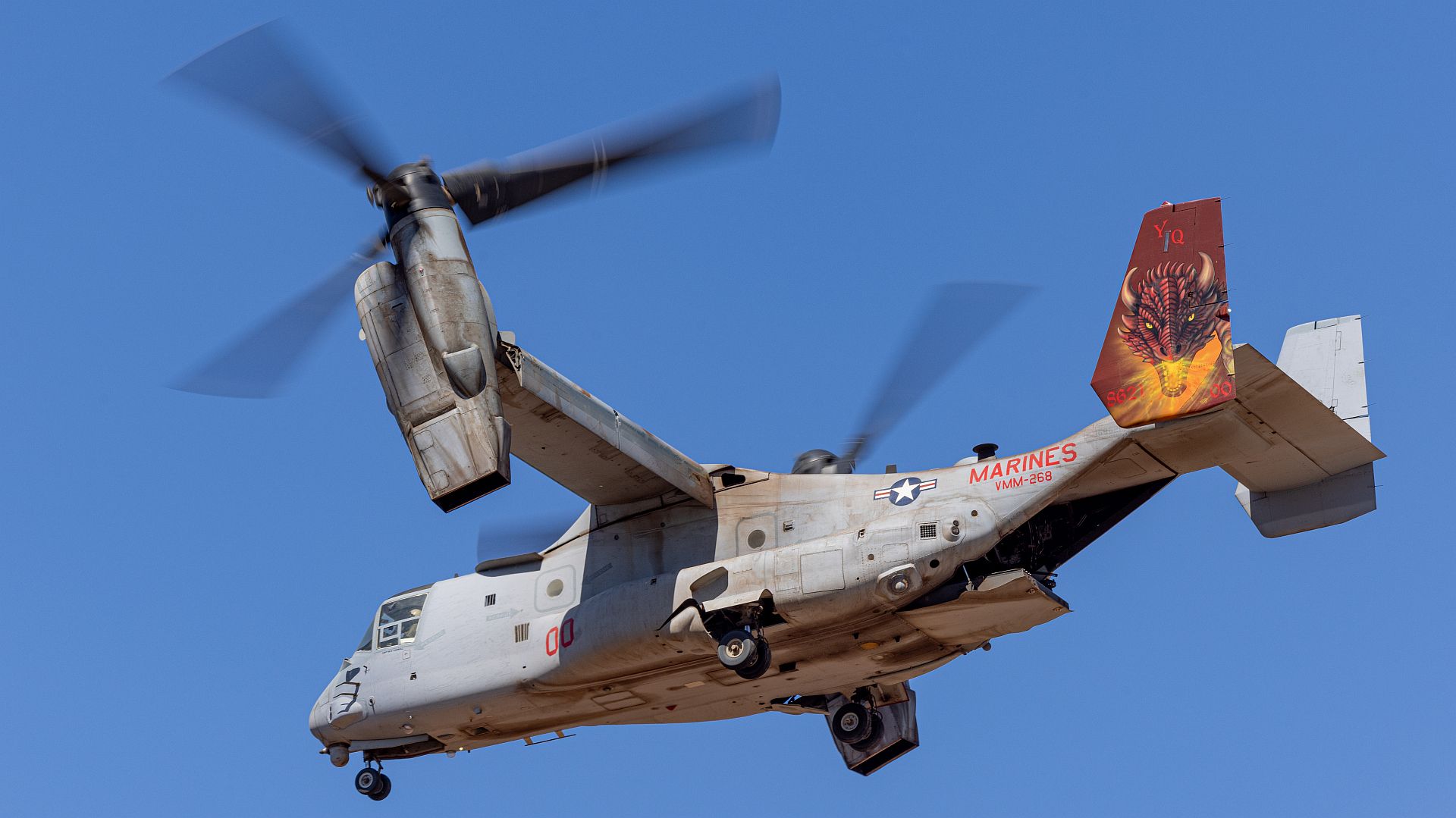
An MQ-9 Reaper stands ready for launch as maintainers and pilots from the 163d Attack Wing conduct final checks at March Air Reserve Base in Moreno Valley, California, on July 3rd, 2024. The unit's mission is to train future pilots and sensor operators, ensuring U.S. global readiness. The California Air National Guard remains on high alert for threats both foreign and domestic.
(Photo by Tech. Sgt. Paul Duquette)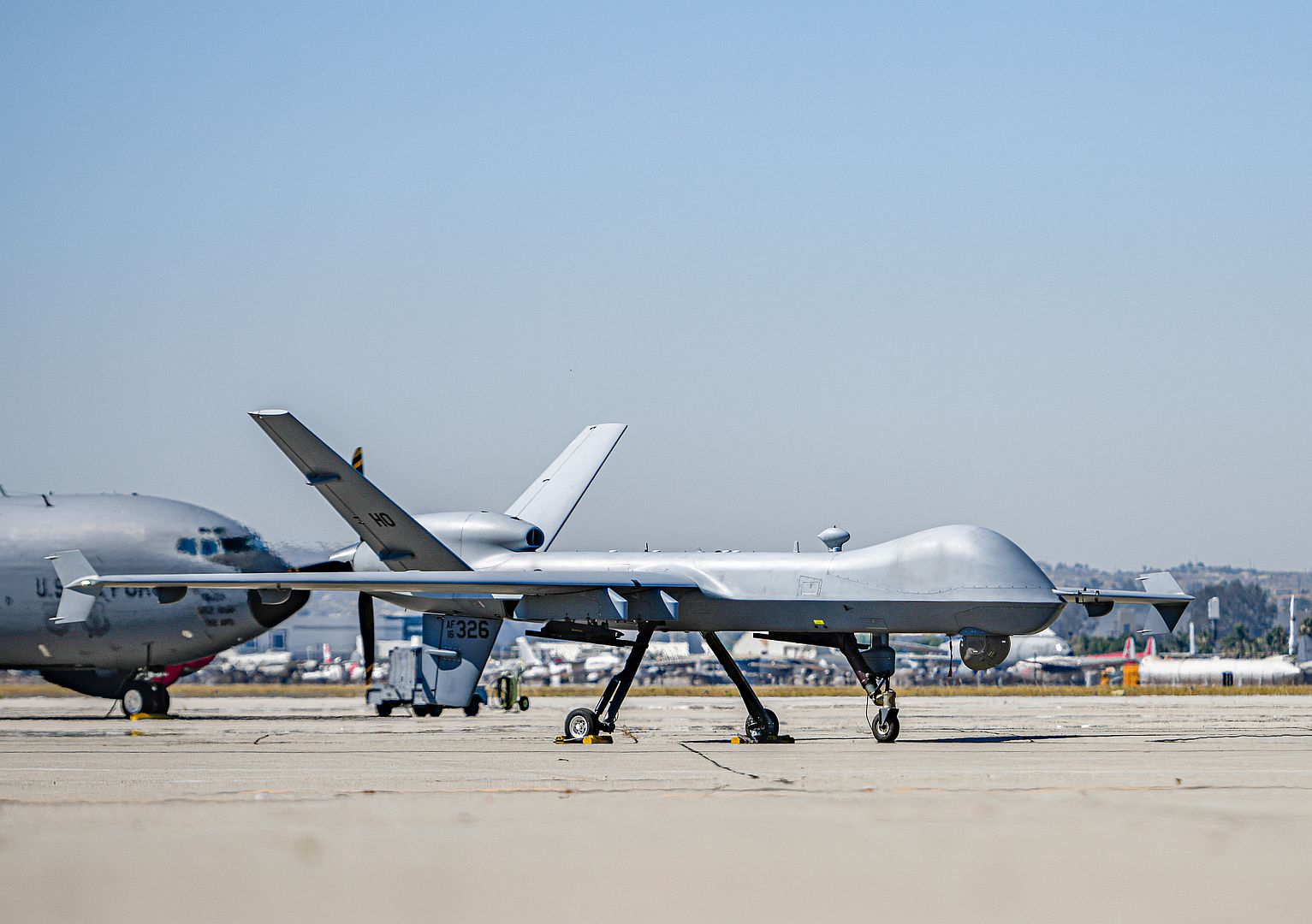
A German Air Force PA-200 Tornado lands at Joint Base Elmendorf-Richardson, during German Air Force-led deployment Pacific Skies 24 at JBER, Alaska, July 2, 2024. Aircraft and personnel have been conducting low-level flying training as part of the deployment. Pacific Skies is a combination of several exercises in the Indo-Pacific theater in which German, French and Spanish air forces participate with U.S. forces. (U.S. Air Force photo by Senior Airman Shelimar Rivera Rosado)
A German Air Force PA-200 Tornado takes off from Joint Base Elmendorf-Richardson, during German Air Force-led deployment Pacific Skies 24 at JBER, Alaska, July 2, 2024. Aircraft and personnel have been conducting low-level flying training as part of the deployment. Pacific Skies is a combination of several exercises in the Indo-Pacific theater in which German, French and Spanish air forces participate with U.S. forces. (U.S. Air Force photo by Senior Airman Shelimar Rivera Rosado)
A U.S. Air Force F-22 Raptor assigned to the 3rd Wing lands at Joint Base Elmendorf-Richardson during German Air Force-led deployment Pacific Skies 24 at JBER, Alaska, July 2, 2024. The Raptor is designed to project air dominance and cannot be matched by any known or projected fighter aircraft, providing power projection across the Indo-Pacific region. (U.S. Air Force photo by Senior Airman Shelimar Rivera Rosado)
PACIFIC OCEAN (July 3, 2024) An EA-18G Growler, attached to the Shadowhawks of Electronic Attack Squadron (VAQ) 141, launches from the flight deck of the U.S. Navy’s only forward-deployed aircraft carrier, USS Ronald Reagan (CVN 76), before air combat-skills practice in the Pacific Ocean, July 3. The primary role of EA-18G Growlers is to disrupt the ability to communicate between units in combat through the use of electronic warfare. Ronald Reagan, the flagship of Carrier Strike Group 5, provides a combat-ready force that protects and defends the United States, and supports alliances, partnerships and collective maritime interests in the Indo-Pacific region. (U.S. Navy photo by Mass Communication Specialist 2nd Class Timothy Dimal)_141_launches_from_the_flight_deck_of_the_U.S._Navy_s_only_forward-deployed_aircraft_carrier_USS_Ronald_Reagan_kXqTPPXpN7HNMpTMiauGbh.jpg?width=1920&height=1080&fit=bounds)
A German Air Force PA-200 Tornado takes off with U.S. Air Force Lt. Gen. David Nahom, commander, Alaskan North American Aerospace Defense Command Region, Alaskan Command and Eleventh Air Force, flying in the backseat during German Air Force-led deployment Pacific Skies 24 at Joint Base Elmendorf-Richardson, Alaska, July 1, 2024. Aircraft and personnel have been conducting low-level flying training as part of the deployment. Pacific Skies is a combination of several exercises in the Indo-Pacific theater in which German, French and Spanish air forces participate with U.S. forces. (U.S. Air Force photo by Senior Airman Julia Lebens)
-
 Main AdminA Royal Canadian Air Force P-3 Orion and its crew arrive at Joint Base Pearl Harbor-Hickam, Hawaii, to participate in Exercise Rim of the Pacific (RIMPAC) 2024, July 3. Twenty-nine nations, 40 surface ships, three submarines, 14 national land forces, more than 150 aircraft and 25,000 personnel are participating in RIMPAC in and around the Hawaiian Islands, June 27 to Aug. 1. The world's largest international maritime exercise, RIMPAC provides a unique training opportunity while fostering and sustaining cooperative relationships among participants critical to ensuring the safety of sea lanes and security on the world's oceans. RIMPAC 2024 is the 29th exercise in the series that began in 1971. (U.S. Navy Photo by Mass Communication Specialist 1st Class William Sykes)
Main AdminA Royal Canadian Air Force P-3 Orion and its crew arrive at Joint Base Pearl Harbor-Hickam, Hawaii, to participate in Exercise Rim of the Pacific (RIMPAC) 2024, July 3. Twenty-nine nations, 40 surface ships, three submarines, 14 national land forces, more than 150 aircraft and 25,000 personnel are participating in RIMPAC in and around the Hawaiian Islands, June 27 to Aug. 1. The world's largest international maritime exercise, RIMPAC provides a unique training opportunity while fostering and sustaining cooperative relationships among participants critical to ensuring the safety of sea lanes and security on the world's oceans. RIMPAC 2024 is the 29th exercise in the series that began in 1971. (U.S. Navy Photo by Mass Communication Specialist 1st Class William Sykes)_2024_July_3..jpg?width=1920&height=1080&fit=bounds)
PACIFIC OCEAN (July 3, 2024) An F/A-18F Super Hornet, attached to the Diamondbacks of Strike Fighter Squadron (VFA) 102, launches from the flight deck of the U.S. Navy’s only forward-deployed aircraft carrier, USS Ronald Reagan (CVN 76), before air combat-skills practice in the Pacific Ocean, July 3. The Diamondbacks conduct carrier-based air strikes and strike force escort missions, as well as ship, battle group, and intelligence collection operations. Ronald Reagan, the flagship of Carrier Strike Group 5, provides a combat-ready force that protects and defends the United States, and supports alliances, partnerships and collective maritime interests in the Indo-Pacific region. (U.S. Navy photo by Mass Communication Specialist 2nd Class Eric Stanton)_102_launches_from_the_flight_deck_of_the_U.S._Navy_s_only_forward-deployed_aircraft_carrier_USS_Ronald_Reagan_5gGPysR8YMm5FCsimZ545M.jpg?width=1920&height=1080&fit=bounds)
The RAF is sending aircraft and personnel to join two major exercises in the Indo-Pacific Region this summer. One exercise will be based in Australia and the other Hawaii.
To get to Australia, the RAF is taking the opportunity to work with the French Air and Space Force, conducting a joint activity to get both nation’s aircraft to Australia.
The Anglo-French ‘Trail’ will be under the control of the Combined Joint Expeditionary Force, a force set up by the two nations to promote closer defence co-operation. Branded as Exercise Griffin Strike, airborne tanker aircraft and transport aircraft from both nations will support fighter aircraft on the nearly 10000-mile journey.
The two nations' aircraft will assemble in Lyon, southern France and after stops in the Middle East and Singapore, they will arrive in Darwin Australia. Here the aircraft will join the Royal Australian Air Force led multi nation Exercise Pitch Black.
Held biennially, Exercise Pitch Black is the Royal Australian Air Force’s capstone air war fighting exercise. Typhoons from RAF Coningsby based XI (F) Squadron, supported by a RAF Brize Norton based Voyager, will join units from nineteen other nations for the three-week exercise. In addition, the RAF’s Air Mobility Force will provide transport aircraft to enable the participation and subsequent recovery to the UK.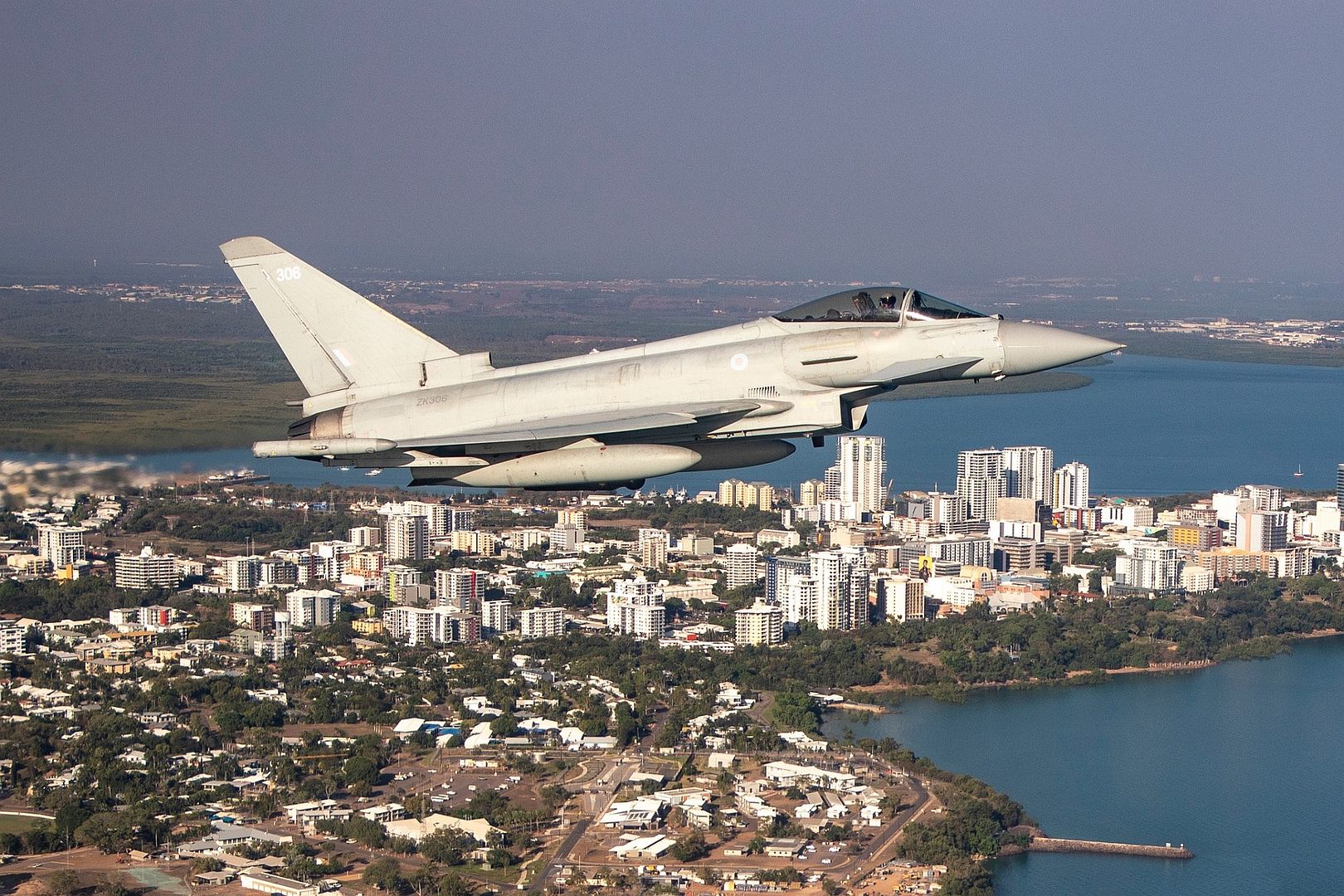
At the same time as Exercise Pitch Black, the annual US Navy led Rim of the Pacific exercise, known as RIMPAC, will see RAF Poseidon P-8 Maritime Patrol Aircraft participate for the first time. This will be the furthest range and longest duration exercise for the RAF Poseidon Force to date. The training will see the maritime patrol aircraft crews operate in a wide variety of operational scenarios including disaster relief.
The participation in exercises such as RIMPAC and Exercise Pitch Black is essential training for the RAF, as it allows the deploying elements to experience the challenges of operating over vast distances in the region, as well as integrating with regional Allies and partners to understand their procedures and operating practices.
(Photos courtesy of the RAF)
Poseidon adventure! Operation Gateway, Australia’s longest running Defence operation has successfully concluded following a #AusAirForce P-8A Poseidon deployment from Royal Malaysian Air Force Base (RMAF) Butterworth.
The maritime domain awareness operation involved patrols along some of the world’s busiest shipping routes in the North Indian Ocean and South China Sea.
(Photo courtesy of the RAAF)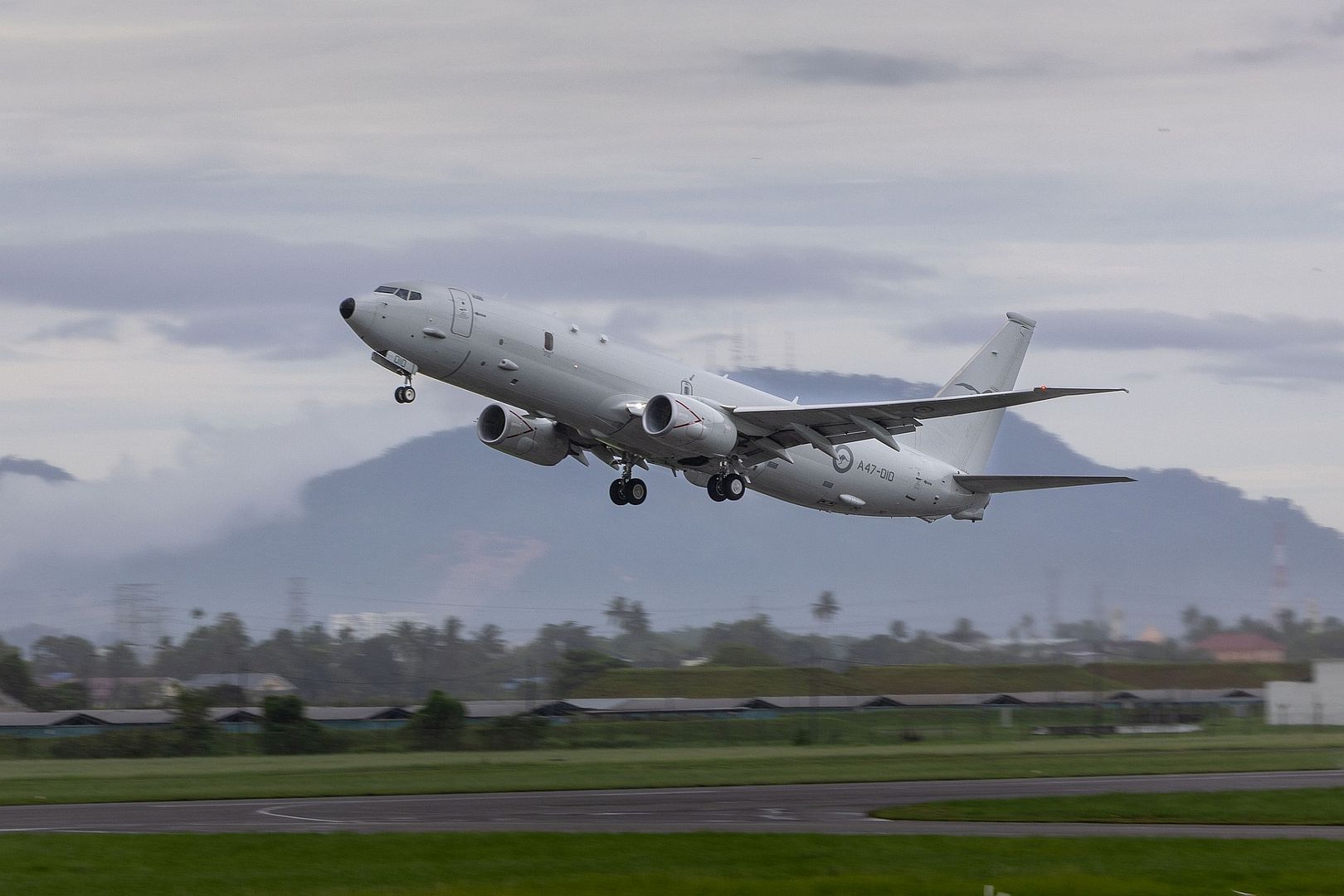
Three Rafale from the 4th Saint-Dizier Fighter Squadron were deployed to Guyana on July 1st to strengthen protection of the Guyana Space Centre ahead of the launch of the Ariane 6 rocket.
(Photos courtesy of the Armée de l'Air et de l'Espace)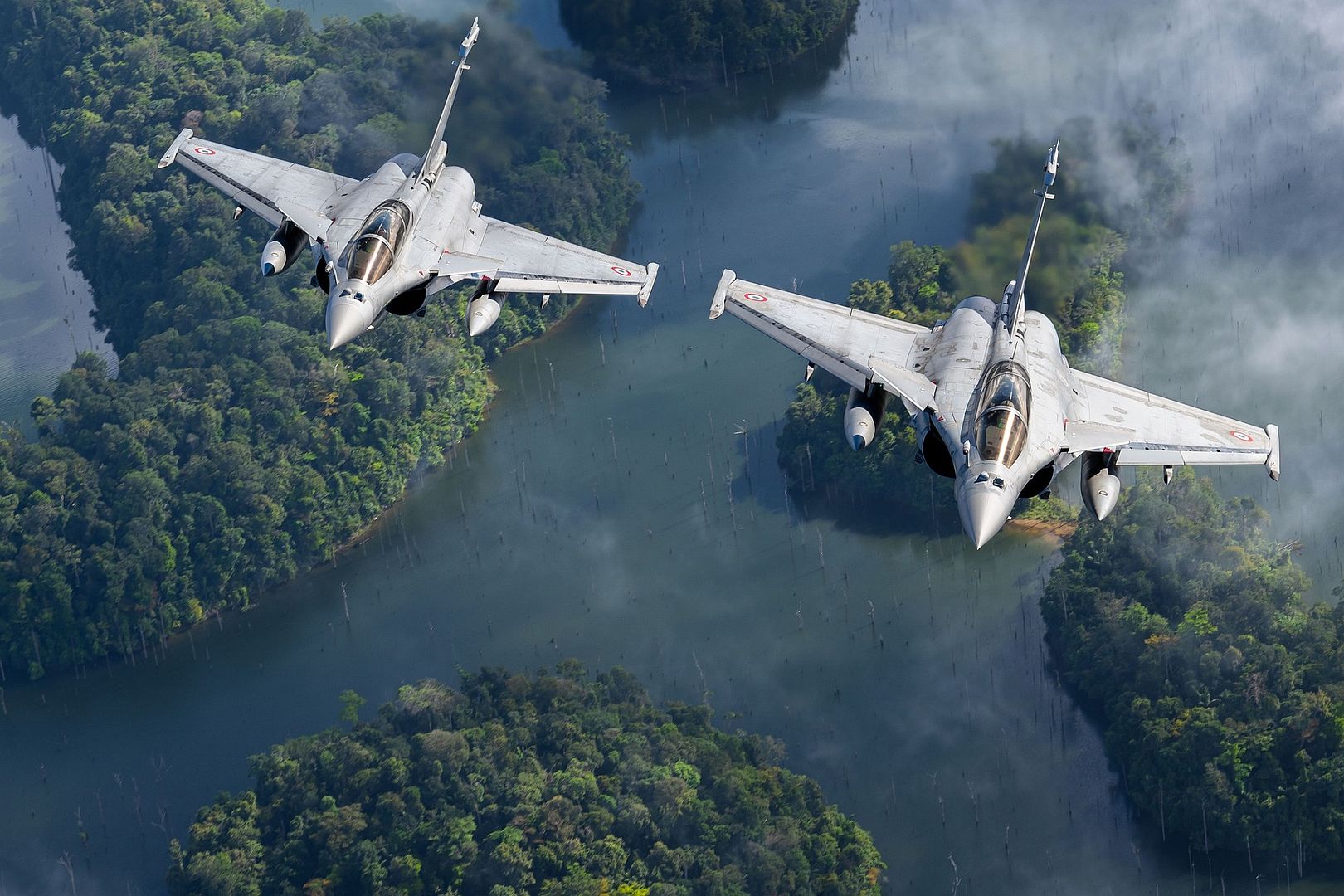

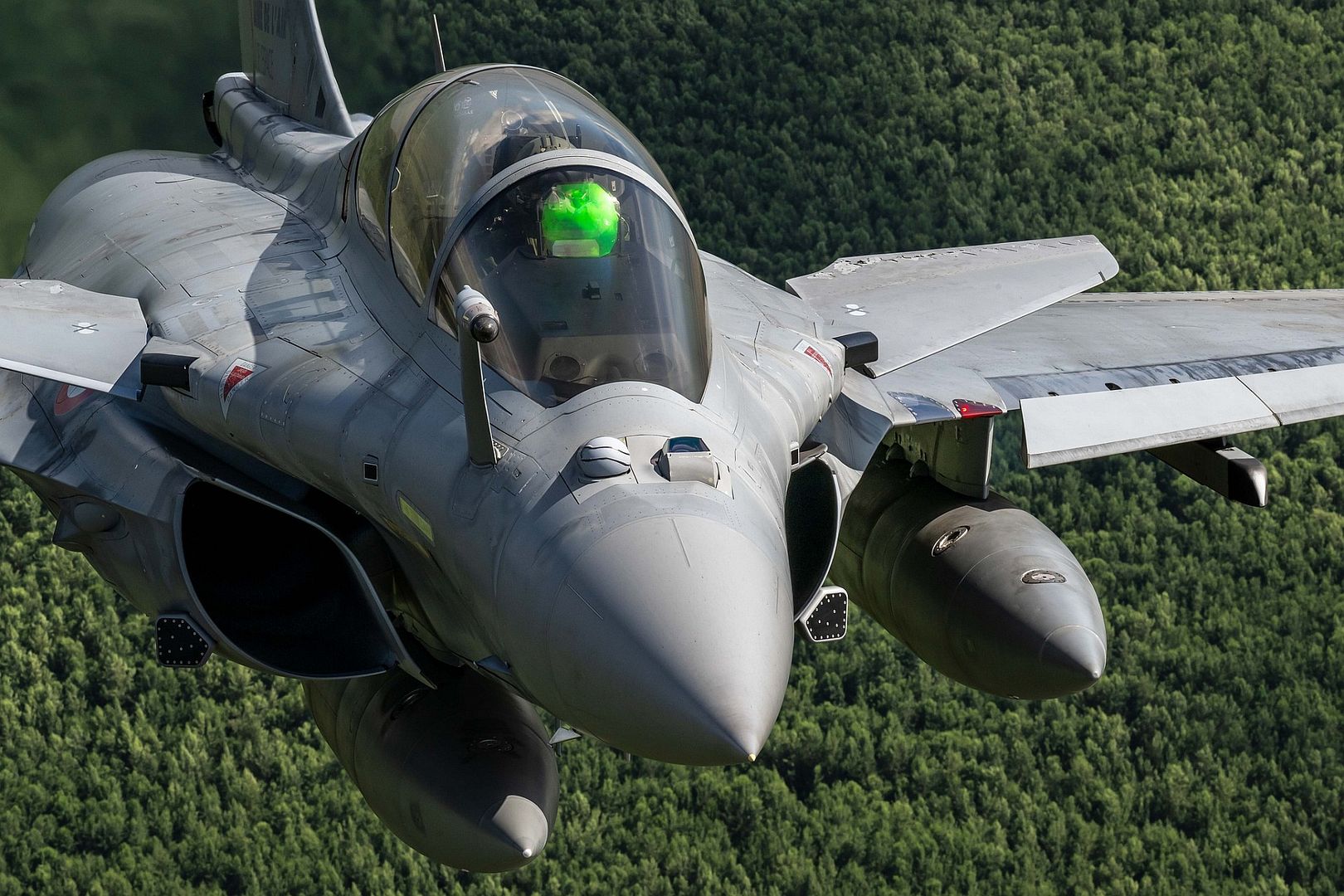
Darwin (Australia) 5th July 2024 - Here we go! We have arrived in Darwin, the capital of the Northern Territory, Australia.
For the next 3 weeks this city will be the new home for over 400 MilitaryAirforce women and men for the exercise “Pitch Black 2024” as part of the Indo-Pacific air campaign.
(Photo courtesy of the Aeronautica Militare)
-
 Main AdminPACIFIC OCEAN (July 6, 2024) Sailors maneuver an F/A-18F Super Hornet, attached to the Diamondbacks of Strike Fighter Squadron (VFA) 102, on the flight deck of the U.S. Navy’s only forward-deployed aircraft carrier, USS Ronald Reagan (CVN 76), in the Pacific Ocean, July 6. The Diamondbacks conduct carrier-based air strikes and strike force escort missions, as well as ship, battle group, and intelligence collection operations. Ronald Reagan, the flagship of Carrier Strike Group 5, provides a combat-ready force that protects and defends the United States, and supports alliances, partnerships and collective maritime interests in the Indo-Pacific region. (U.S. Navy photo by Mass Communication Specialist 2nd Class Eric Stanton)
Main AdminPACIFIC OCEAN (July 6, 2024) Sailors maneuver an F/A-18F Super Hornet, attached to the Diamondbacks of Strike Fighter Squadron (VFA) 102, on the flight deck of the U.S. Navy’s only forward-deployed aircraft carrier, USS Ronald Reagan (CVN 76), in the Pacific Ocean, July 6. The Diamondbacks conduct carrier-based air strikes and strike force escort missions, as well as ship, battle group, and intelligence collection operations. Ronald Reagan, the flagship of Carrier Strike Group 5, provides a combat-ready force that protects and defends the United States, and supports alliances, partnerships and collective maritime interests in the Indo-Pacific region. (U.S. Navy photo by Mass Communication Specialist 2nd Class Eric Stanton)_102_on_the_flight_deck_of_the_U.S._Navy_s_only_forward-deployed_aircraft_carrier_USS_Ronald_Reagan_uw2Gw7yR3vref5APP5YGTD.jpg?width=1920&height=1080&fit=bounds)
PACIFIC OCEAN (July 6, 2024) Sailors conduct flight operations as an EA-18G Growler, attached to the Shadowhawks of Electronic Attack Squadron (VAQ) 141, maneuvers on the flight deck of the U.S. Navy’s only forward-deployed aircraft carrier, USS Ronald Reagan (CVN 76), in the Pacific Ocean, July 6. The primary role of EA-18G Growlers is to disrupt the ability to communicate between units in combat through the use of electronic warfare. Ronald Reagan, the flagship of Carrier Strike Group 5, provides a combat-ready force that protects and defends the United States, and supports alliances, partnerships and collective maritime interests in the Indo-Pacific region. (U.S. Navy photo by Mass Communication Specialist 2nd Class Eric Stanton)_141_maneuvers_on_the_flight_deck_of_the_U.S._Navy_s_only_forward-deployed_aircraft_carrier_USS_Ronald_Reagan.jpg?width=1920&height=1080&fit=bounds)
A CMV-22B Osprey, attached to Fleet Logistics Multi-Mission Squadron (VRM) 30, takes off from on the flight deck of Nimitz-class aircraft carrier USS George Washington (CVN 73) while underway in the Pacific Ocean, July 7, 2024. As an integral part of U.S. Pacific Fleet, U.S. 3rd Fleet operates naval forces in the Indo-Pacific in addition to providing realistic and relevant training necessary to flawlessly execute our Navy’s timeless roles of sea control and power projection. U.S. 3rd Fleet works in close coordination with other numbered fleets to provide commanders with capable, ready forces to deploy forward and win in day-today competition, in crisis, and in conflict. (U.S. Navy photo by Mass Communication Specialist 3rd Class August Y. Clawson)_30_takes_off_from_on_the_flight_deck_of_Nimitz-class_aircraft_carrier_USS_George_Washington.jpg?width=1920&height=1080&fit=bounds)
Royal Air Force personnel and aircraft have deployed to Hawaii for the largest military training exercise in the region.
Two Poseidon MRA1 (P-8A) maritime patrol aircraft have arrived at Hickam Air Force Base to join over 25,000 personnel from 28 other nations participating in Rim of the Pacific 24 (RIMPAC).
The biennial exercise will see members of CXX and 201 Squadrons fly and train alongside other maritime patrol squadrons, fighter aircraft, 40 surface ships and three submarines. Engineering and operations support personnel will also operate alongside multinational colleagues, with others embedded within the exercise headquarters.
(Photo courtesy of the RAF)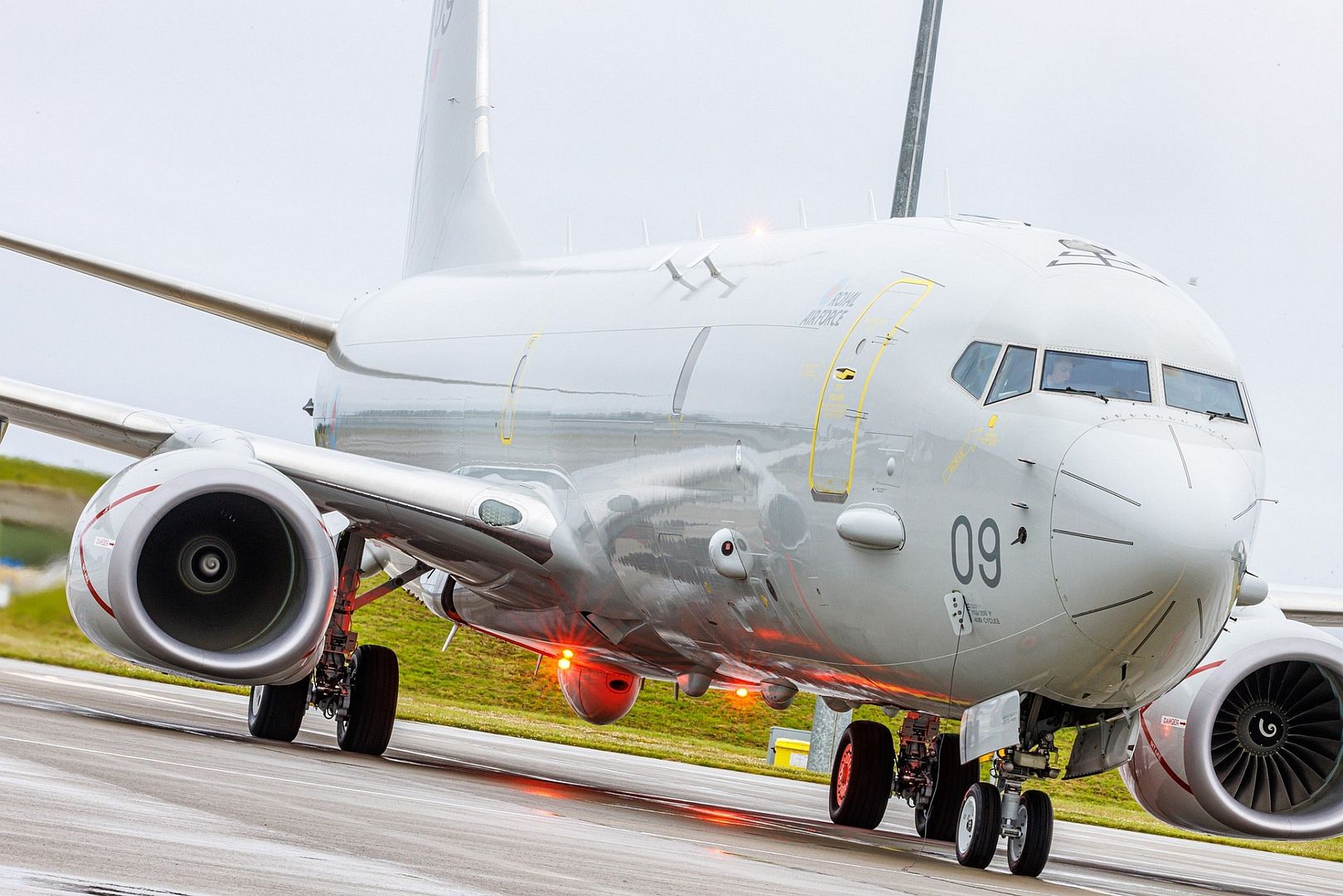
The CF-18 Hornet Extension Project (HEP) has achieved Initial Operational Capability, delivering the first six operational aircraft as part of phase 2 of the project. The HEP remains on schedule to achieve Full Operational Capability by March 2026.
Six operational CF-18s have been delivered to 3 Wing Bagotville as part of the Hornet Extension Project. This provides new capabilities to the CF-18 fleet, allowing it to contribute to domestic and international missions as we transition to the new CF-35 fighter aircraft.
(Photo courtesy of the RCAF)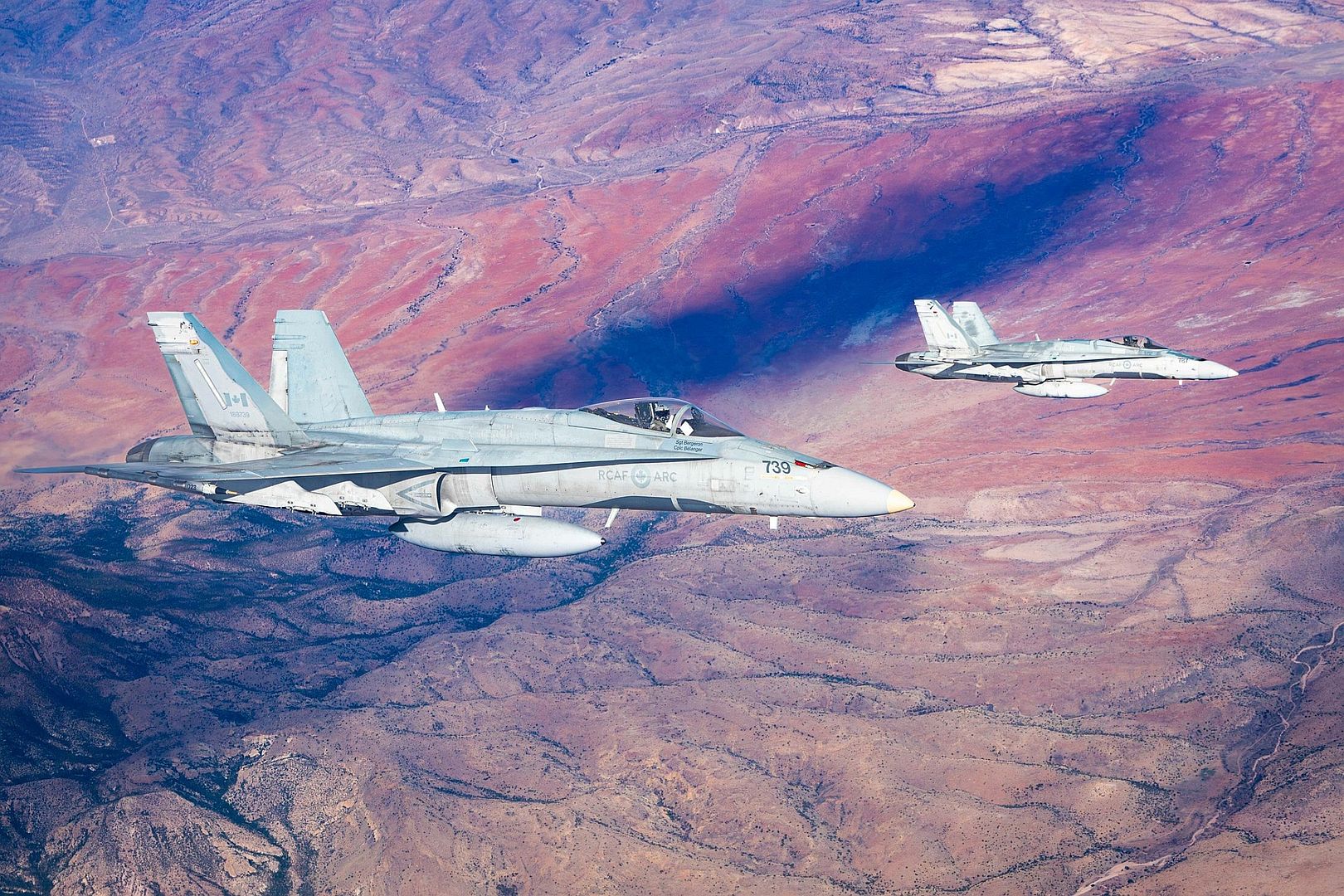
Some more photos courtesy of the RAAF, of arrivals at RAAF Base Darwin.for Exercise Pitch Black 24.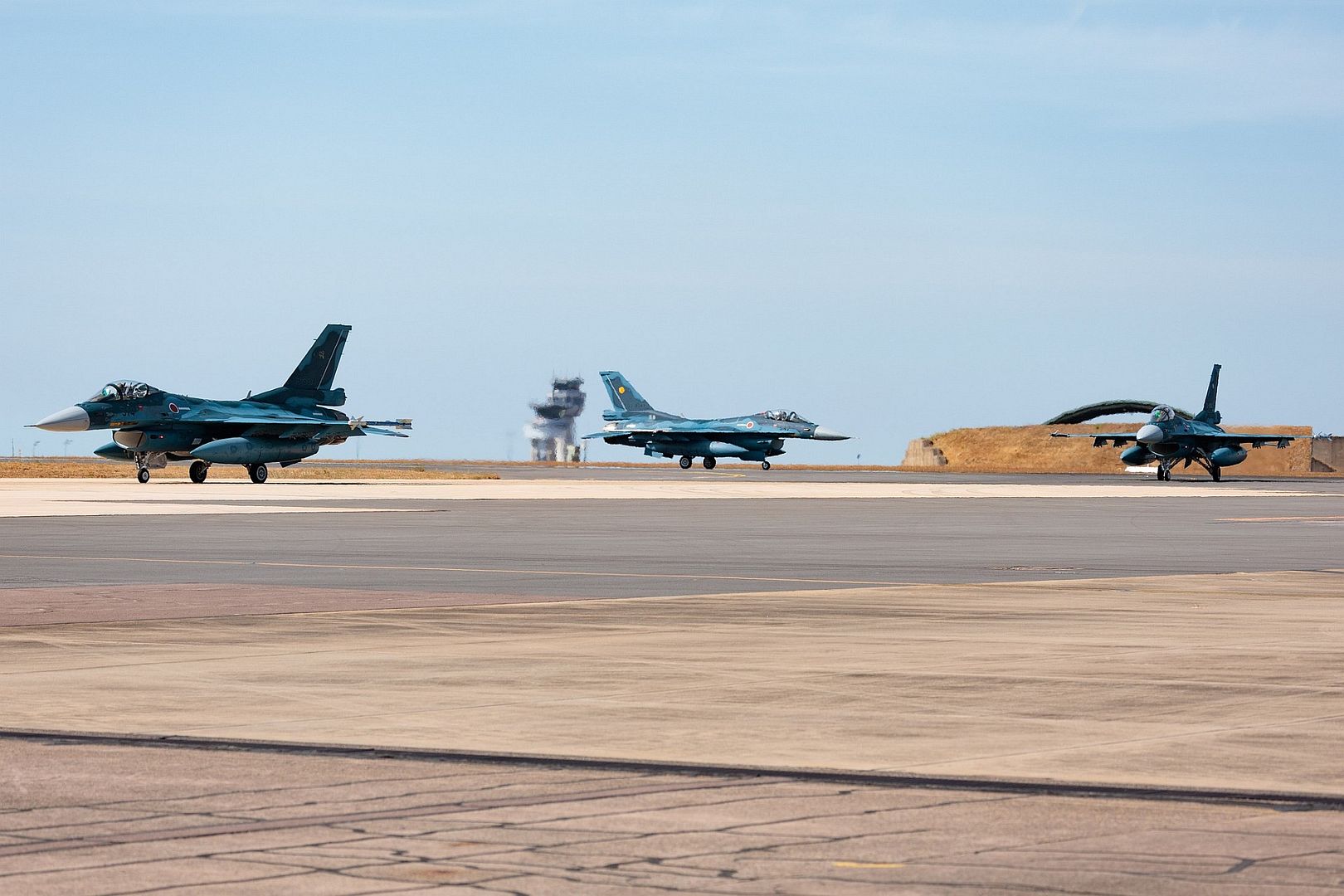
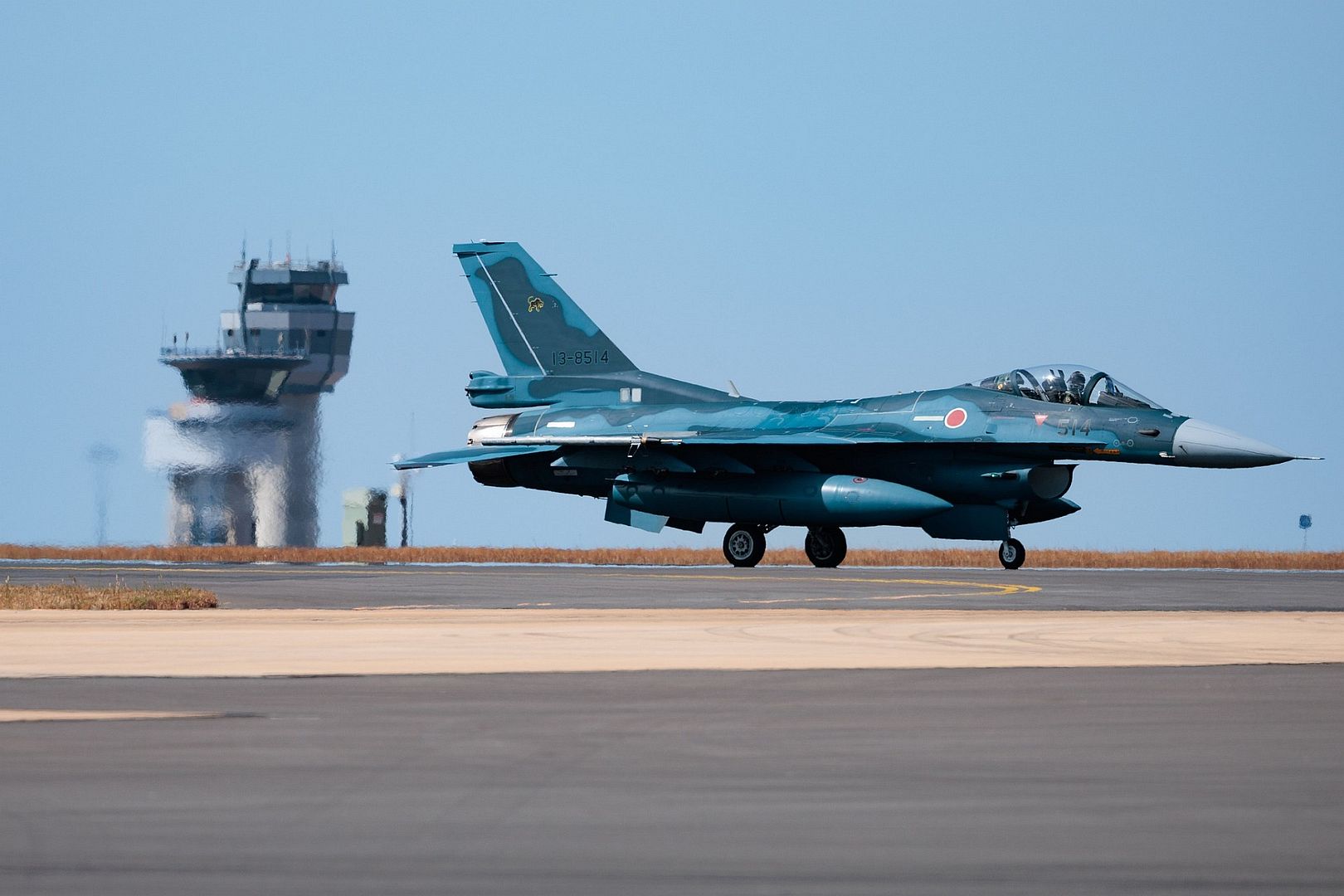


-
 Main AdminA German Air Force Eurofighter Typhoon flies over Alaska during exercise Arctic Defender 24 at Joint Base Elmendorf-Richardson, Alaska, July 8, 2024. Arctic Defender is a German Air Force-led exercise that provides a unique opportunity to integrate various forces into joint, coalition and multilateral training from simulated forward operating bases and is part of several exercises under Pacific Skies 24. Pacific Skies is a combination of several exercises in the Indo-Pacific theater in which German, French and Spanish air forces participate with U.S. forces. (U.S. Air Force photos Senior Airman Shelimar Rivera Rosado)
Main AdminA German Air Force Eurofighter Typhoon flies over Alaska during exercise Arctic Defender 24 at Joint Base Elmendorf-Richardson, Alaska, July 8, 2024. Arctic Defender is a German Air Force-led exercise that provides a unique opportunity to integrate various forces into joint, coalition and multilateral training from simulated forward operating bases and is part of several exercises under Pacific Skies 24. Pacific Skies is a combination of several exercises in the Indo-Pacific theater in which German, French and Spanish air forces participate with U.S. forces. (U.S. Air Force photos Senior Airman Shelimar Rivera Rosado)
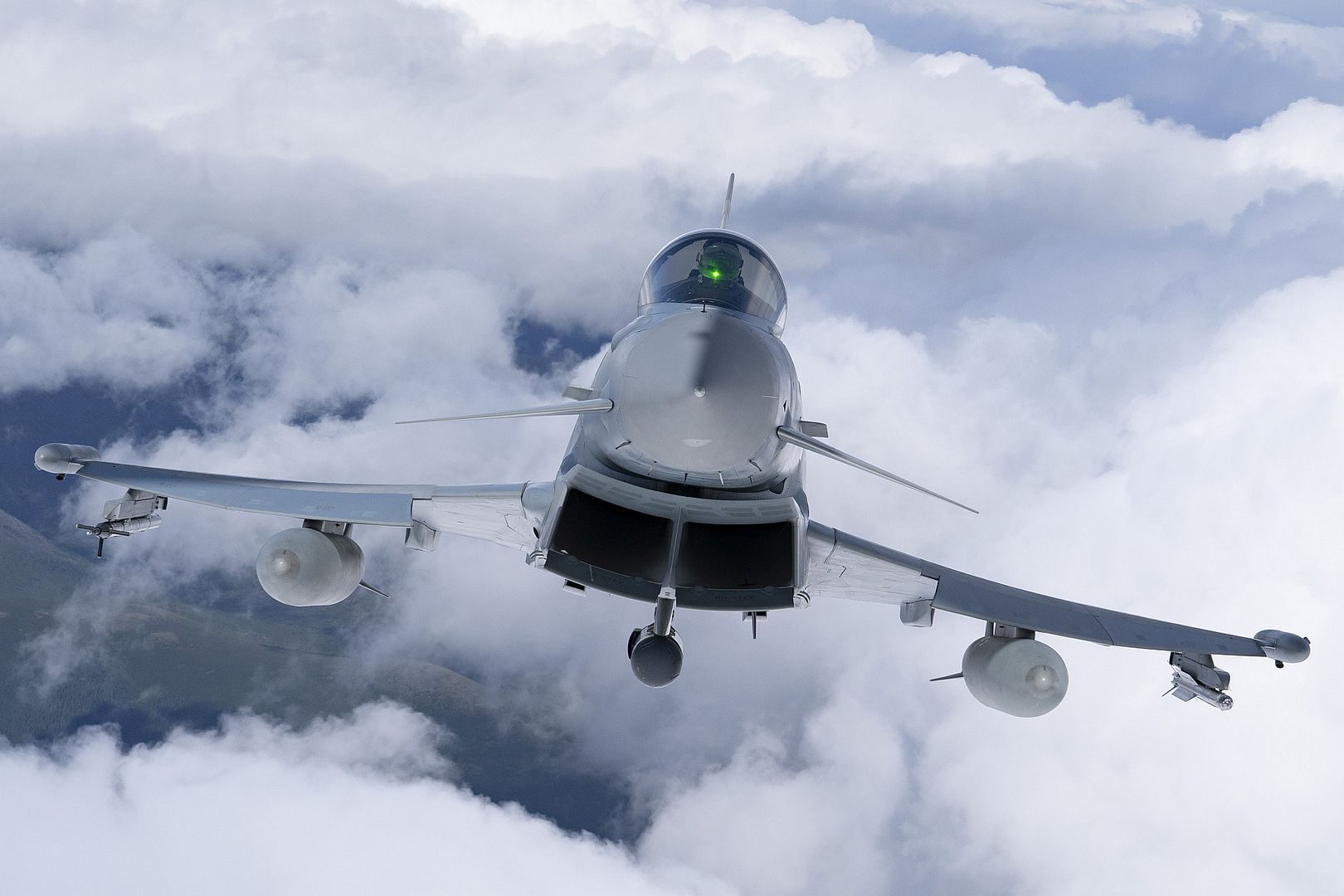
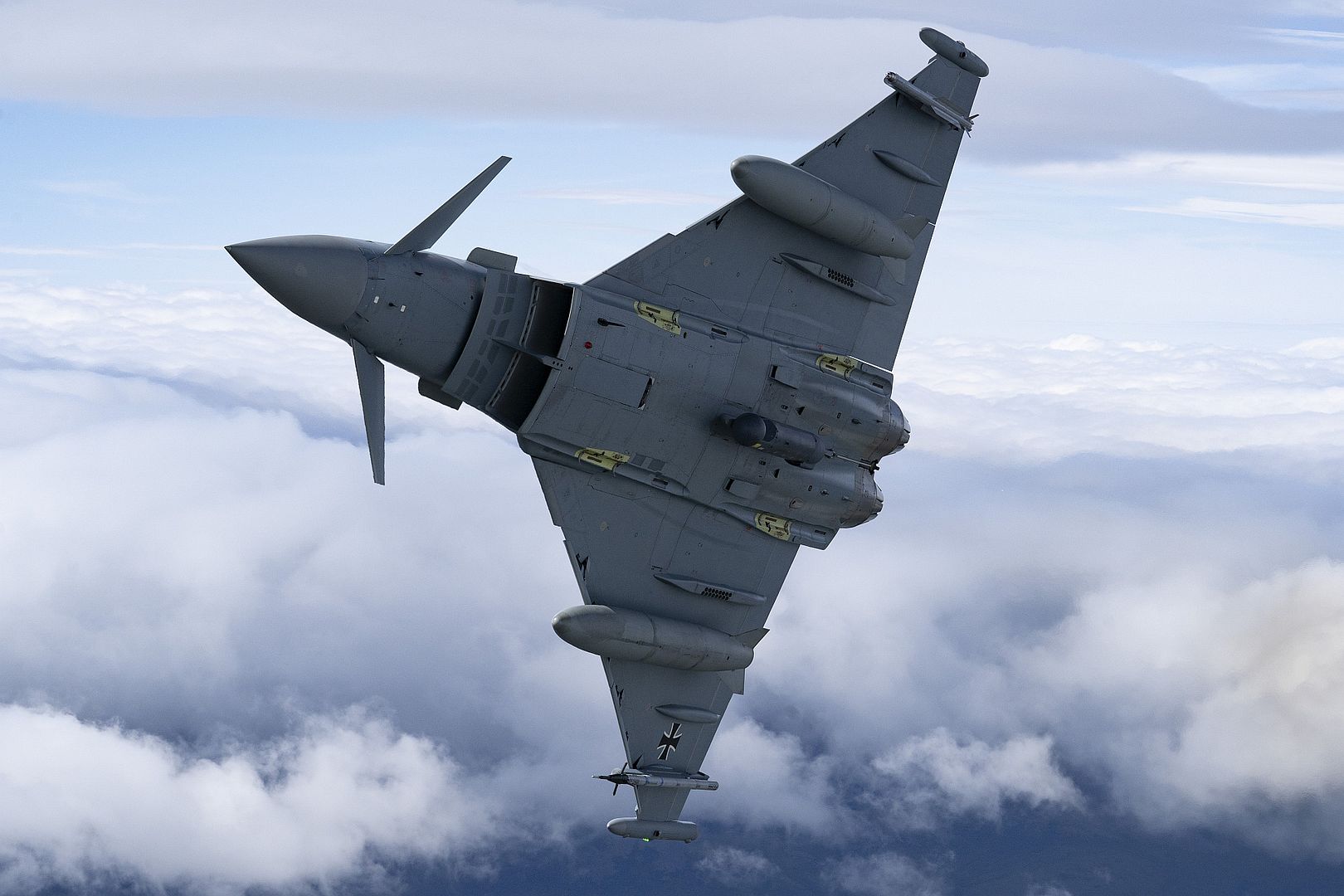
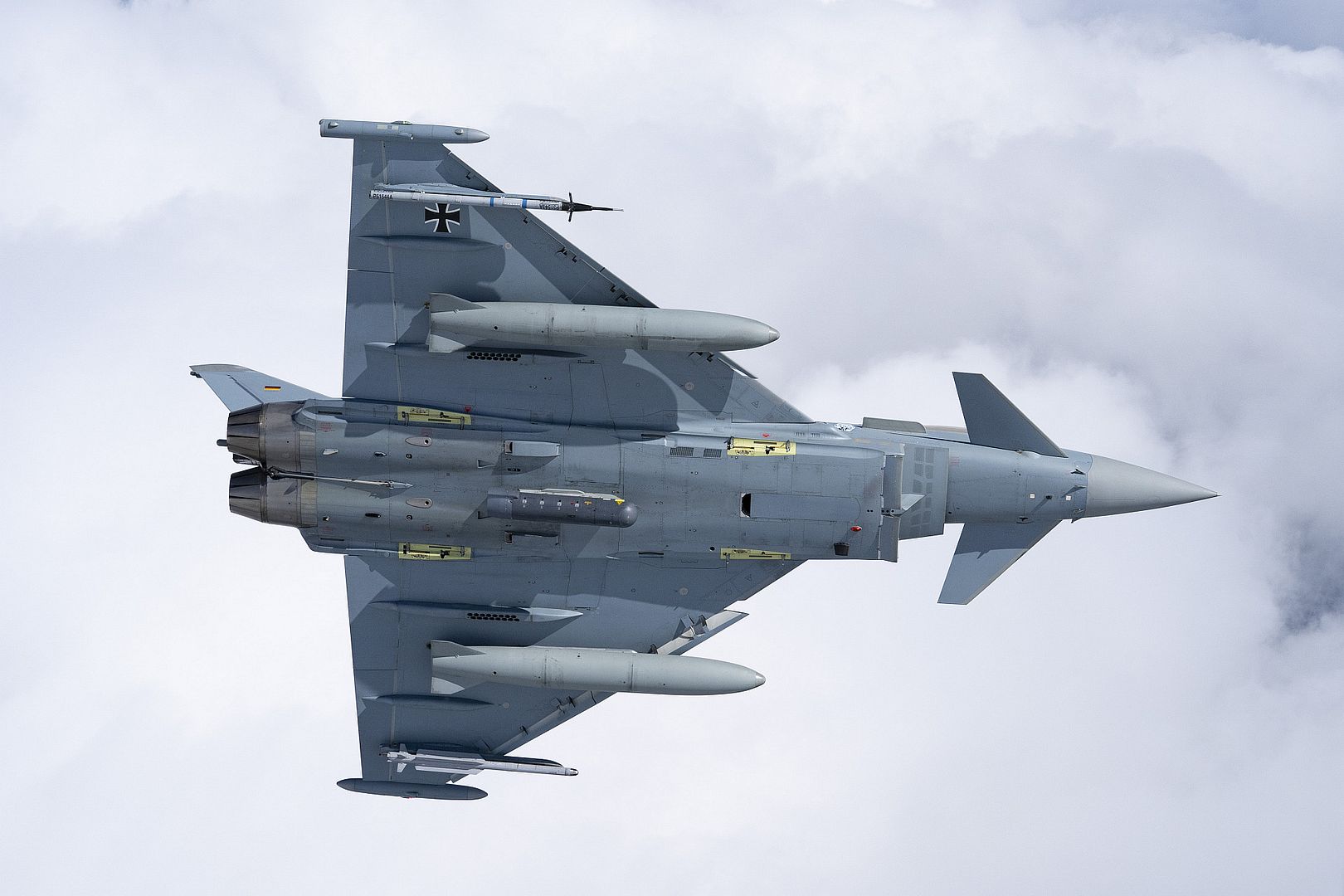
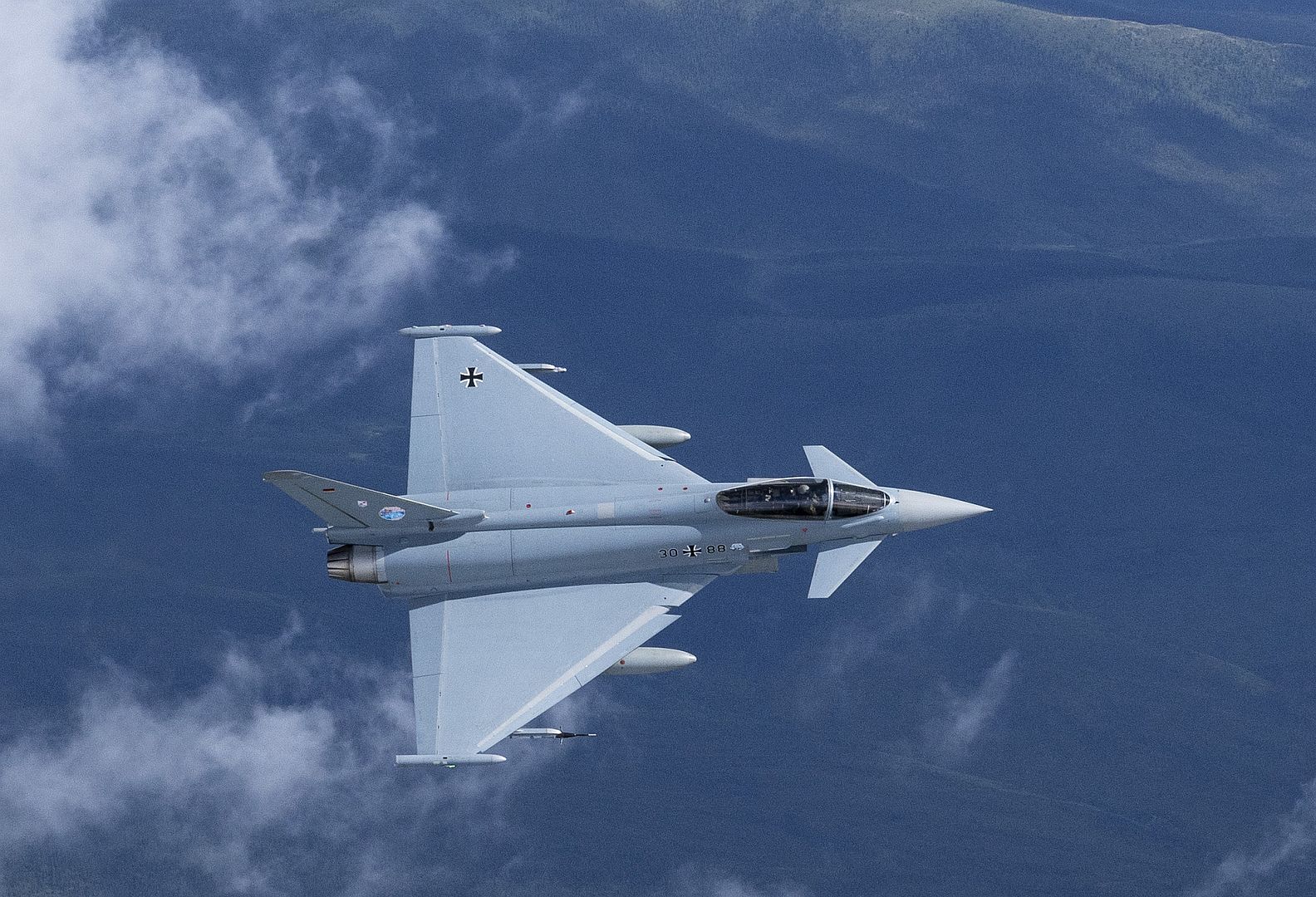
A German Air Force PA-200 Tornado takes off during exercise Arctic Defender 24 at Joint Base Elmendorf-Richardson, Alaska, July 8, 2024. Arctic Defender is a German Air Force-led exercise that provides a unique opportunity to integrate various forces into joint, coalition and multilateral training from simulated forward operating bases and is part of several exercises under Pacific Skies 24. Pacific Skies is a combination of several exercises in the Indo-Pacific theater in which German, French and Spanish air forces participate with U.S. forces. (U.S. Air Force photo by Staff Sgt. Derek Seifert)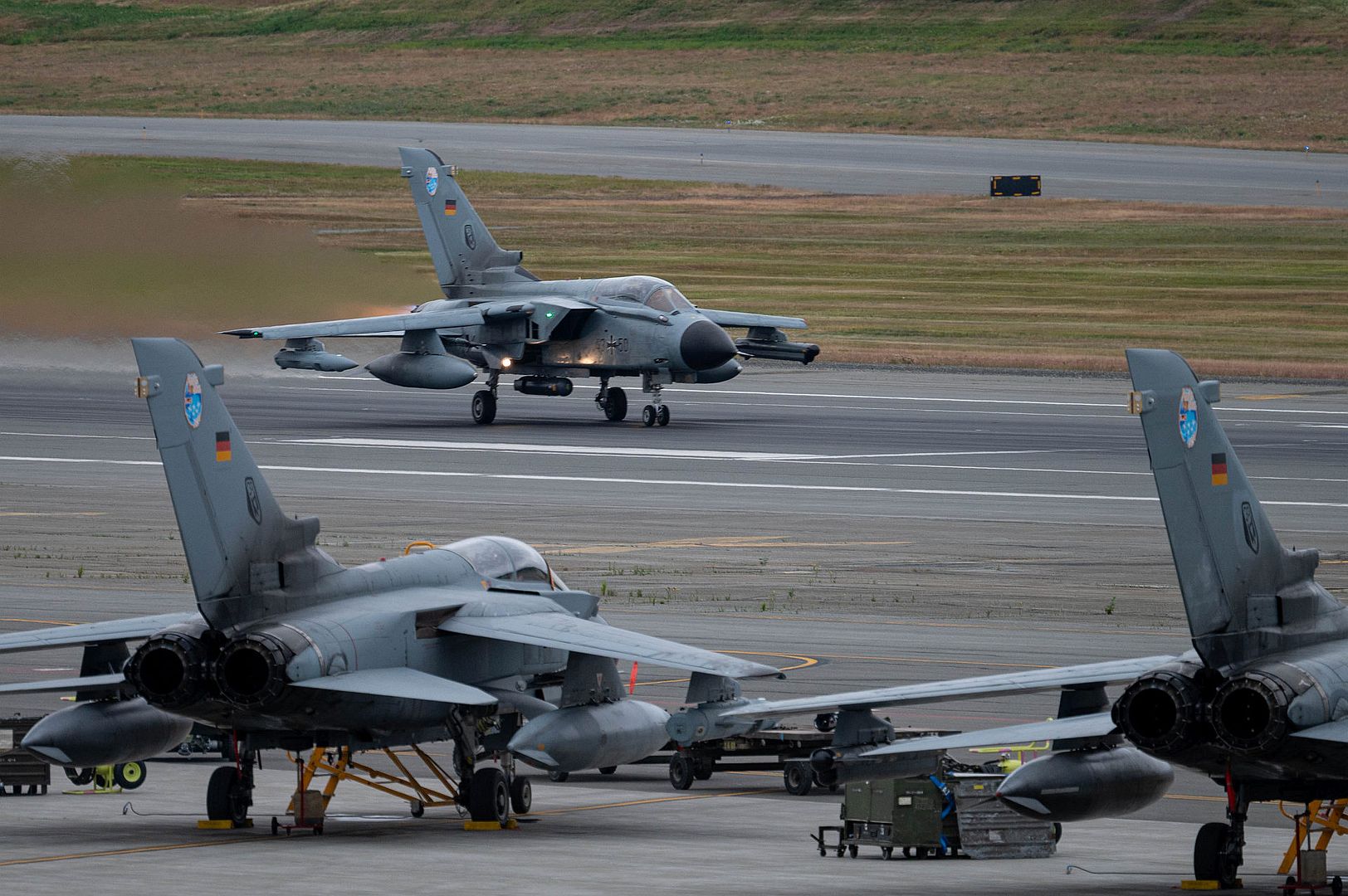
A German Air Force Eurofighter Typhoon flies over Alaska during exercise Arctic Defender 24 at Joint Base Elmendorf-Richardson, Alaska, July 8, 2024. Arctic Defender is a German Air Force-led exercise that provides a unique opportunity to integrate various forces into joint, coalition and multilateral training from simulated forward operating bases and is part of several exercises under Pacific Skies 24. Pacific Skies is a combination of several exercises in the Indo-Pacific theater in which German, French and Spanish air forces participate with U.S. forces. (U.S. Air Force photos Senior Airman Julia Lebens)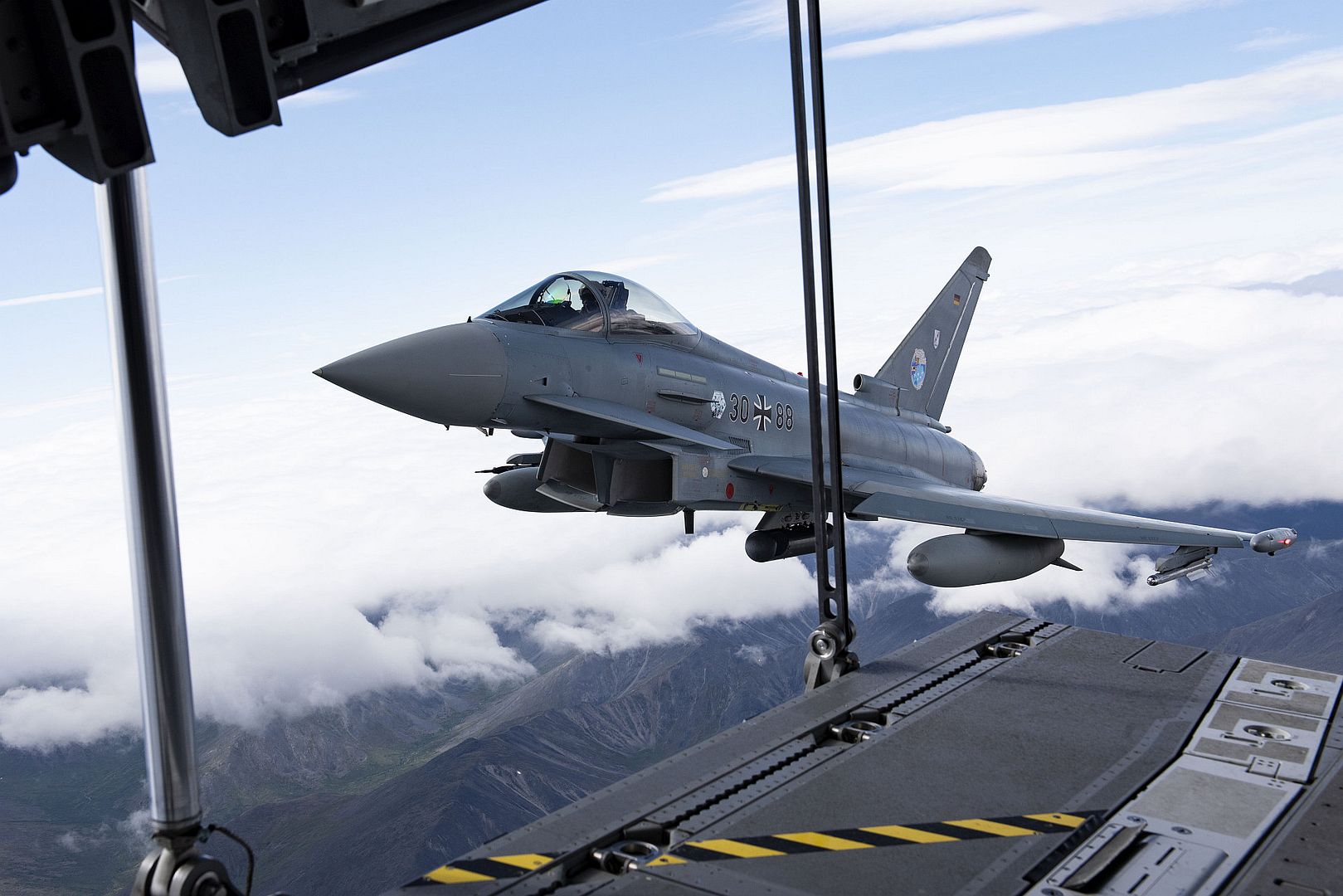
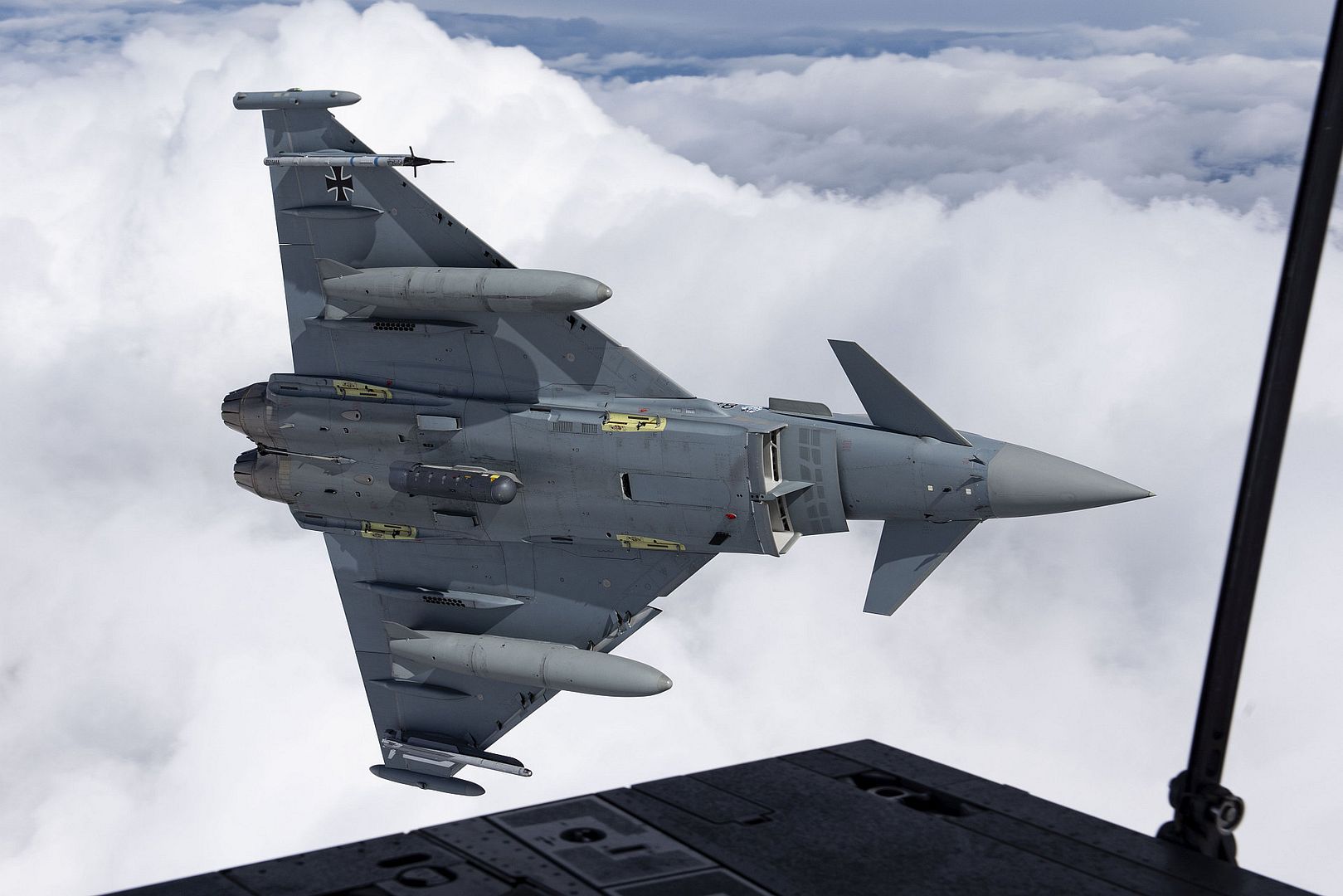
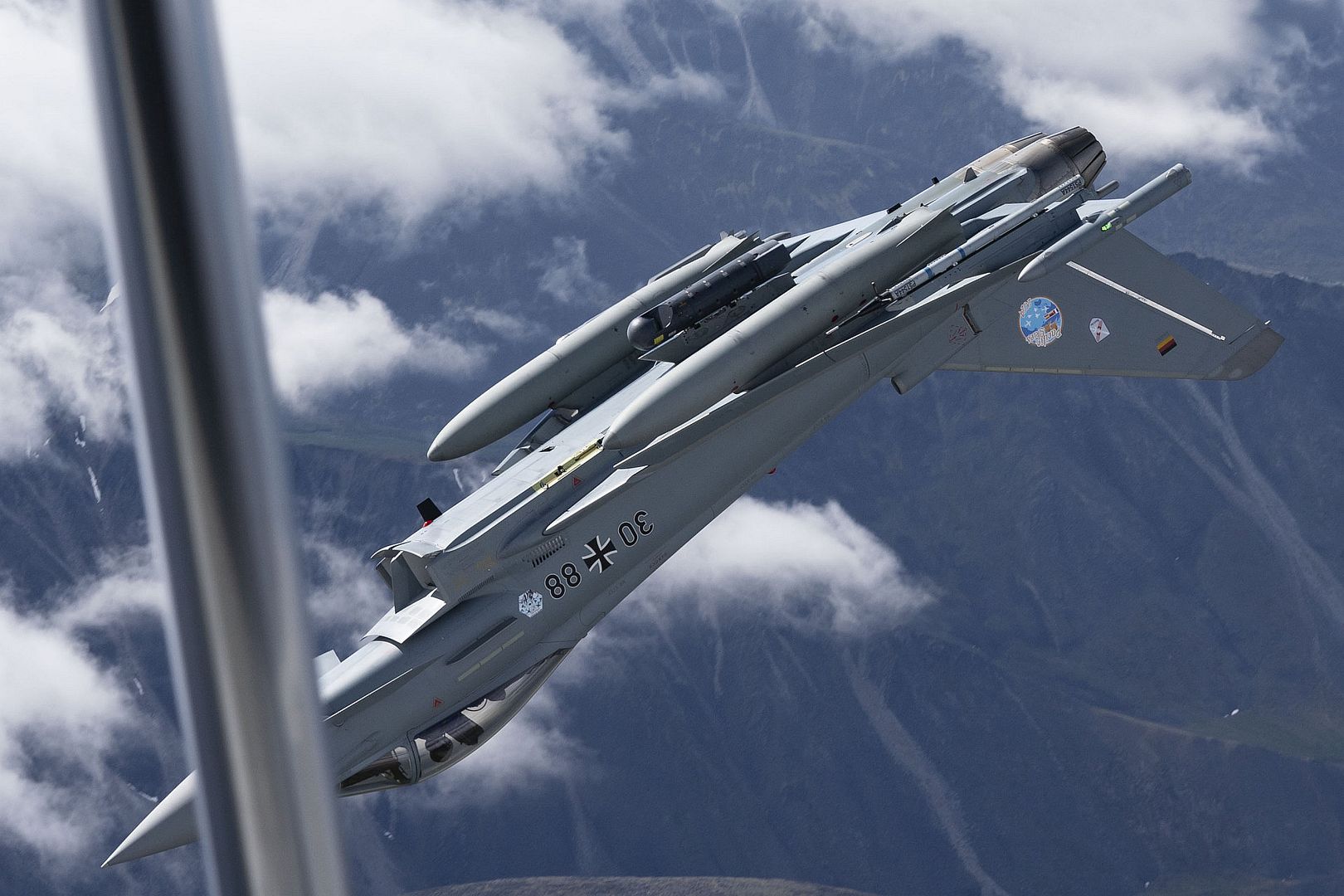
A U.S. Air Force F-22 Raptor assigned to the 3rd Wing takes off over Joint Base Elmendorf-Richardson, Alaska, July 8, 2024. The Raptor is designed to project air dominance and cannot be matched by any known or projected fighter aircraft, providing power projection across the Indo-Pacific region. (U.S. Air Force photo by Senior Airman Julia Lebens)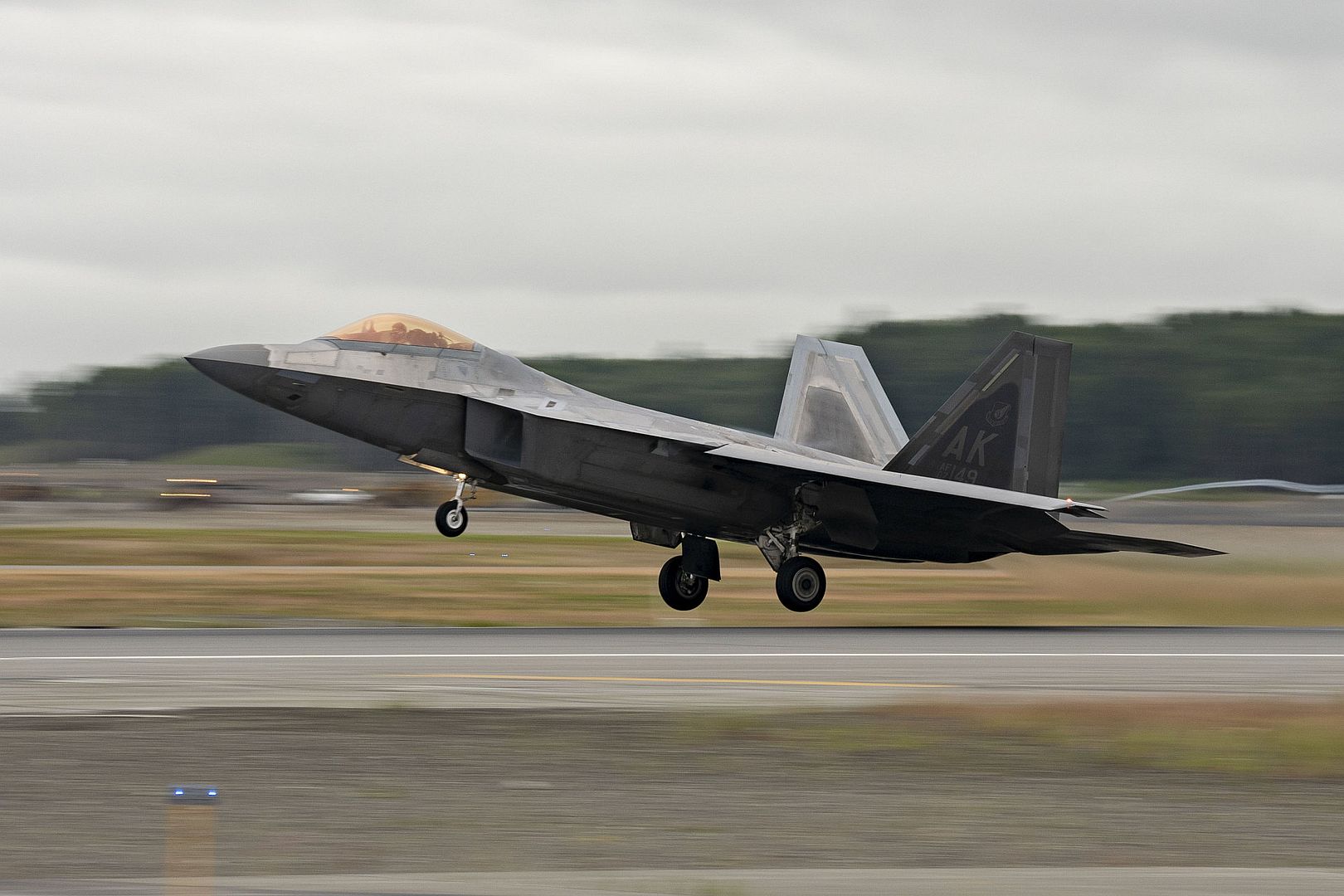
Sailors chock down a trainer jet on the flight deck of the aircraft carrier USS Nimitz (CVN 68) July 8, 2024, in the Pacific Ocean. Nimitz is underway conducting routine operations. (U.S. Navy photo by Mass Communication Specialist 2nd Class Hannah Kantner)_July_8_2024.jpg?width=1920&height=1080&fit=bounds)
Some of the latest arrivals at Exercise Pitch Black 24!.
(Photos courtesy of the RAAF)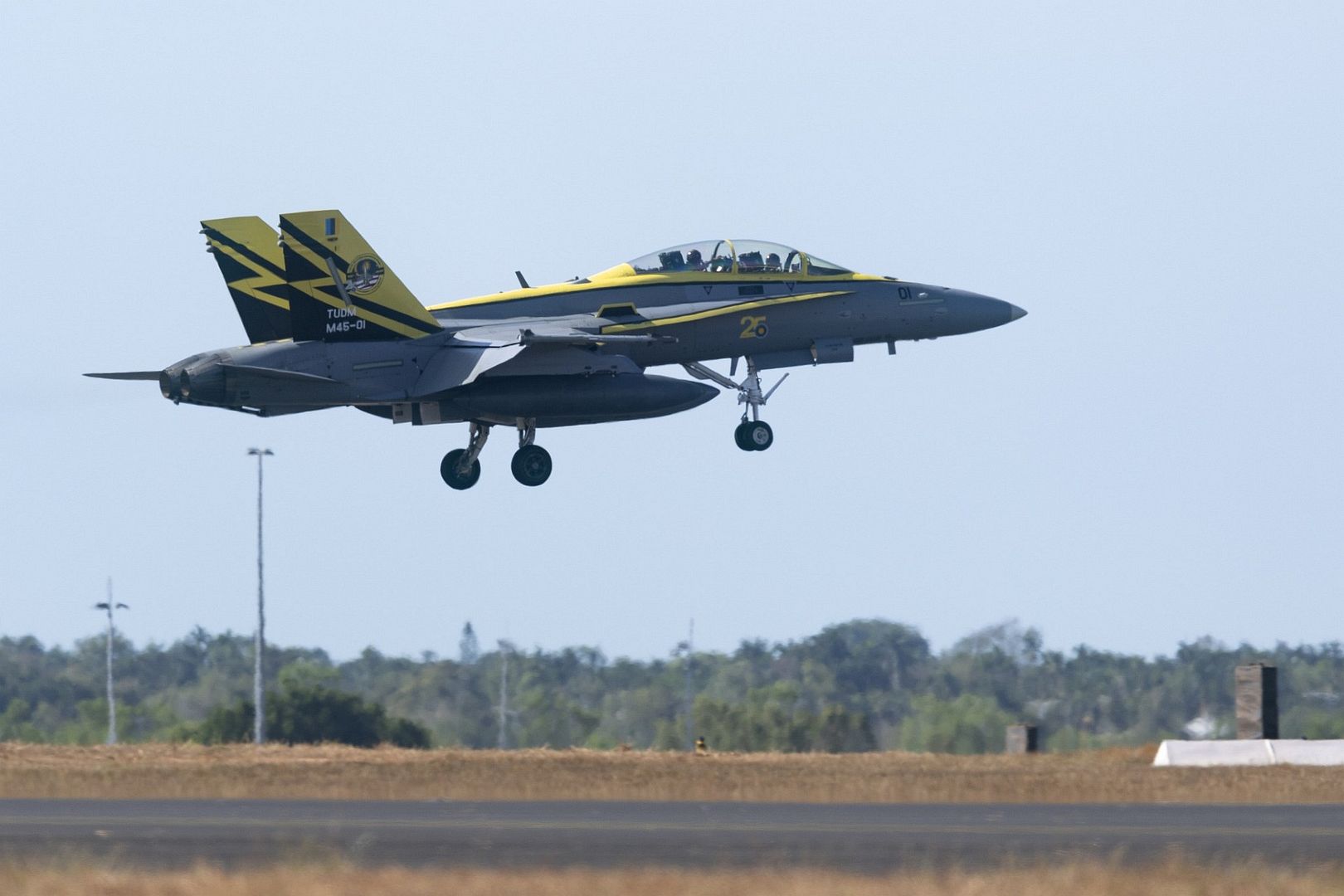

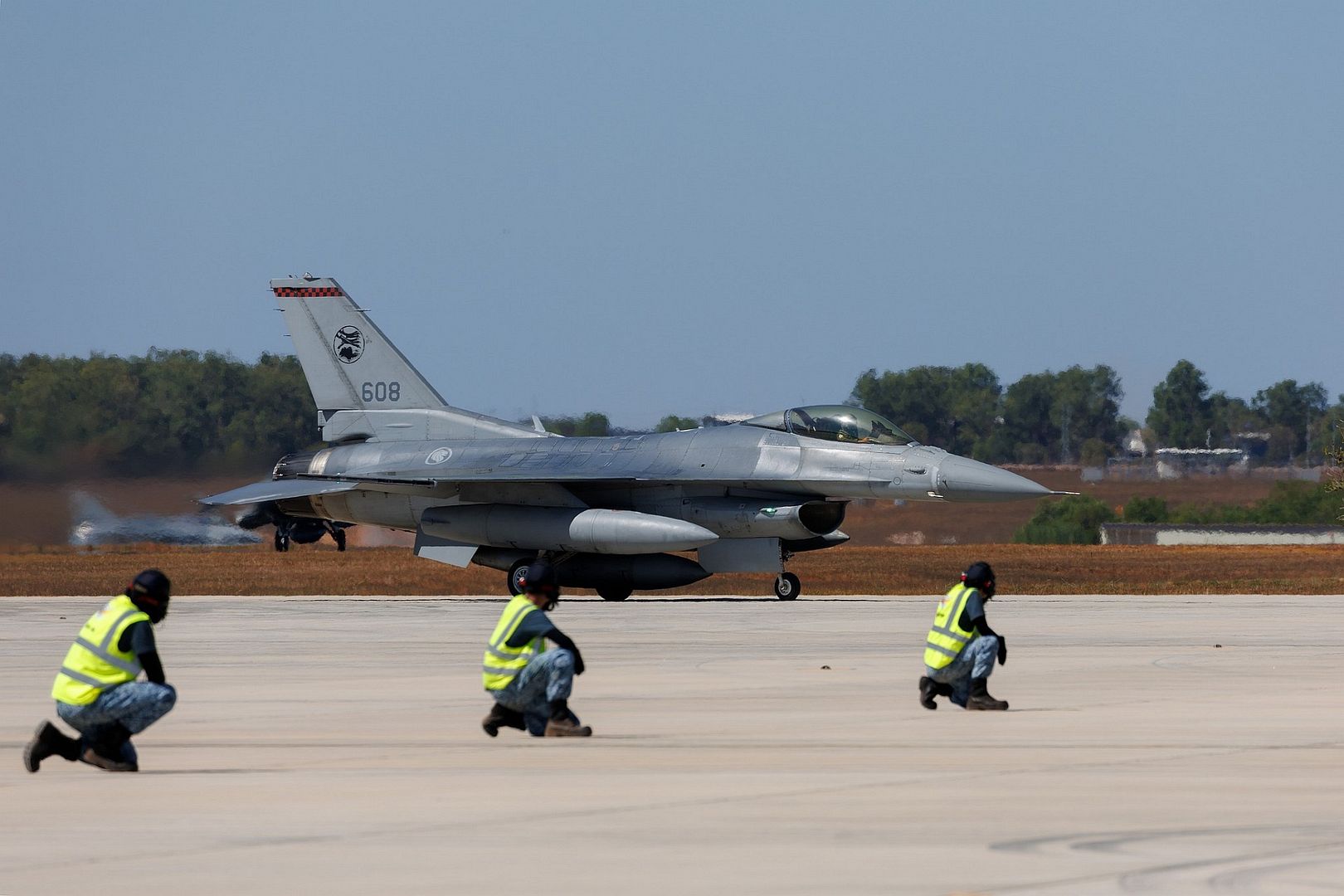


-
 Main AdminU.S. Coast Guard Lt. Kyle Unger, assigned to Coast Guard Air Station Corpus Christi, deplanes an HC-144 Ocean Sentry in Houston, Texas, July 8, 2024. Air Station Corpus Christi conducted fly-overs of the Texas coastline after Hurricane Beryl. (U.S. Coast Guard photo Petty Officer 2nd Class Jessica Fontenette)
Main AdminU.S. Coast Guard Lt. Kyle Unger, assigned to Coast Guard Air Station Corpus Christi, deplanes an HC-144 Ocean Sentry in Houston, Texas, July 8, 2024. Air Station Corpus Christi conducted fly-overs of the Texas coastline after Hurricane Beryl. (U.S. Coast Guard photo Petty Officer 2nd Class Jessica Fontenette)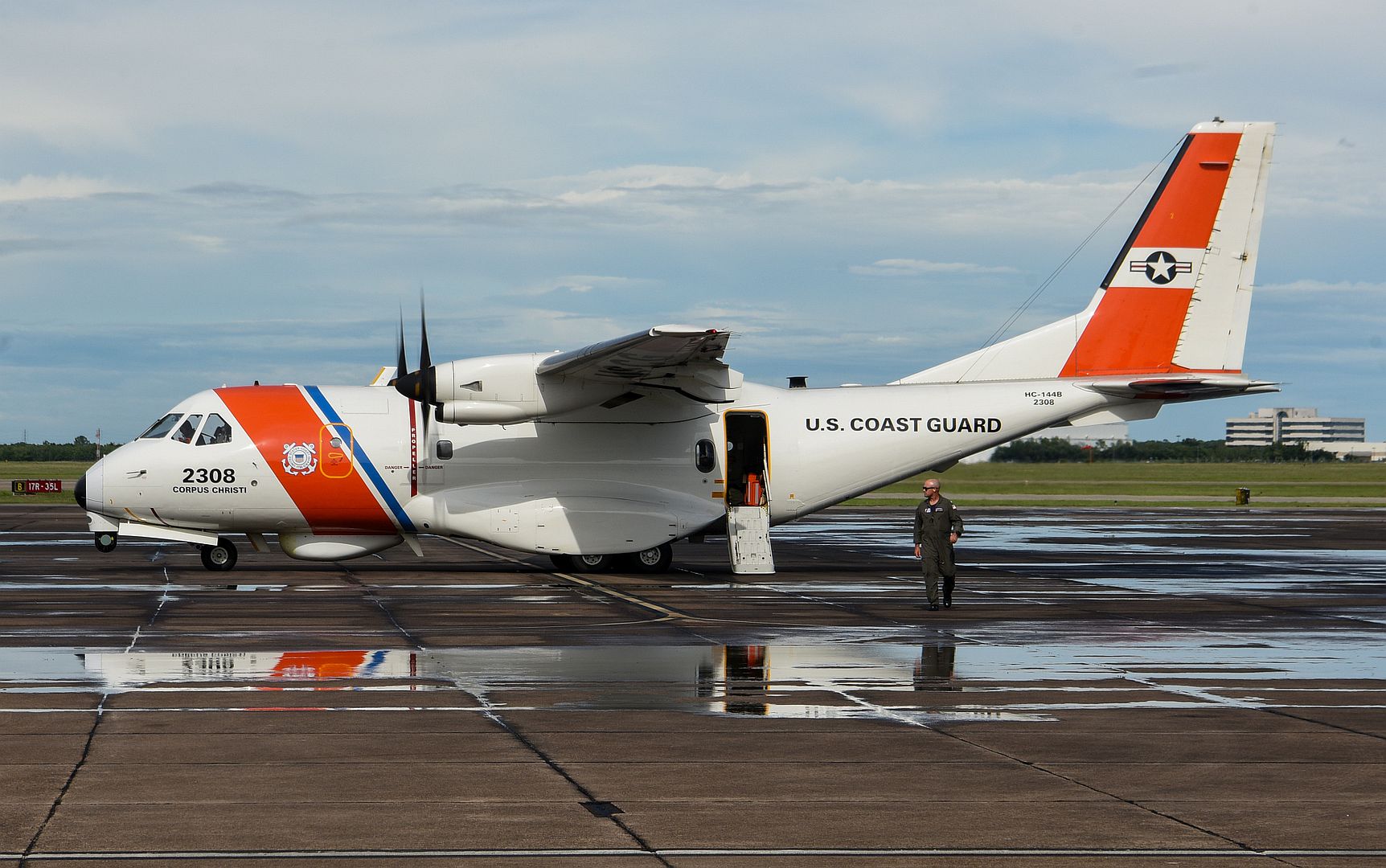
A Coast Guard Air Station Houston MH-65 Dolphin helicopter sits on the ramp in Houston, Texas, July 8, 2024. Air Station Houston conducted search and rescue missions in the aftermath of Hurricane Beryl. (U.S. Coast Guard photo Petty Officer 2nd Class Jessica Fontenette)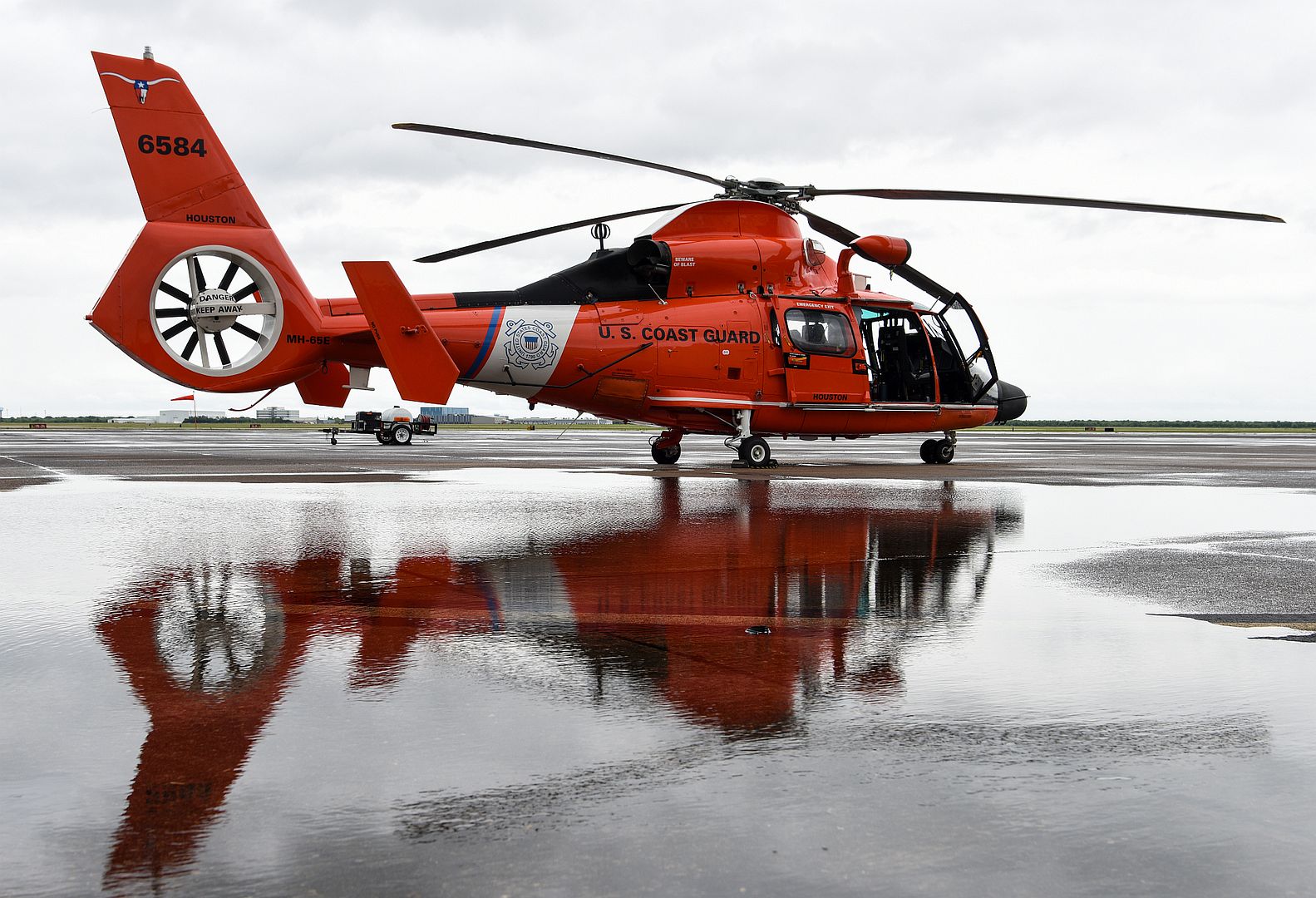
Armed forces members from the U.S., Germany, France and Spain view static display aircraft during the Arctic Defender 24 media day at Eielson Air Force Base, Alaska, July 8, 2024. AD24 is a component of Pacific Skies 24, a months-long deployment hosted by the German Air Force to conduct realistic, total force combat training to maintain a free and open Indo-Pacific region. (U.S. Air Force photos by Staff Sgt. Kelsea Caballero)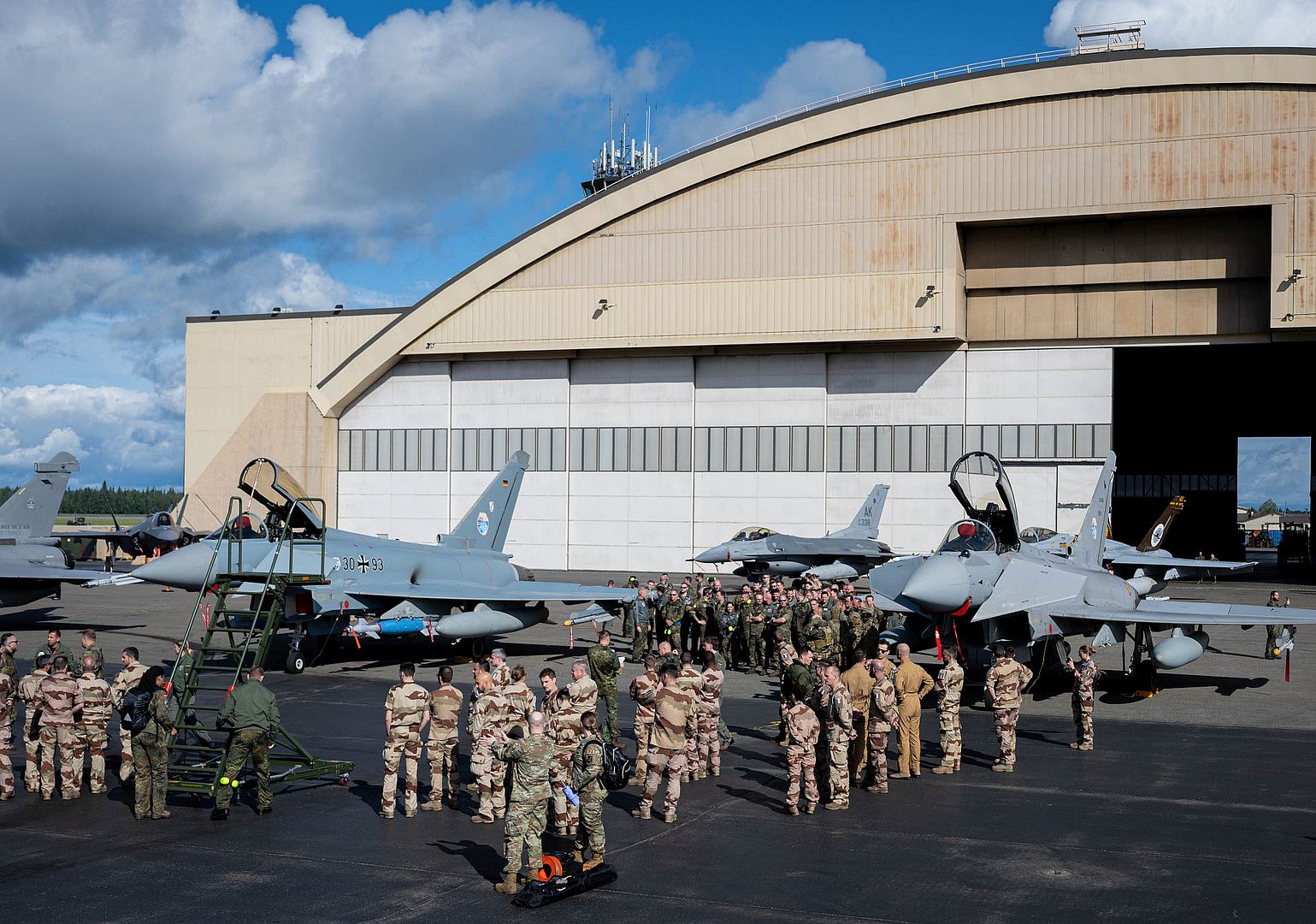
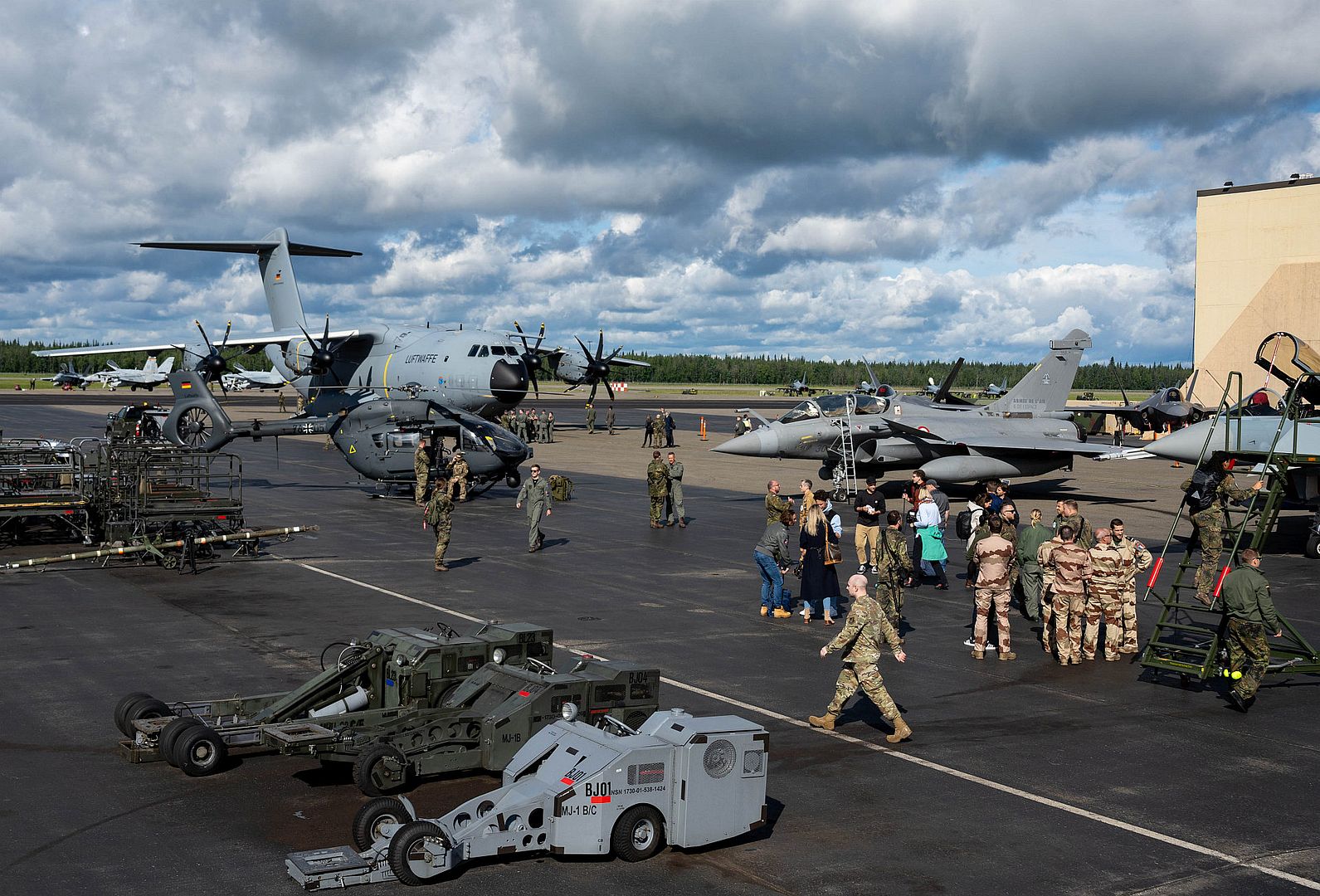
BETA Technologies prototype ALIA CTOL battery-powered fixed-wing aircraft lands at Joint Base McGuire-Dix-Lakehurst, NJ, July 9, 2024. BETA partnered with AFWERX Agility Prime to test the capabilities of moving cargo between bases in a safer, cleaner, and more cost-effective way. (U.S. Air Force photos by Master Sgt. Joseph Vigil)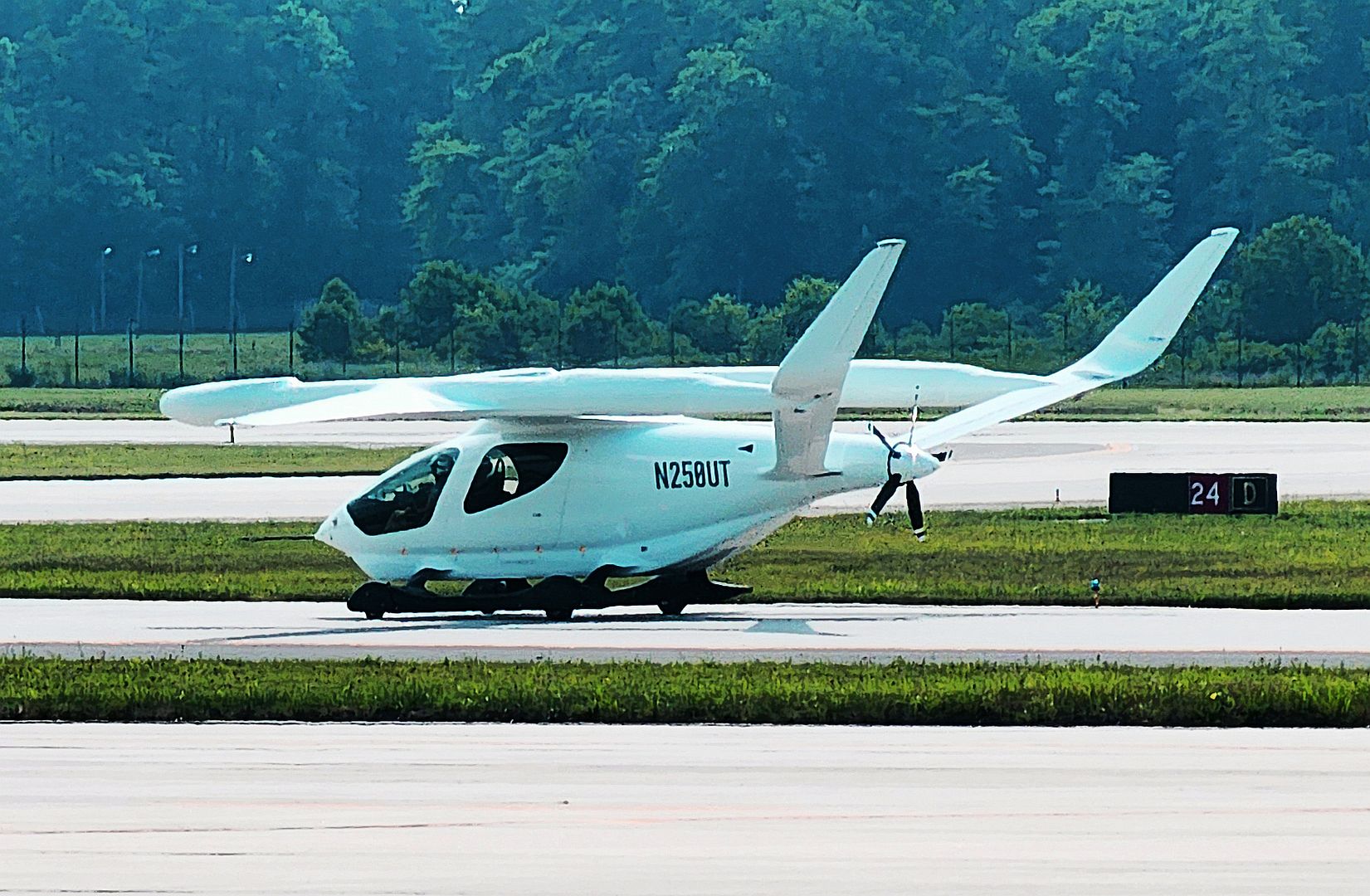
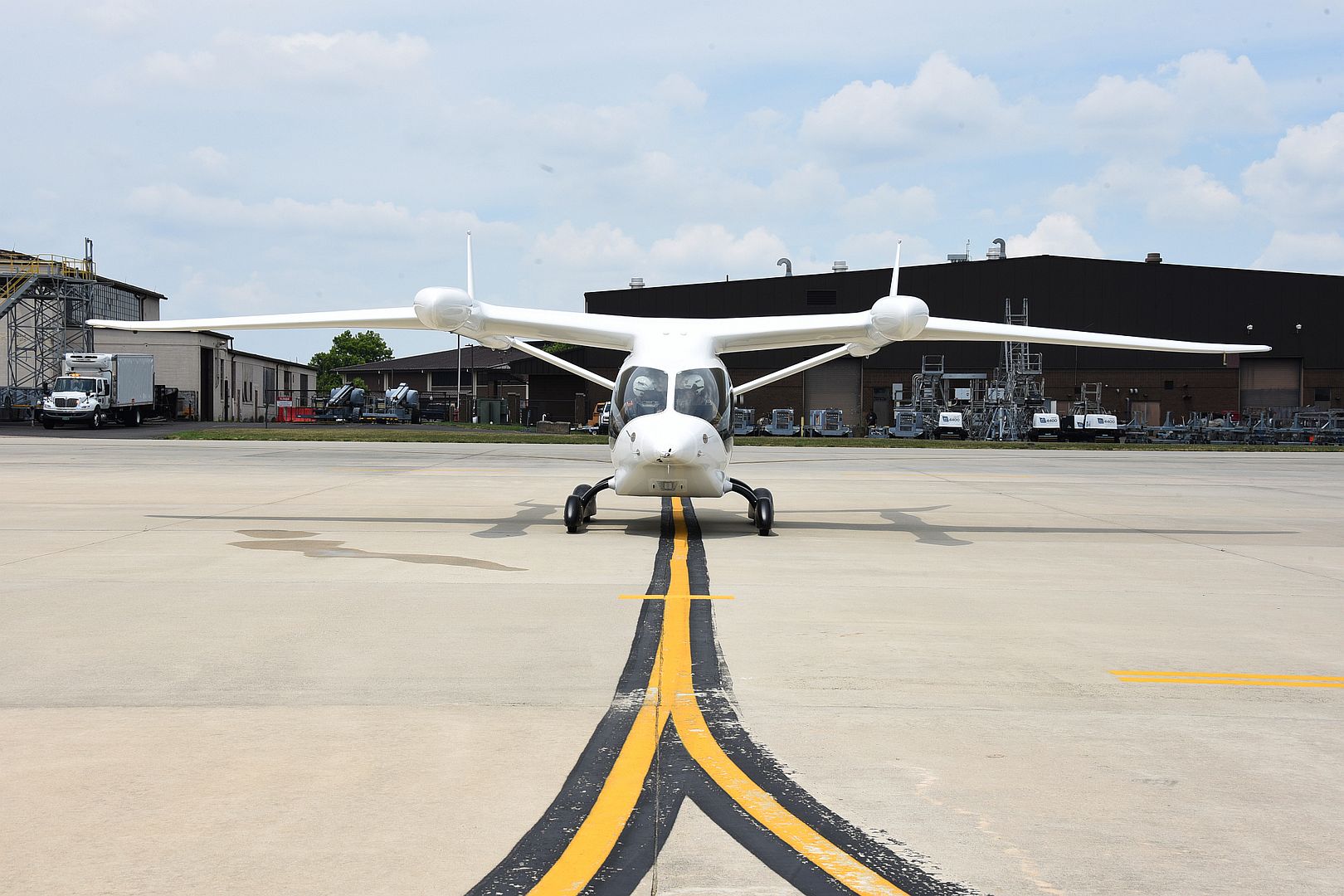
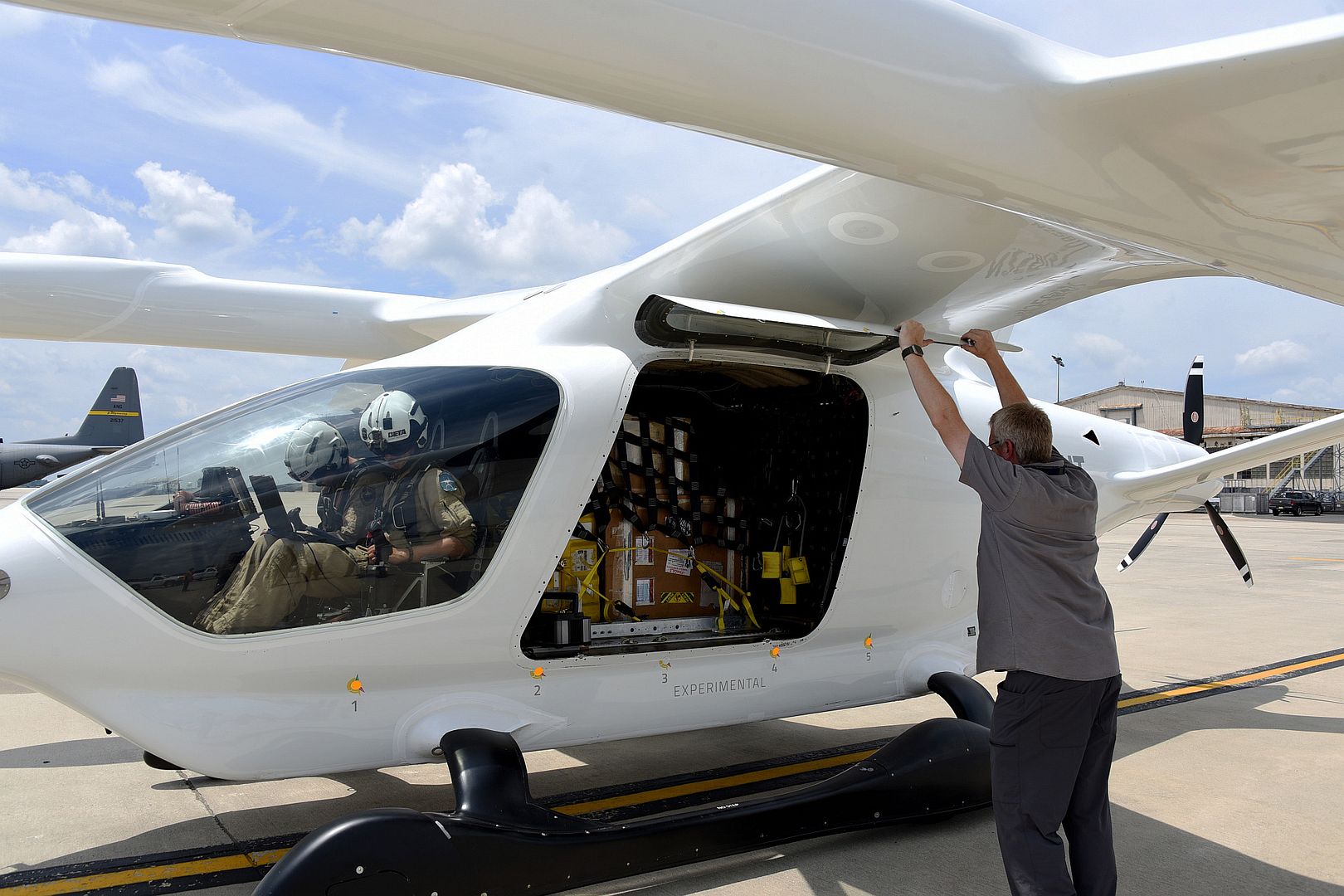
A T-38 Talon aircraft assigned to the 509th Bomb Wing taxis to the runway at Whiteman Air Force Base, Mo., July 10, 2024. The T-38 was practicing a flyover with the B-2 Spirit stealth bomber in preparation for the 2024 Wings Over Whiteman Air Show. Wings Over Whiteman is a bi-annual air show hosted by Whiteman AFB. (U.S. Air Force photo by Tech. Sgt. Anthony Hetlage)
Air Force Special Operations Command received two AT-802U trainer aircraft at Hurlburt Field, Florida on June 28, 2024. These aircraft will be used to train test pilots and initial cadre in a representative tail wheel aircraft in preparation for the missionized Armed Overwatch (OA-1K) variant. (U.S. Air Force photo by Senior Airman Ty Pilgrim)
REDONDO BEACH, Calif. – July 10, 2024 – (PHOTO RELEASE) Northrop Grumman Corporation (NYSE: NOC) has announced the design and construction of the Series Hybrid Electric Propulsion AiRcraft Demonstration (SHEPARD) vehicle. The uncrewed air system developed for DARPA recently received its official X-plane designation of XRQ-73.
Built in collaboration with Scaled Composites, a Northrop Grumman subsidiary, the XRQ-73 SHEPARD is a DARPA "X-prime" program leveraging hybrid electric architecture and component technologies to quickly mature a new mission-focused aircraft design with propulsion architecture and power class for the Department of Defense.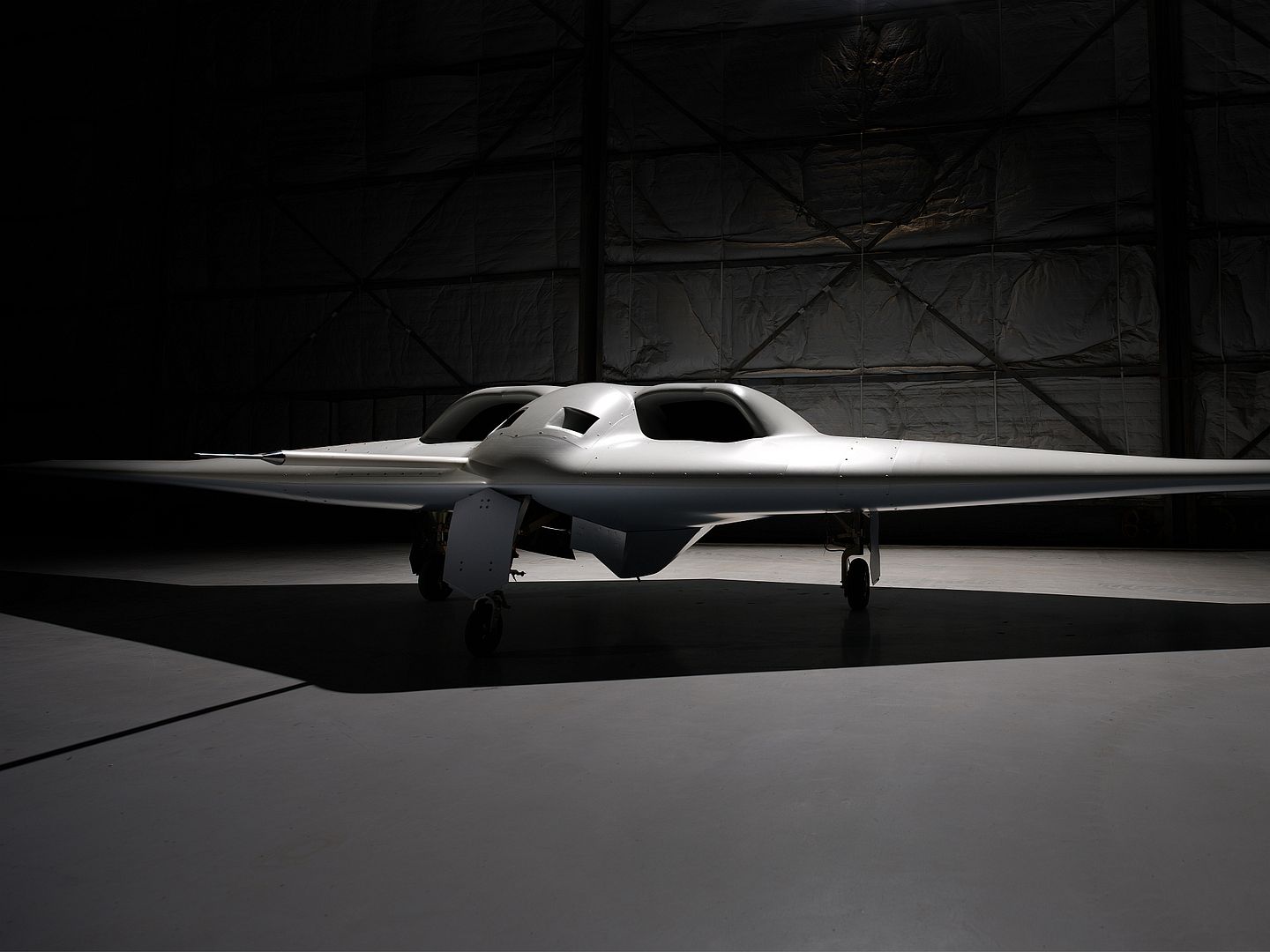
Getafe, Spain - 10 July 2024 – The Kingdom of Saudi Arabia has ordered four additional Airbus A330 Multi Role Tanker Transport (MRTT) aircraft for the Royal Saudi Arabia Air Force (RSAF).
The first of these aircraft will enter into conversion at the beginning of 2026; they will enter into service and join the RSAF in 2027 to carry out air-to-air refuelling and transport missions.
“This new order demonstrates the high level of customer satisfaction with the A330 MRTT”, said Jean-Brice Dumont, Head of Air Power at Airbus Defence and Space. "This is the third contract signed by Saudi Arabia for the A330 MRTT, making the RSAF one of the largest MRTT operators in the world".
The contract also includes a logistics support package with spare parts, training services and service support for the new four aircraft.
All the RSAF A330 MRTT are configured with hose and drogue pods, boom system and also refuelling receptacle, which allows the A330 MRTT to be refuelled from boom-equipped tankers.
Industrial cooperation
As part of this contract, Airbus signed in January 2024 an Industrial Participation (IP) agreement with GAMI (General Authority for Military Industries) for the development and growth of the industrial ecosystem in the region in support of Vision 2030, a Saudi-government programme that aims to diversify the country’s economy.
This agreement also includes the transfer of technology and knowhow of the RSAF A330 MRTT to local companies. SAAMS, the joint venture created between SAMI (Saudi Arabian Military industries) and Airbus, will be the main vehicle for industrial localisation.
The A330 MRTT is the most capable new-generation tanker and transport aircraft with 90% market share outside the USA with 82 orders from 15 countries in Europe, Asia, America and Oceania.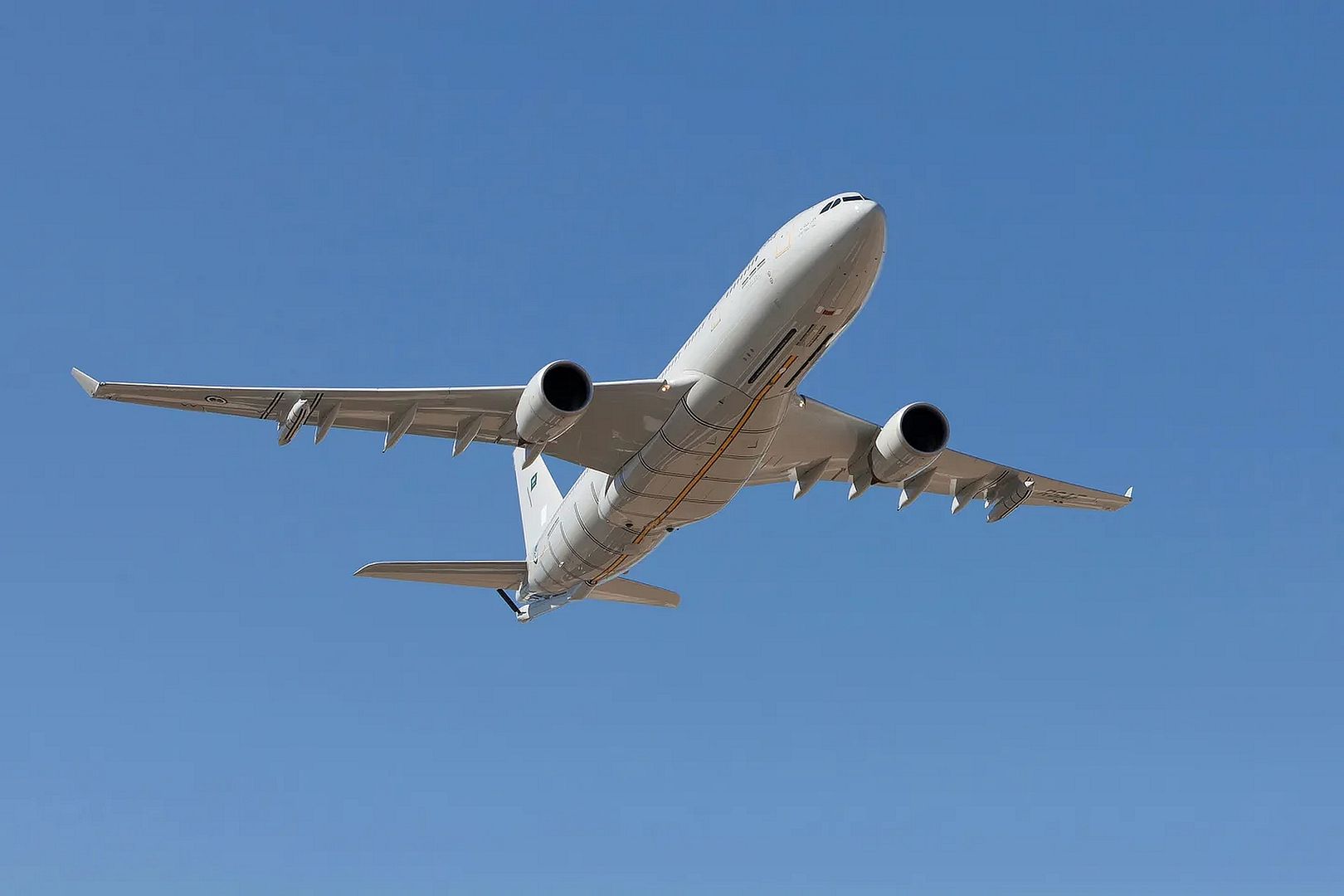
WICHITA, Kan., (July 10, 2024) — Textron Aviation today announced the delivery of the first Cessna SkyCourier twin-engine utility turboprop equipped with a Combi interior conversion option. The aircraft was delivered to Everts Air, an Alaskan-based Part 135 operator serving passenger, cargo and charter needs throughout Alaska. Everts also operates Part 121, providing cargo and on-demand charter throughout North, Central and South America, as well as the Caribbean Islands.
The Cessna SkyCourier is designed and manufactured by Textron Aviation Inc., a Textron Inc. (NYSE: TXT) company.
“The Cessna SkyCourier’s new Combi option demonstrates the aircraft’s ability to meet the versatile mission profiles of our customers around the world,” said Lannie O’Bannion, senior vice president, Sales and Flight Operations. "We are grateful that longtime Cessna customers like Everts Air recognize the value in our products as business tools and their capability in serving customers.”
The Federal Aviation Administration (FAA) granted certification for the SkyCourier Combi interior configuration in May 2024. The recently certified option adds more flexibility to the 19-seat passenger variant of the aircraft by allowing operators to modify the interior to accommodate passengers and cargo at the same time. In addition to the existing gravel kit and full freighter conversion options, the Combi conversion expands the aircraft’s utility for diverse global markets and a wide variety of missions, catering to customers such as government bodies, law enforcement, armed forces, businesses and charitable groups.
The aircraft will join the Everts Air Alaska 135 fleet, which also includes a Cessna SkyCourier freighter variant and six Cessna Caravans.
“I look at the Cessna SkyCourier as a next generation aircraft for Bush Alaska,” said Robert W. Everts, owner of Everts Air. “The SkyCourier Combi will allow us to be flexible and serve the unique needs of citizens in remote communities. Along with offering the reliability of a Cessna, the aircraft is highly adaptable and the ultimate solution for air freight and passenger support in Alaska.”
About the Cessna SkyCourier
The Cessna SkyCourier twin-engine, high-wing turboprop offers a combination of performance and lower operating costs for air freight, commuter, and special mission operators. It’s available in both freighter and passenger variants. The 19-passenger variant includes separate crew and passenger doors for smooth boarding, a large baggage compartment and large cabin windows for natural light and views. The freighter variant features a flat floor cabin that is sized to handle up to three LD3 shipping containers with an impressive 6,000 pounds of payload capability. Both variants offer a large cargo door and single-point pressure refueling to enable faster turnarounds.
The aircraft is powered by two wing-mounted Pratt & Whitney PT6A-65SC turboprop engines and features the McCauley Propeller C779, a heavy-duty and reliable 110-inch aluminum four-blade propeller, which is full feathering with reversible pitch, designed to enhance the performance of the aircraft while hauling tremendous loads. The SkyCourier features Garmin G1000 NXi avionics and has a maximum cruise speed of more than 200 ktas. The SkyCourier has a 900-nautical-mile maximum range.
-
 Main AdminGerman Air Force soldiers prepare a PA-200 Tornado for launch during exercise Arctic Defender 24 at Joint Base Elmendorf-Richardson, Alaska, July 9, 2024. Arctic Defender is a German Air Force-led exercise that provides a unique opportunity to integrate various forces into joint, coalition and multilateral training from simulated forward operating bases and is part of several exercises under Pacific Skies 24. Pacific Skies is a combination of several exercises in the Indo-Pacific theater in which German, French and Spanish air forces participate with U.S. forces. (U.S. Air Force photos by Senior Airman Shelimar Rivera Rosado)
Main AdminGerman Air Force soldiers prepare a PA-200 Tornado for launch during exercise Arctic Defender 24 at Joint Base Elmendorf-Richardson, Alaska, July 9, 2024. Arctic Defender is a German Air Force-led exercise that provides a unique opportunity to integrate various forces into joint, coalition and multilateral training from simulated forward operating bases and is part of several exercises under Pacific Skies 24. Pacific Skies is a combination of several exercises in the Indo-Pacific theater in which German, French and Spanish air forces participate with U.S. forces. (U.S. Air Force photos by Senior Airman Shelimar Rivera Rosado)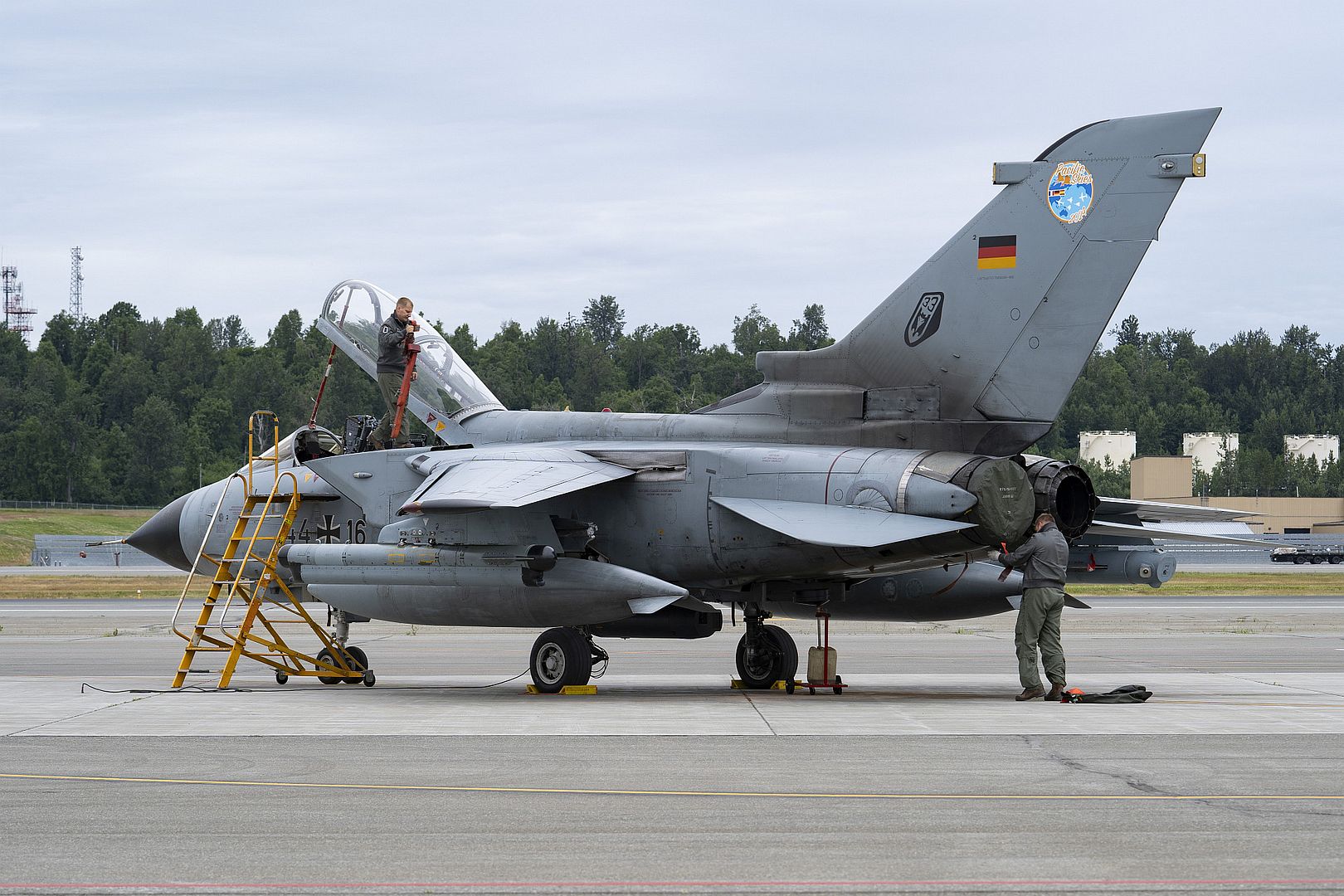
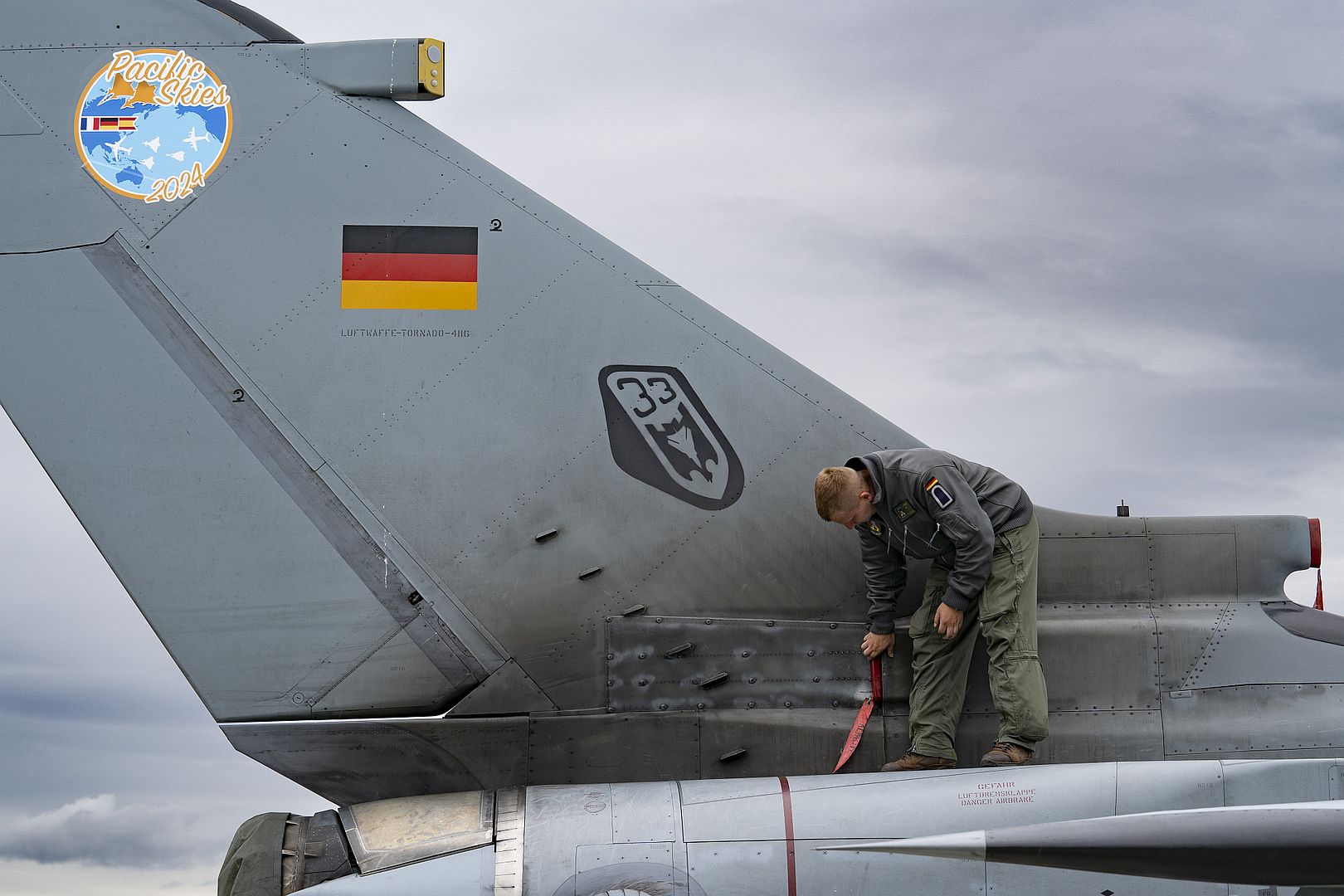
A German Air Force Eurofighter Typhoon prepares for takeoff during Arctic Defender 24 at Eielson Air Force Base, Alaska, July 10, 2024. As part of a months-long deployment in the Indo-Pacific, known as Pacific Skies 24, AD24 is the first stop for the trinational Future Combat Air System of Germany, France and Spain, and is a field training exercise for U.S. and international forces flown under simulated air combat conditions. (U.S. Air Force photo by Airman 1st Class Jarrett Smith)
German Air Force Eurofighter Typhoons sit on the taxiway during Arctic Defender 24 at Eielson Air Force Base, Alaska, July 10, 2024. AD24 is a component of Pacific Skies 24, a months-long deployment hosted by the German Air Force. Germany, France and Spain are partners in the trinational Future Combat Air System, and as the first stop in their deployment, Arctic Defender is a field training exercise for U.S. and international forces flown under simulated air combat conditions. (U.S. Air Force photo by Airman 1st Class Jarrett Smith)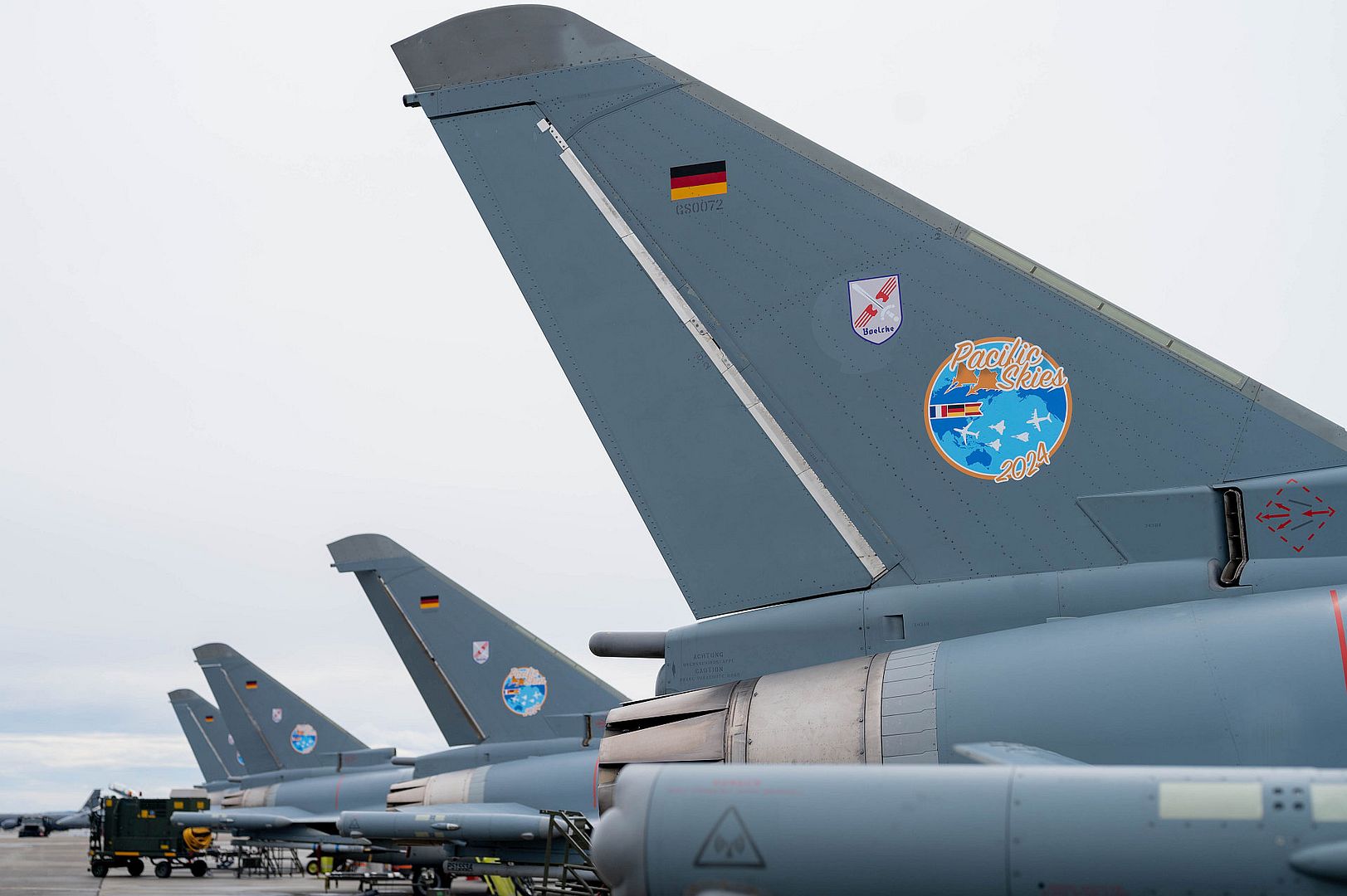
A Multinational Multirole Tanker Transport Unit (MMU) Airbus A330 takes off from Joint Base Elmendorf-Richardson during exercise Arctic Defender 24 at JBER, Alaska, July 10, 2024. Arctic Defender provides a unique opportunity to integrate various forces into joint, coalition and multilateral training from simulated forward operating bases and is part of several exercises under Pacific Skies 24. Pacific Skies is a combination of several exercises in the Indo-Pacific theater in which German, French and Spanish air forces participate with U.S. forces. (U.S. Air Force photo by Senior Airman Shelimar Rivera Rosado)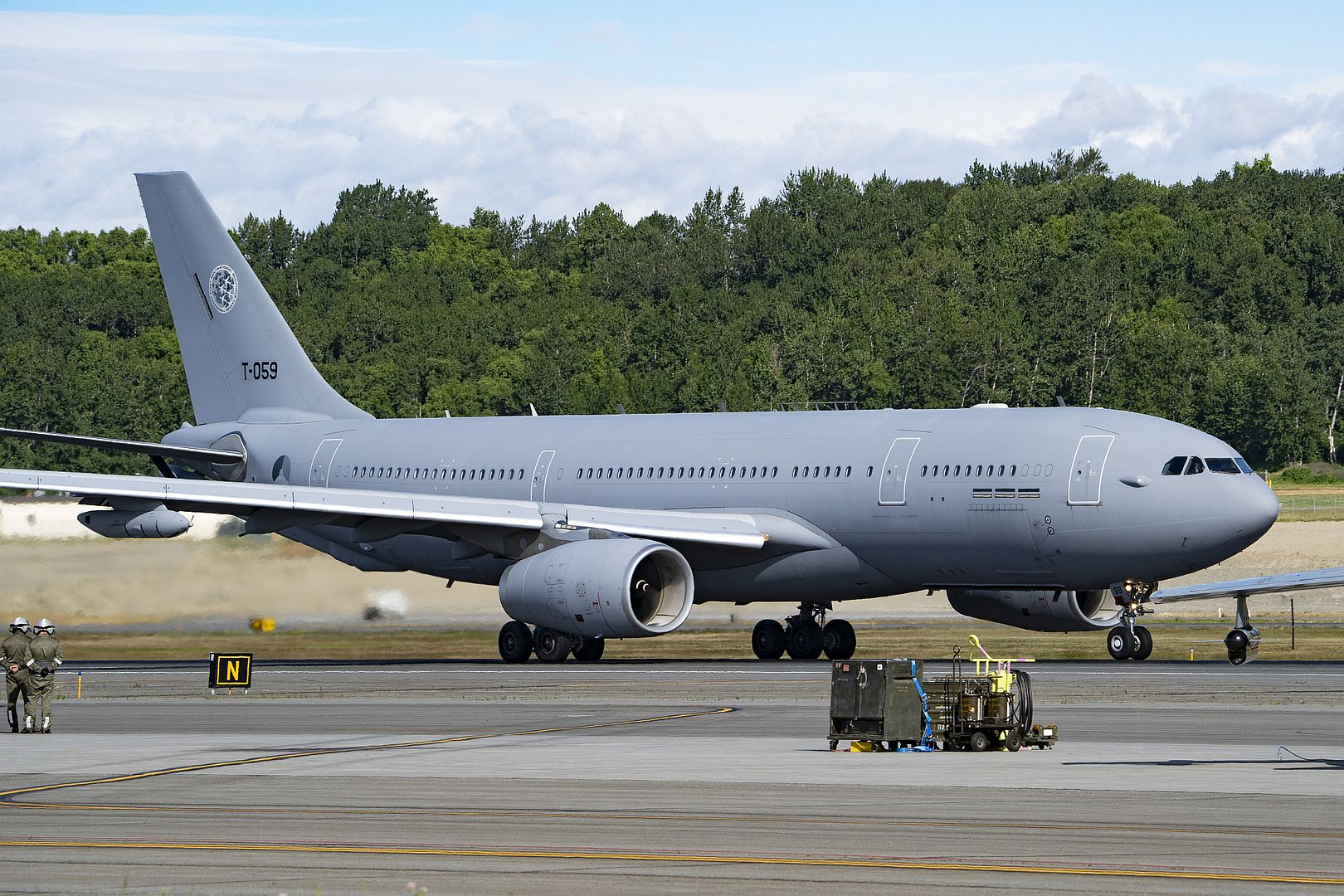
A Royal Canadian Air Force CC-130H takes off from Joint Base Elmendorf-Richardson during exercise Arctic Defender 24 at JBER, Alaska, July 10, 2024. Arctic Defender is a German Air Force-led exercise that provides a unique opportunity to integrate various forces into joint, coalition and multilateral training from simulated forward operating bases and is part of several exercises under Pacific Skies 24. Pacific Skies is a combination of several exercises in the Indo-Pacific theater in which German, French and Spanish air forces participate with U.S. forces. (U.S. Air Force photo by Senior Airman Shelimar Rivera Rosado)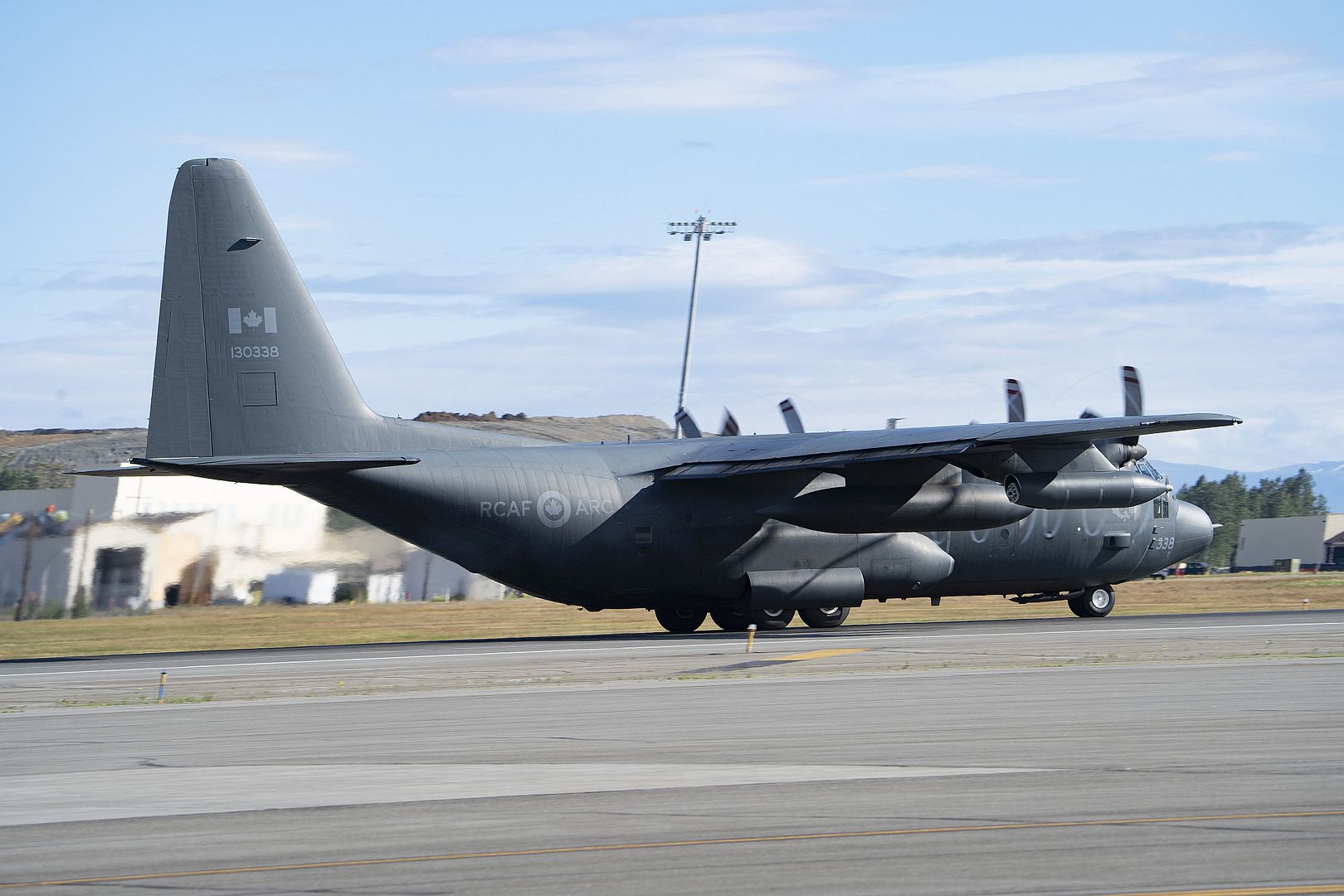
A German Air Force A400M Atlas takes off from Joint Base Elmendorf-Richardson during exercise Arctic Defender 24 at JBER, Alaska, July 10, 2024. Arctic Defender provides a unique opportunity to integrate various forces into joint, coalition and multilateral training from simulated forward operating bases and is part of several exercises under Pacific Skies 24. Pacific Skies is a combination of several exercises in the Indo-Pacific theater in which German, French and Spanish air forces participate with U.S. forces. (U.S. Air Force photo by Senior Airman Shelimar Rivera Rosado)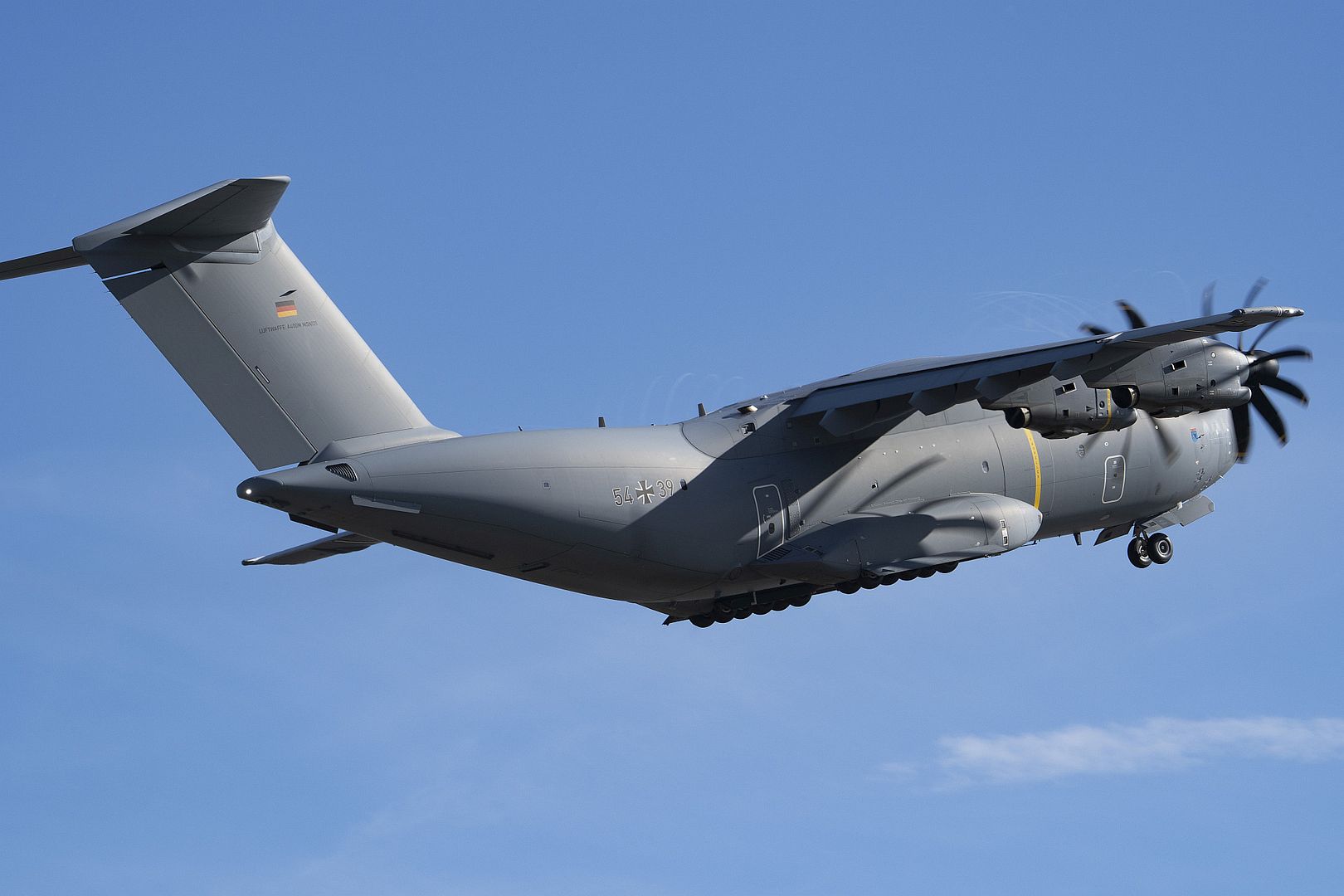
PACIFIC OCEAN (July 10, 2024) An F/A-18F Super Hornet, attached to the Diamondbacks of Strike Fighter Squadron (VFA) 102, back, and an F/A-18E Super Hornet, attached to the Royal Maces of Strike Fighter Squadron (VFA) 27, maneuver next to each other on the flight deck of the U.S. Navy’s only forward-deployed aircraft carrier, USS Ronald Reagan (CVN 76), during flight operations in the Pacific Ocean, July 10. The Diamondbacks conduct carrier-based air strikes and strike force escort missions, as well as ship, battle group, and intelligence collection operations. The Royal Maces conduct carrier-based air strikes and strike force escort missions, as well as ship, battle group and intelligence collection operations. Ronald Reagan, the flagship of Carrier Strike Group 5, provides a combat-ready force that protects and defends the United States, and supports alliances, partnerships and collective maritime interests in the Indo-Pacific region. (U.S. Navy photo by Mass Communication Specialist 2nd Class Eric Stanton)_102_back_and_an_FA-18E_Super_Hornet_attached_to_the_Royal_Maces_of_Strike_Fighter_Squadron.jpg?width=1920&height=1080&fit=bounds)
The Philippine Air Force is taking things to new heights by sending four FA-50PH Fighting Eagle jet aircraft to Exercise Pitch Black 24 for the first time ever!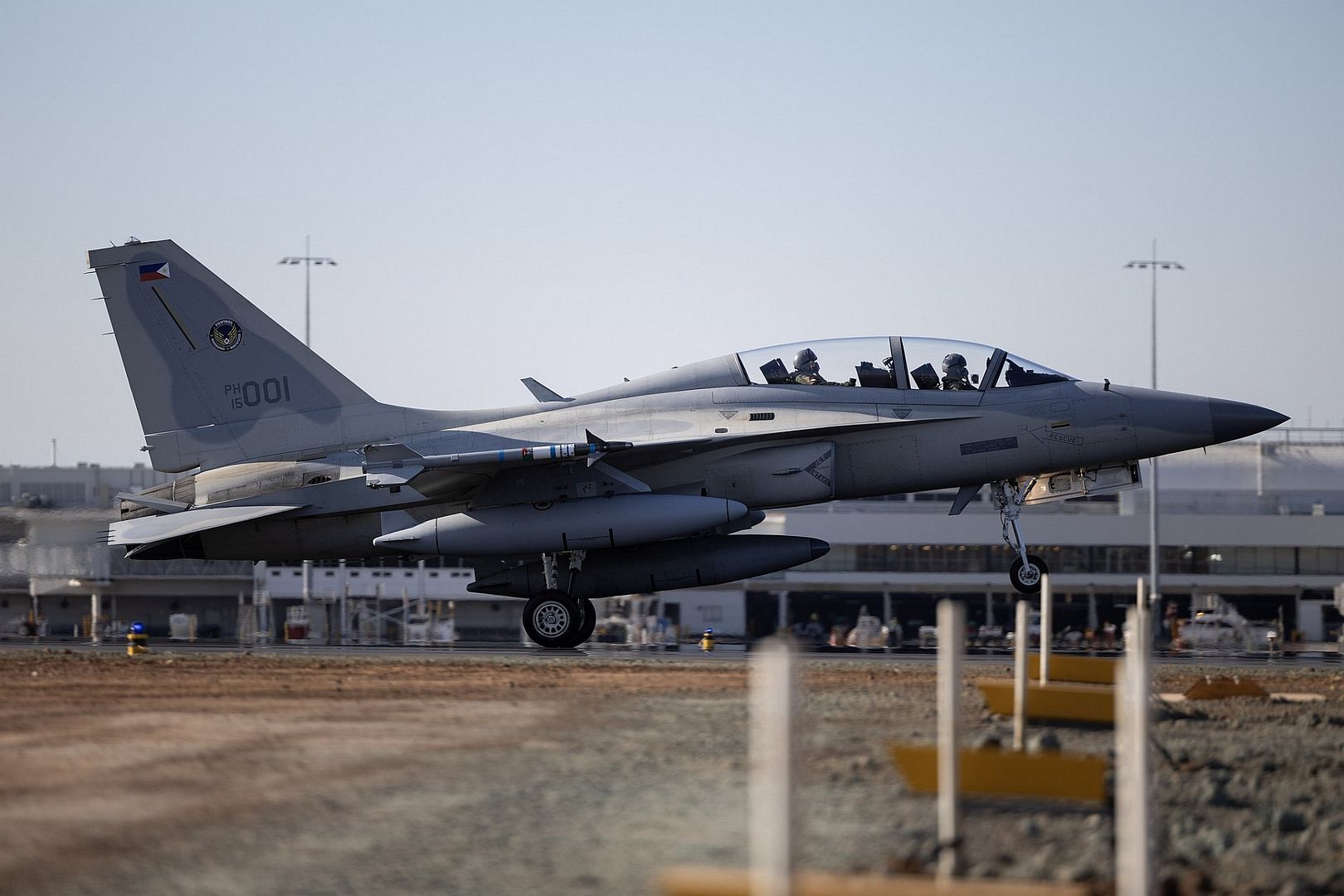
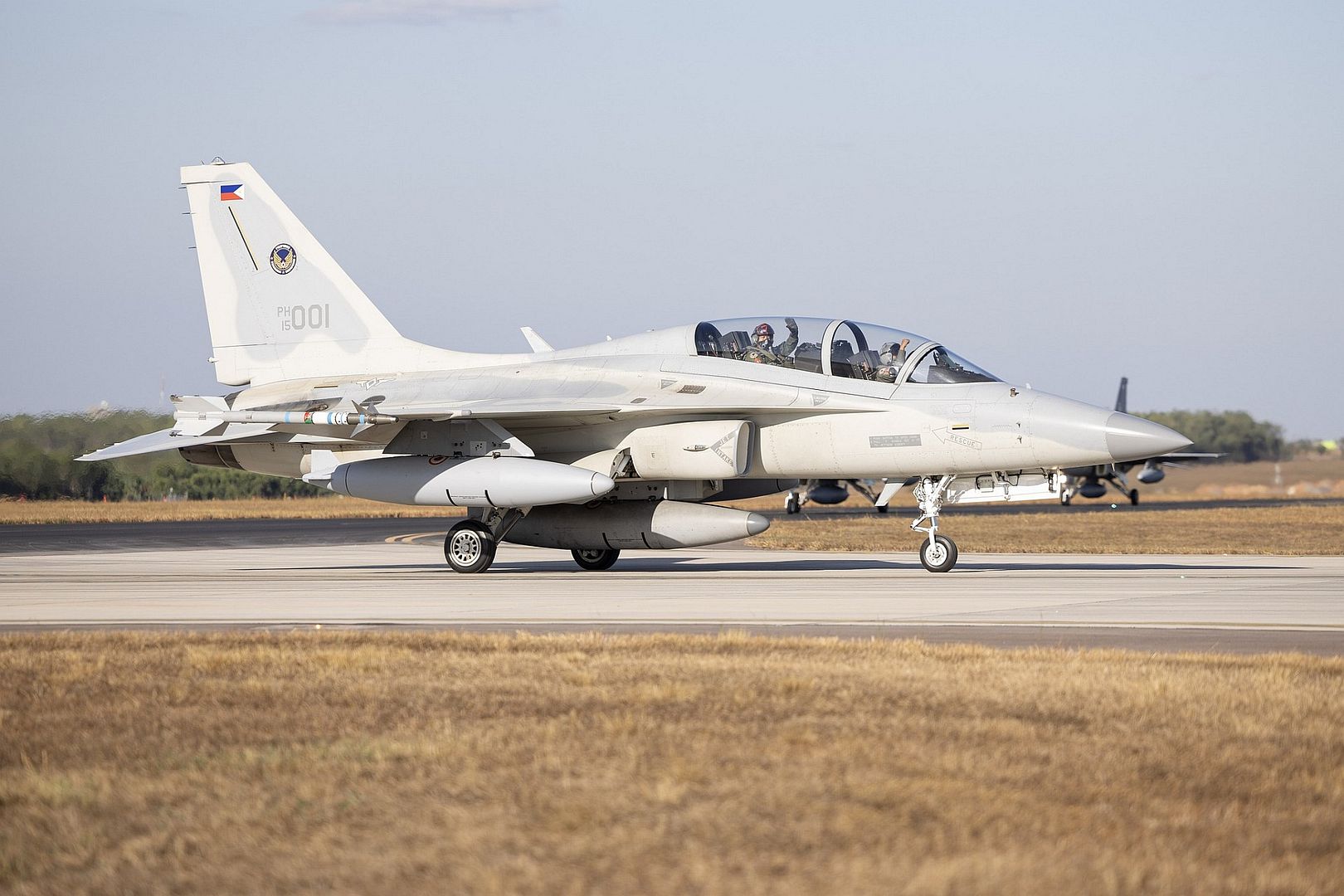
#PitchBlack24 will involve 20 nations and approximately 140 aircraft, and run from July 12 to August 2. The Philippine Air Force will participate with four FA-50PH Fighting Eagle jets, and approximately 162 personnel.
(Photos courtesy of the RAAF)
-
 Main AdminU.S. Marines with Marine Medium Tiltrotor Squadron 268 (Reinforced), Marine Rotational Force – Darwin 24.3, taxi an MV-22B Osprey on the flightline of Royal Australian Air Force Base Darwin, NT, Australia, after a tail gunnery exercise, July 11, 2024. Marines conducted the tail gunnery exercise in order to maintain weapons proficiency and increase combat lethality. (U.S. Marine Corps photo by Cpl. Juan Torres)
Main AdminU.S. Marines with Marine Medium Tiltrotor Squadron 268 (Reinforced), Marine Rotational Force – Darwin 24.3, taxi an MV-22B Osprey on the flightline of Royal Australian Air Force Base Darwin, NT, Australia, after a tail gunnery exercise, July 11, 2024. Marines conducted the tail gunnery exercise in order to maintain weapons proficiency and increase combat lethality. (U.S. Marine Corps photo by Cpl. Juan Torres)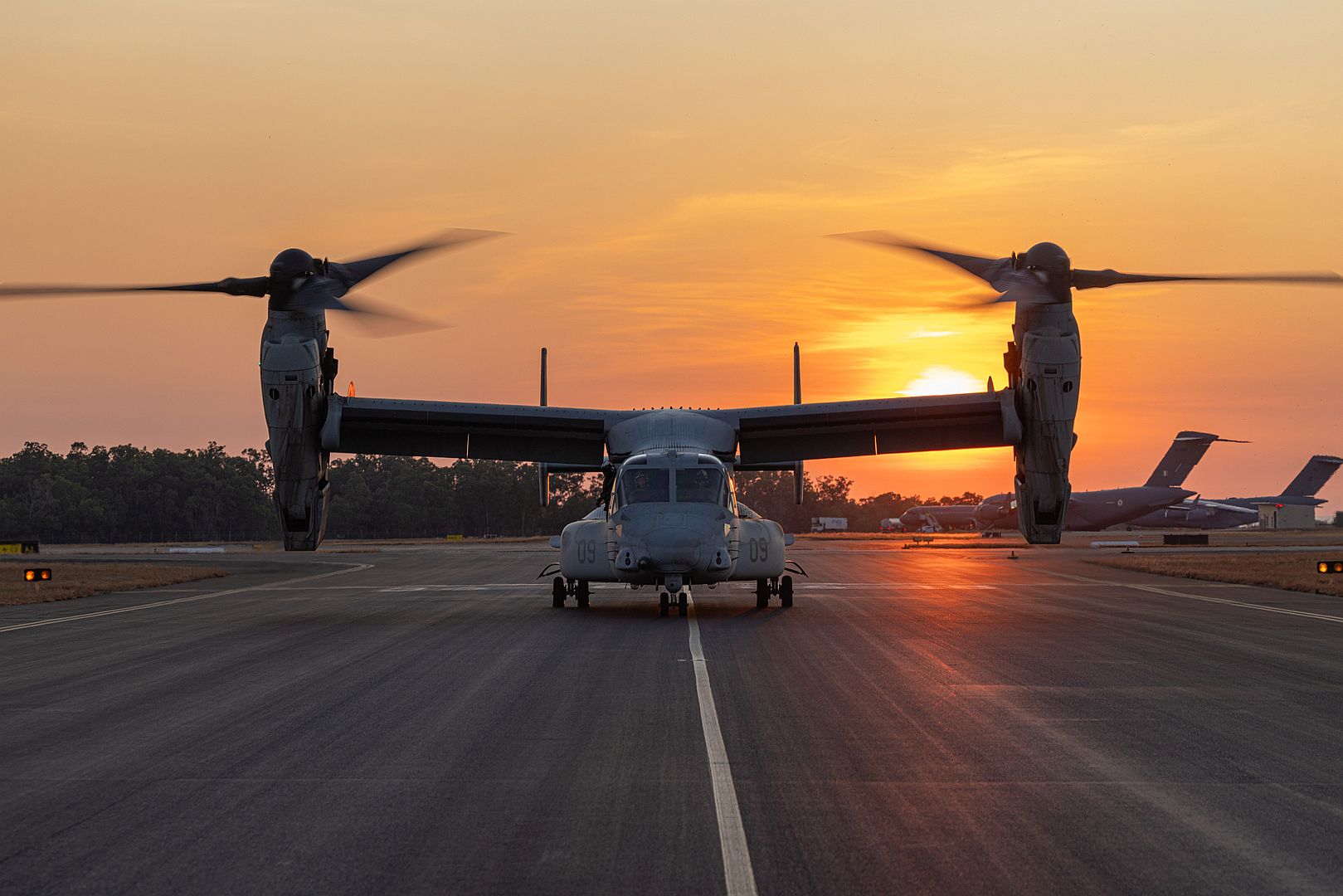
An Alaska Air National Guard HC-130J Combat King II assigned to the 211th Rescue Squadron passes over Malemute Drop Zone during airborne sustainment training at Joint Base Elmendorf-Richardson, Alaska, July 10, 2024. The guardsmen and Detachment 1, 3rd Air Support Operations Squadron special warfare Airmen conducted the airborne sustainment training to ensure mission readiness. (Alaska National Guard photo by Alejandro Peña)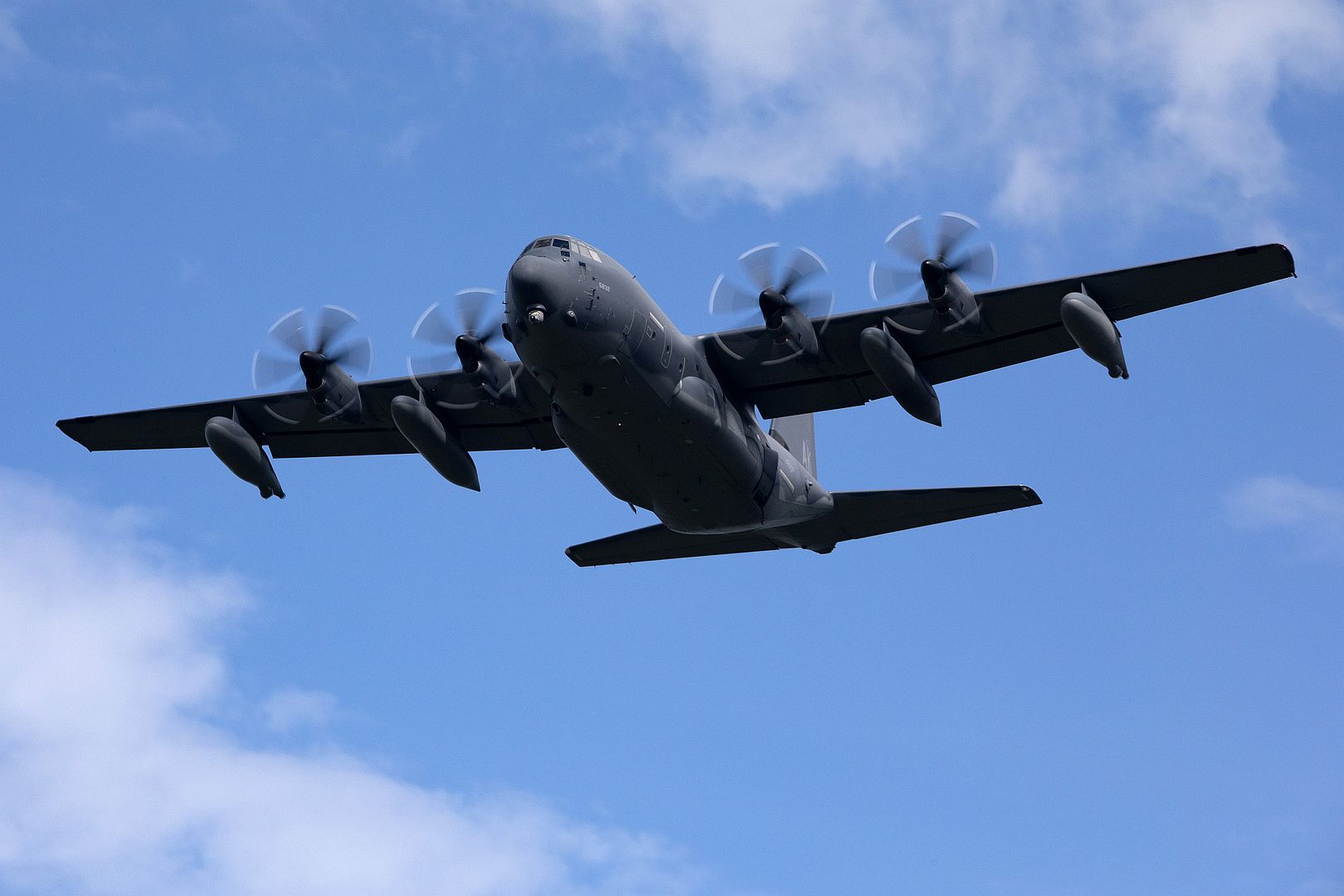
TINKER AIR FORCE BASE, Okla. — Two F-16 Fighting Falcons, assigned to the 140th Wing, fly alongside a KC-135 Stratotanker, assigned to the 507th Air Refueling Wing, June 11. Students and instructors from the AIM High Flight Academy were on board the KC-135 to witness aerial refueling. (U.S. Air Force photo by Carter Denton)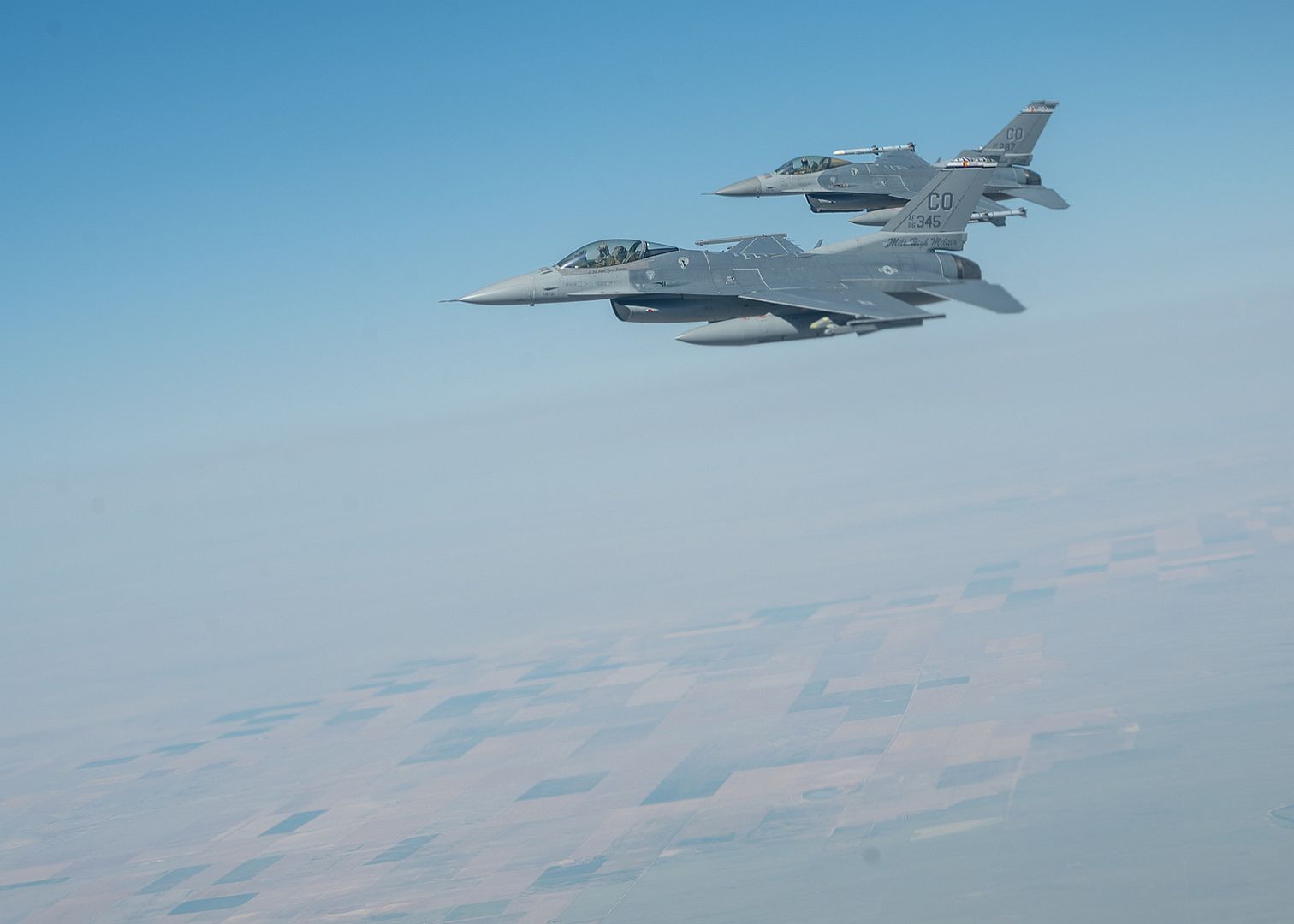
A German Air Force PA-200 Tornado receives fuel from a Royal Canadian Air Force CC-130H Hercules during the European Air-to-Air Refueling Training portion of exercise Arctic Defender 24 at Joint Base Elmendorf-Richardson, Alaska, July 11, 2024. Arctic Defender is a German Air Force-led exercise that provides a unique opportunity to integrate various forces into joint, coalition and multilateral training from simulated forward operating bases. EART trains tanker crews, planners, taskers and engineers, including maintenance personnel, in air-to-air refueling operations and offers a unique opportunity to the nations participating in Arctic Defender to train their tanker and fighter crews in planning and executing missions within a realistic and multinational framework. (U.S. Air Force photo by Senior Airman Shelimar Rivera Rosado)
PACIFIC OCEAN (July 11, 2024) Aviation Boatswain’s Mate (Launch/Recovery Equipment) Airman Lilly Phillips, from Indianapolis, prepares an F/A-18E Super Hornet, attached to the Royal Maces of Strike Fighter Squadron (VFA) 27, for launch on the flight deck of the U.S. Navy’s only forward-deployed aircraft carrier, USS Ronald Reagan (CVN 76), during flight operations in the Pacific Ocean, July 11. The Royal Maces conduct carrier-based air strikes and strike force escort missions, as well as ship, battle group and intelligence collection operations. Ronald Reagan, the flagship of Carrier Strike Group 5, provides a combat-ready force that protects and defends the United States, and supports alliances, partnerships and collective maritime interests in the Indo-Pacific region. (U.S. Navy photo by Mass Communication Specialist 2nd Class Evan Mueller)_27_for_launch_on_the_flight_deck_of_the_U.S._Navy_s_only_forward-deployed_aircraft_carrier_USS_Ronald_Reagan.jpg?width=1920&height=1080&fit=bounds)
PHILIPPINE SEA (July 10, 2024) The forward-deployed amphibious assault ship USS America (LHA 6), conducts flight operations while conducting routine operations in the Philippine Sea, July 10. America, lead ship of the America Amphibious Ready Group, is operating in the U.S. 7th Fleet area of operations. U.S. 7th Fleet is the U.S. Navy’s largest forward-deployed numbered fleet, and routinely interacts and operates with allies and partners in preserving a free and open Indo-Pacific region. (U.S. Navy photo by Mass Communication Specialist Seaman Darian Lord)_121_while_conducting_routine_operations_in_the_Philippine_Sea_July_10..jpg?width=1920&height=1080&fit=bounds)
A Sikorsky UH-60 Blackhawk from the U.S. Army's 25th Combat Aviation Brigade lands on the flight deck of Royal Canadian Navy ship Max Bernays (AOPV 432) during flight operations at sea as part of Exercise Rim of the Pacific (RIMPAC) 2024, July 10. Twenty-nine nations, 40 surface ships, three submarines, 14 national land forces, more than 150 aircraft and 25,000 personnel are participating in RIMPAC in and around the Hawaiian Islands, June 27 to Aug. 1. The world's largest international maritime exercise, RIMPAC provides a unique training opportunity while fostering and sustaining cooperative relationships among participants critical to ensuring the safety of sea lanes and security on the world's oceans. RIMPAC 2024 is the 29th exercise in the series that began in 1971. (Canadian Armed Forces photo Cpl. William Gosse)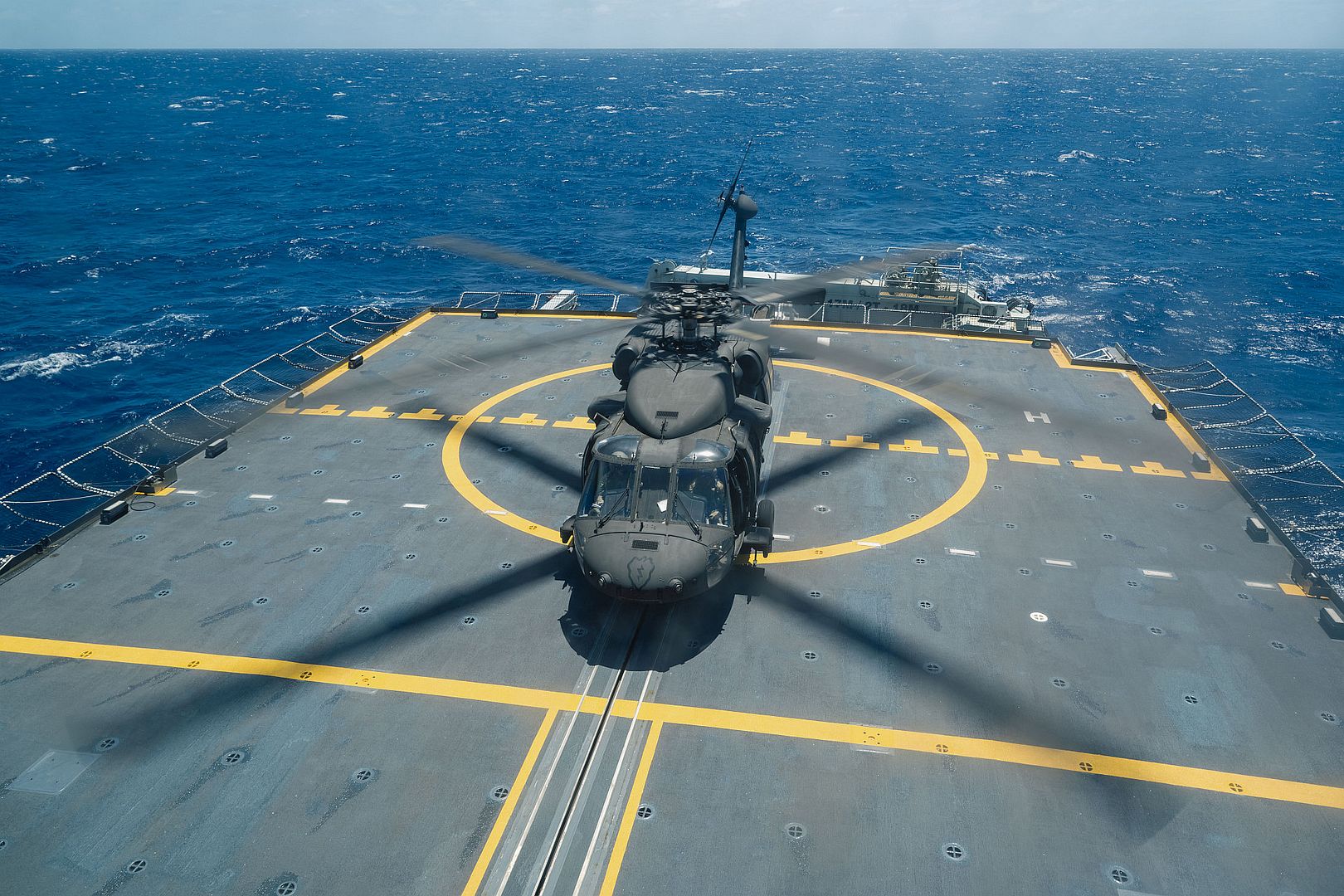
An Italian air force Eurofighter Typhoon, assigned to the 51st Wing at Istrana Air Base, is parked at Aviano Air Base, Italy, July 11, 2024. The 31st Fighter Wing regularly integrates with Italian air force counterparts, bolstering NATO capabilities. (U.S. Air Force photos by Airman 1st Class Joseph Bartoszek)

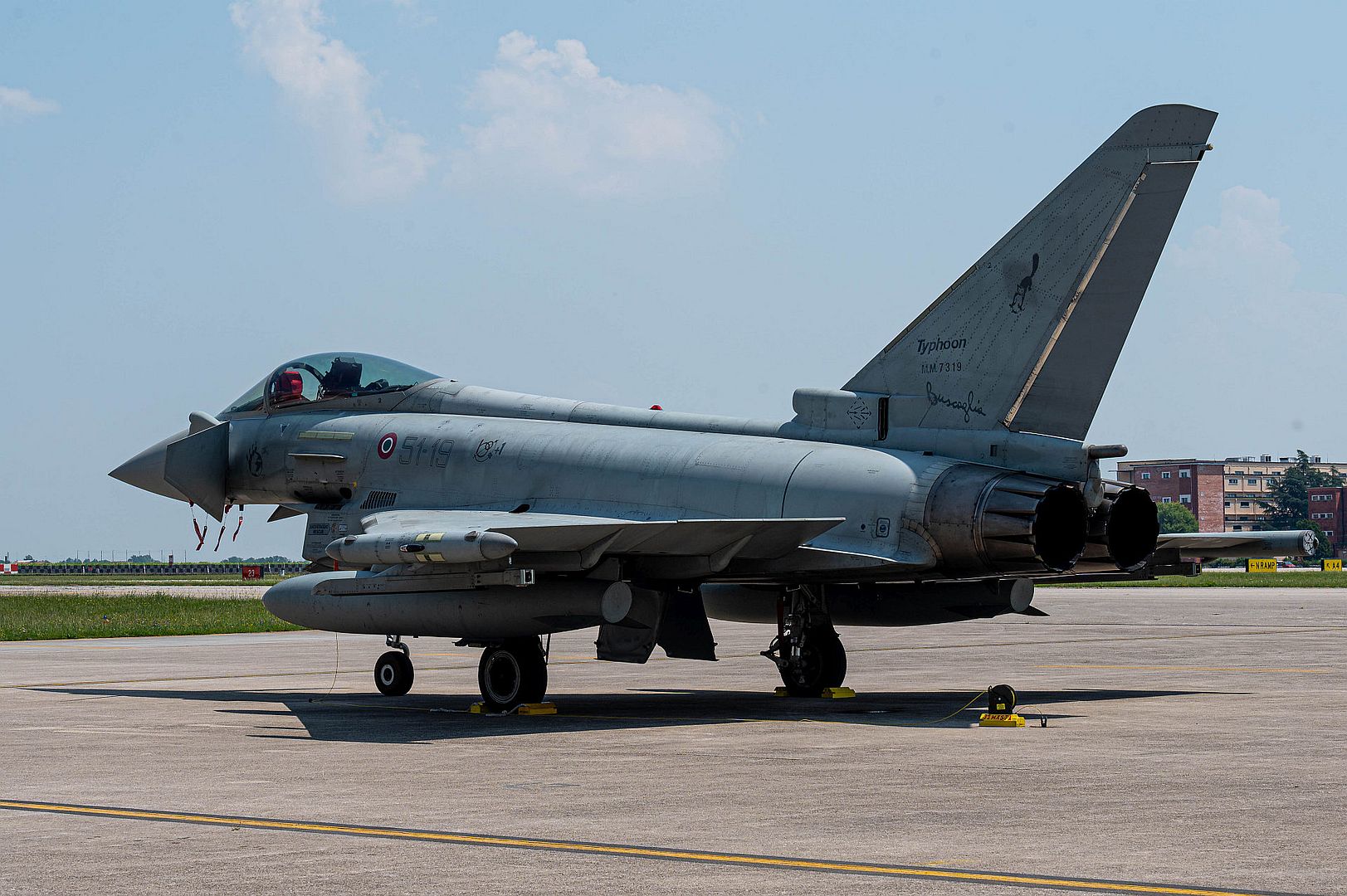
A French Rafale fighter jet takes off from the runway during Arctic Defender 24 at Eielson Air Force Base, Alaska, July 8, 2024.
Our international allies including France, Spain and Germany participate in multilateral combat training such as AD24 to enhance interoperability, build trust and evolve airpower. (U.S. Air Force photo by Staff Sgt. Kelsea Caballero)
-
 Main AdminAn F-15EX Eagle II, assigned to the 142nd Wing, is prepared as the main static display for the official Unveiling Ceremony for the new fighter jet at the Portland Air National Guard Base, Oregon on July 12, 2024. The 142nd Wing will be replacing the F-15 C/D model Eagles with the new F-15EX Eagle II models. (National Guard photo by John Hughel, Oregon Military Department Public Affairs)
Main AdminAn F-15EX Eagle II, assigned to the 142nd Wing, is prepared as the main static display for the official Unveiling Ceremony for the new fighter jet at the Portland Air National Guard Base, Oregon on July 12, 2024. The 142nd Wing will be replacing the F-15 C/D model Eagles with the new F-15EX Eagle II models. (National Guard photo by John Hughel, Oregon Military Department Public Affairs)
F-15EX Eagle II's, assigned to the 142nd Wing, taxi on the flightline before take-off during the official Unveiling Ceremony for the new fighter jet at the Portland Air National Guard Base, Oregon on July 12, 2024. The 142nd Wing will be replacing the F-15 C/D model Eagles with the new F-15EX Eagle II models. (National Guard photos by John Hughel, Oregon Military Department Public Affairs)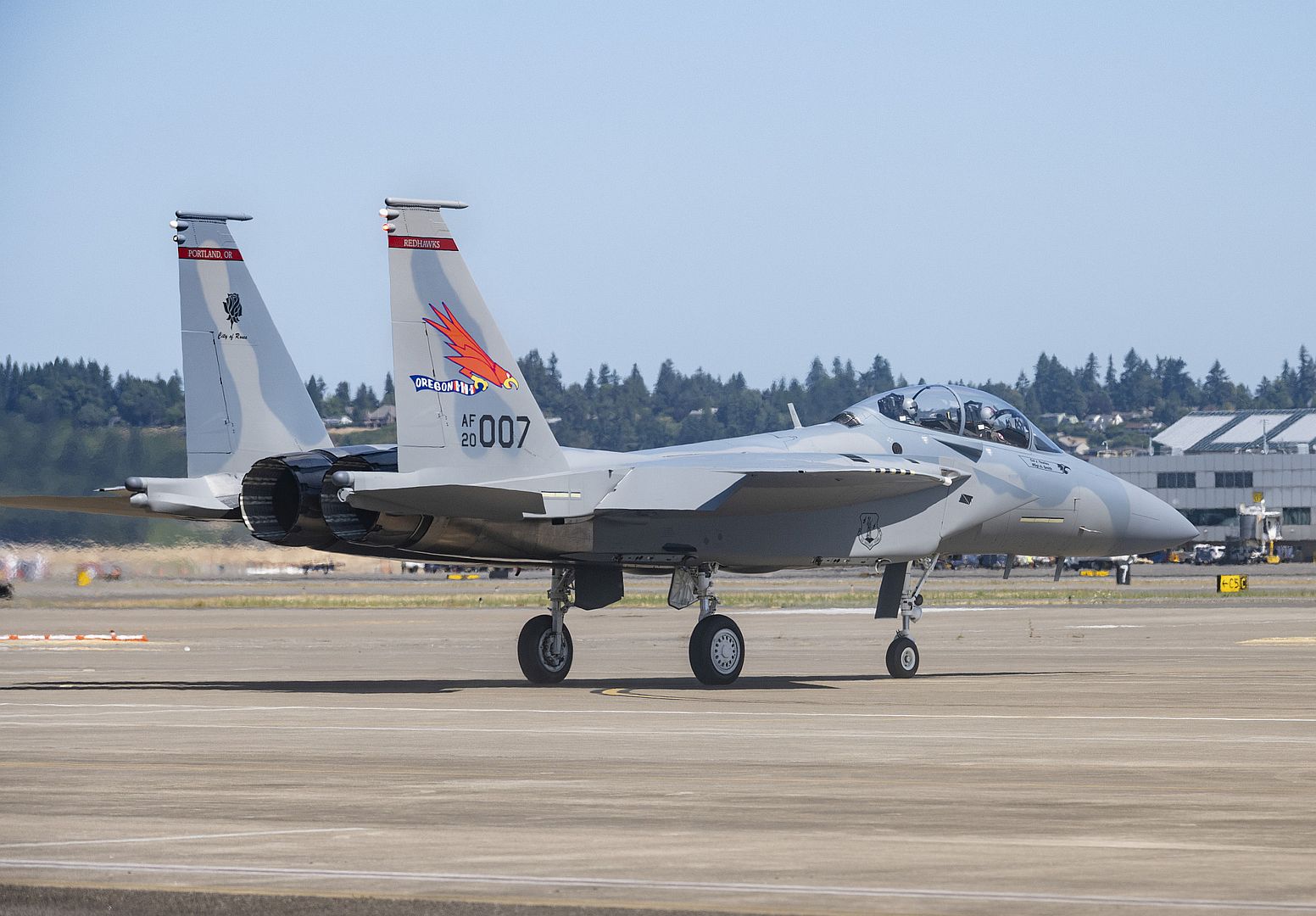
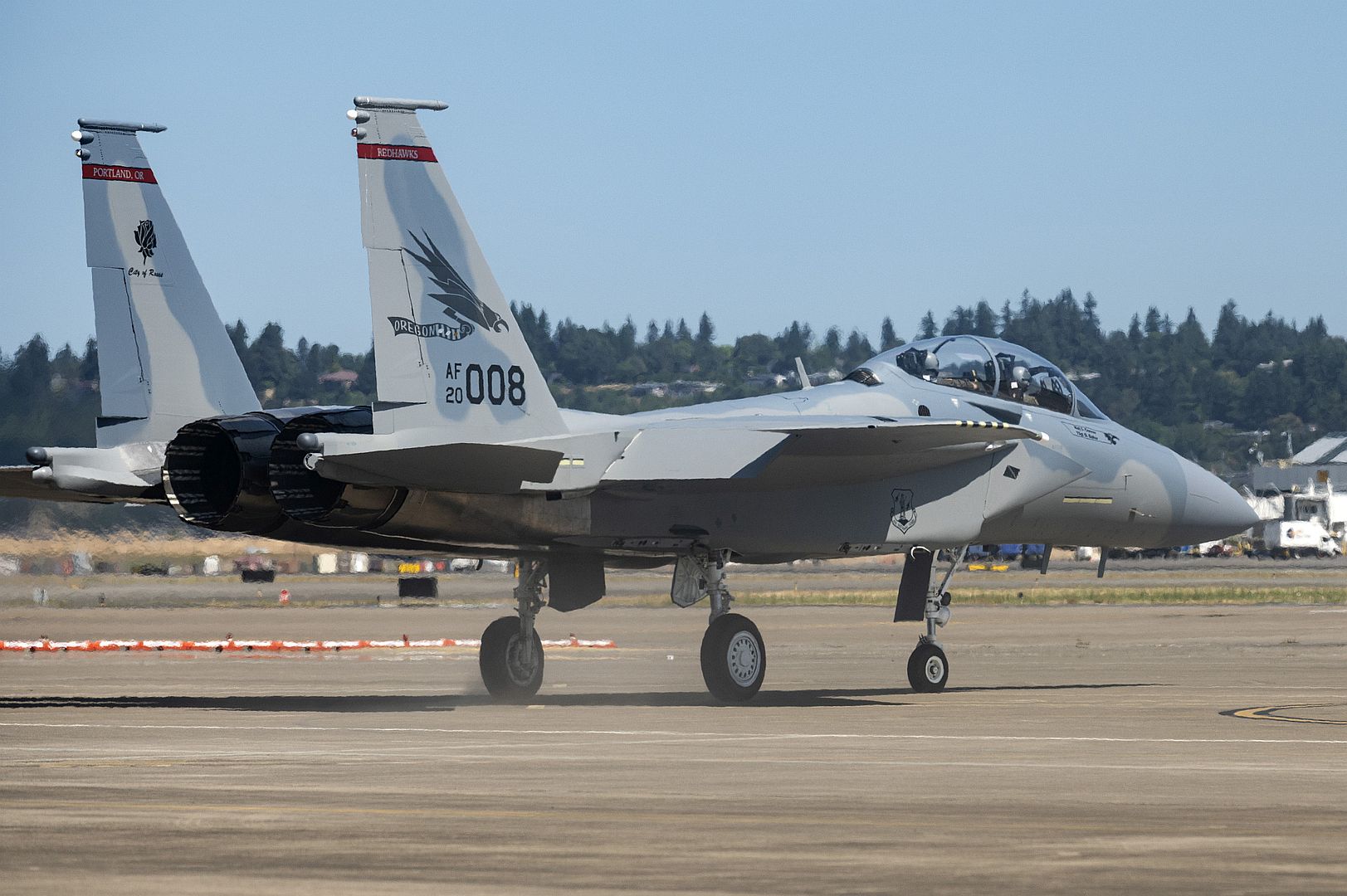
An F-15EX Eagle II, assigned to the 142nd Wing, takes off during the official Unveiling Ceremony for the new fighter jet at the Portland Air National Guard Base, Oregon on July 12, 2024. The 142nd Wing will be replacing the F-15 C/D model Eagles with the new F-15EX Eagle II models. (National Guard photo by John Hughel, Oregon Military Department Public Affairs)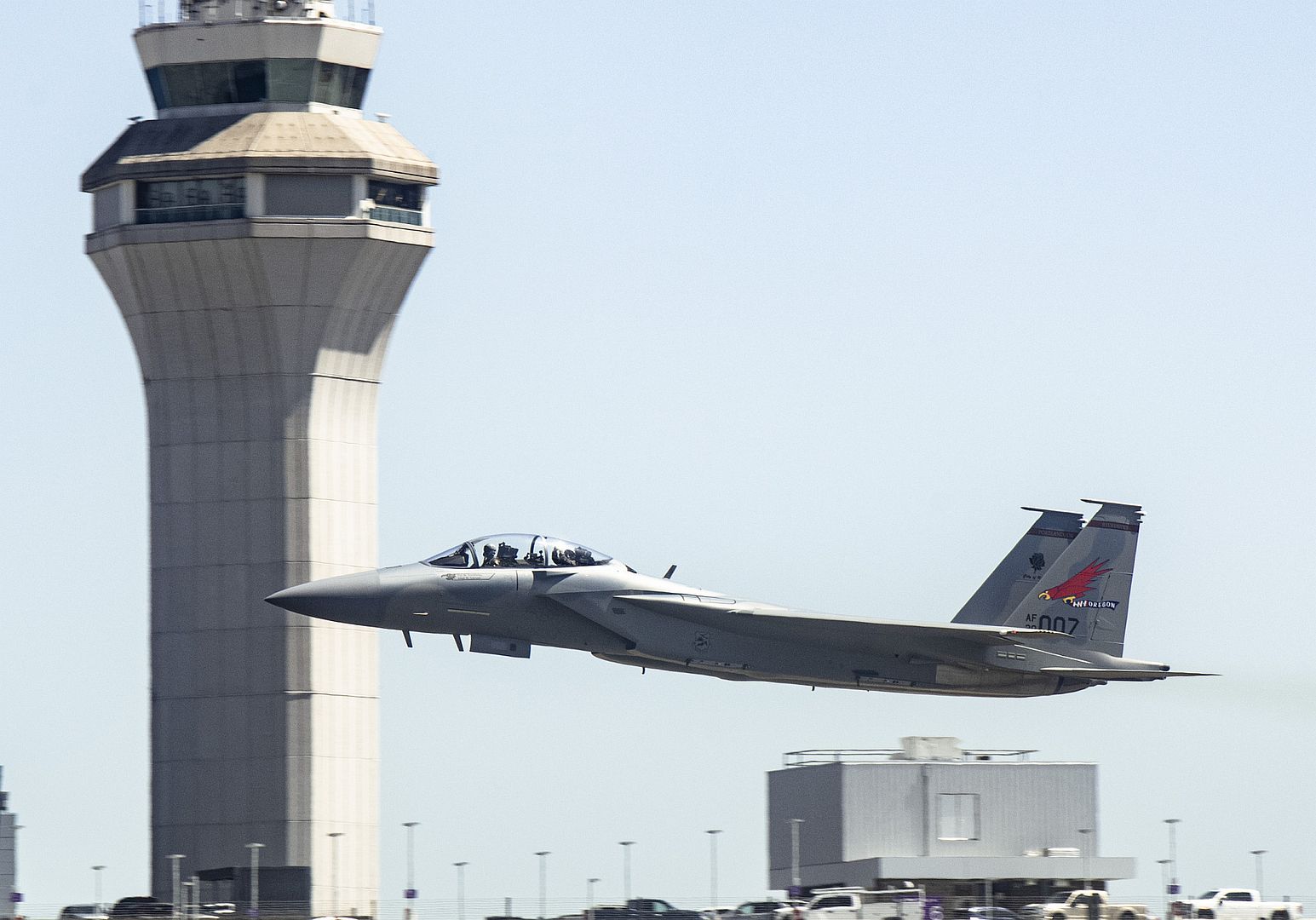
A 142nd Wing F-15EX Eagle II, tail 008, takes off from Portland Air National Guard Base, Ore. on July 12, 2024. The 142nd Wing welcomed its first F-15EX on June 5th and officially unveiled the aircraft to the public on July 12, 2024. The 142nd Wing is the first operational unit to field the novel aircraft. (U.S. Air National Guard photo by Staff Sgt. Nichole Sanchez)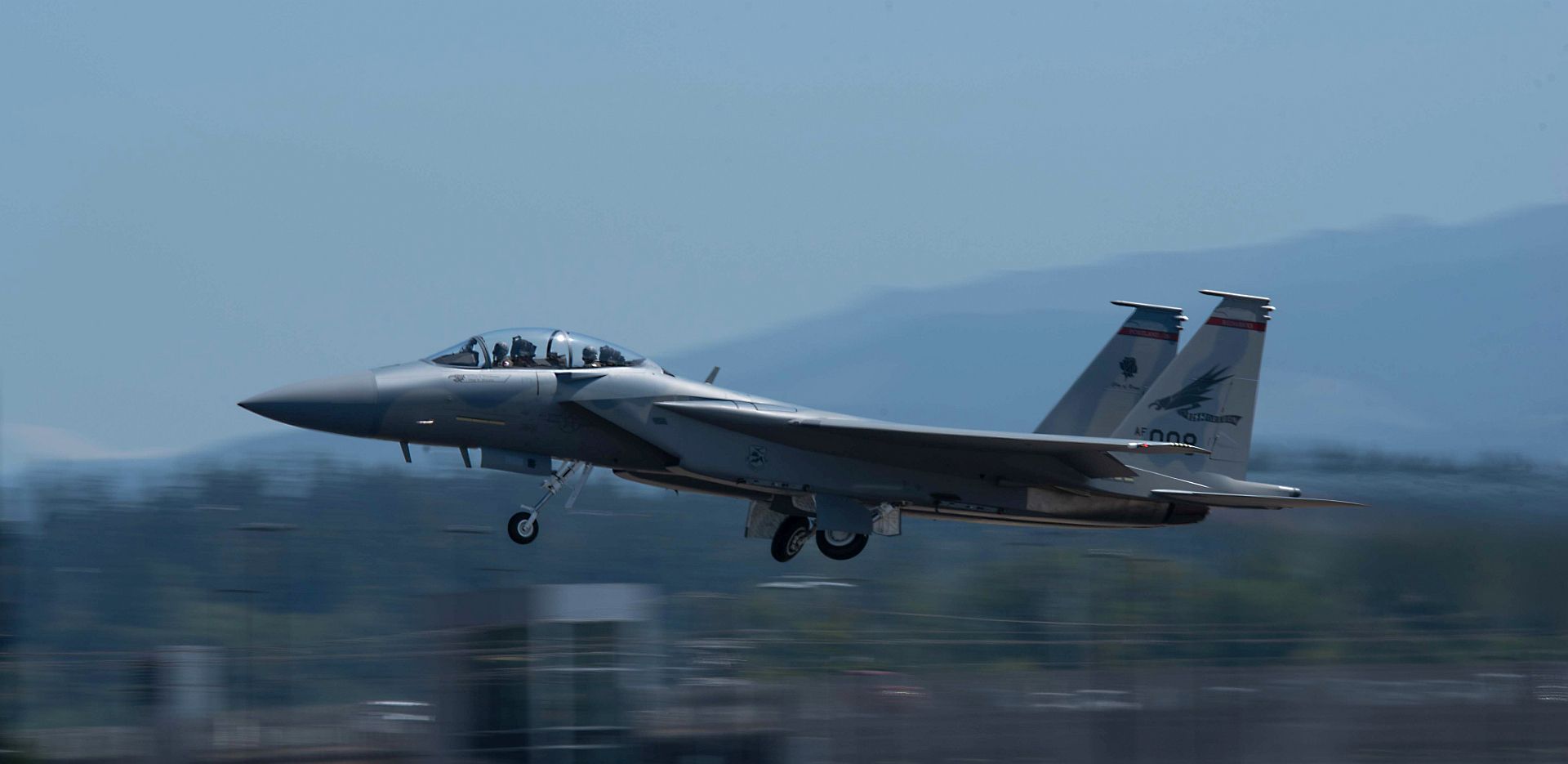
A F-22A Raptor arrives at the Royal Australian Air Force (RAAF) Base Tindal, Australia, to participate in Exercise Pitch Black 2024, July 13. This will be the first time the F-22A has participated in this exercise. Pitch Black 2024 missions provide participating nations with a better understanding of each other’s strengths and capabilities, encourages the adoption of techniques and practices, and offers pathways to future interoperability. (U.S. Air Force photo by Tech. Sgt. Andrea Posey)_Base_Tindal_Australia_to_participate_in_Exercise_Pitch_Black_2024_July_13..jpg?width=1920&height=1080&fit=bounds)
A U.S. Air Force KC-135 Stratotanker from MacDill Air Force Base, Florida, refuels a U.S. Navy EA-18G Growler near Joint Base Pearl Harbor-Hickam, Hawaii, during Exercise Rim of the Pacific (RIMPAC) 2024, July 13. Twenty-nine nations, 40 surface ships, three submarines, 14 national land forces, more than 150 aircraft and 25,000 personnel are participating in RIMPAC in and around the Hawaiian Islands, June 27 to Aug. 1. The world’s largest international maritime exercise, RIMPAC provides a unique training opportunity while fostering and sustaining cooperative relationships among participants critical to ensuring the safety of sea lanes and security on the world’s oceans. RIMPAC 24 is the 29th exercise in the series that began in 1971. (U.S. Air Force photo by Staff Sgt. Tiffany A. Emery)_2024.jpg?width=1920&height=1080&fit=bounds)
An F/A-18E Super Hornet from the “Mighty Shrikes” of Strike Fighter Squadron (VFA) 94 prepares to perform an arrested gear recovery on the flight deck of the aircraft carrier USS Nimitz (CVN 68) July 13, 2024. Nimitz is underway conducting routine operations. (U.S. Navy photo by Mass Communication Specialist 2nd Class Caylen McCutcheon)_94_prepares_to_perform_an_arrested_gear_recovery_on_the_flight_deck_of_the_aircraft_carrier_USS_Nimitz_(CVN_68)_July_13_2024..jpg?width=1920&height=1080&fit=bounds)
A U.S. MQ-9A MUX/MALE with Marine Unmanned Aerial Vehicle Squadron 3, Marine Aircraft Group 24, 1st Marine Aircraft wing taxies into position for takeoff in support of Exercise Rim of the Pacific at Marine Corps Air Station Kaneohe Bay, Hawaii, June 12, 2024. Twenty-nine nations, 40 surface ships, three submarines, 14 national land forces, more than 150 aircraft and 25,000 personnel are participating in RIMPAC in and around the Hawaiian Islands, June 27 to Aug. 1, 2024. The world' s largest international maritime exercise, RIMPAC, provides a unique training opportunity while fostering and sustaining cooperative relationships among participants critical to ensuring the safety of sea lanes and security on the world' s oceans. RIMPAC 2024 i s the 29th exercise in the series that began in 1971.(U.S. Air Force photo by Master Sgt. Chris Hibben)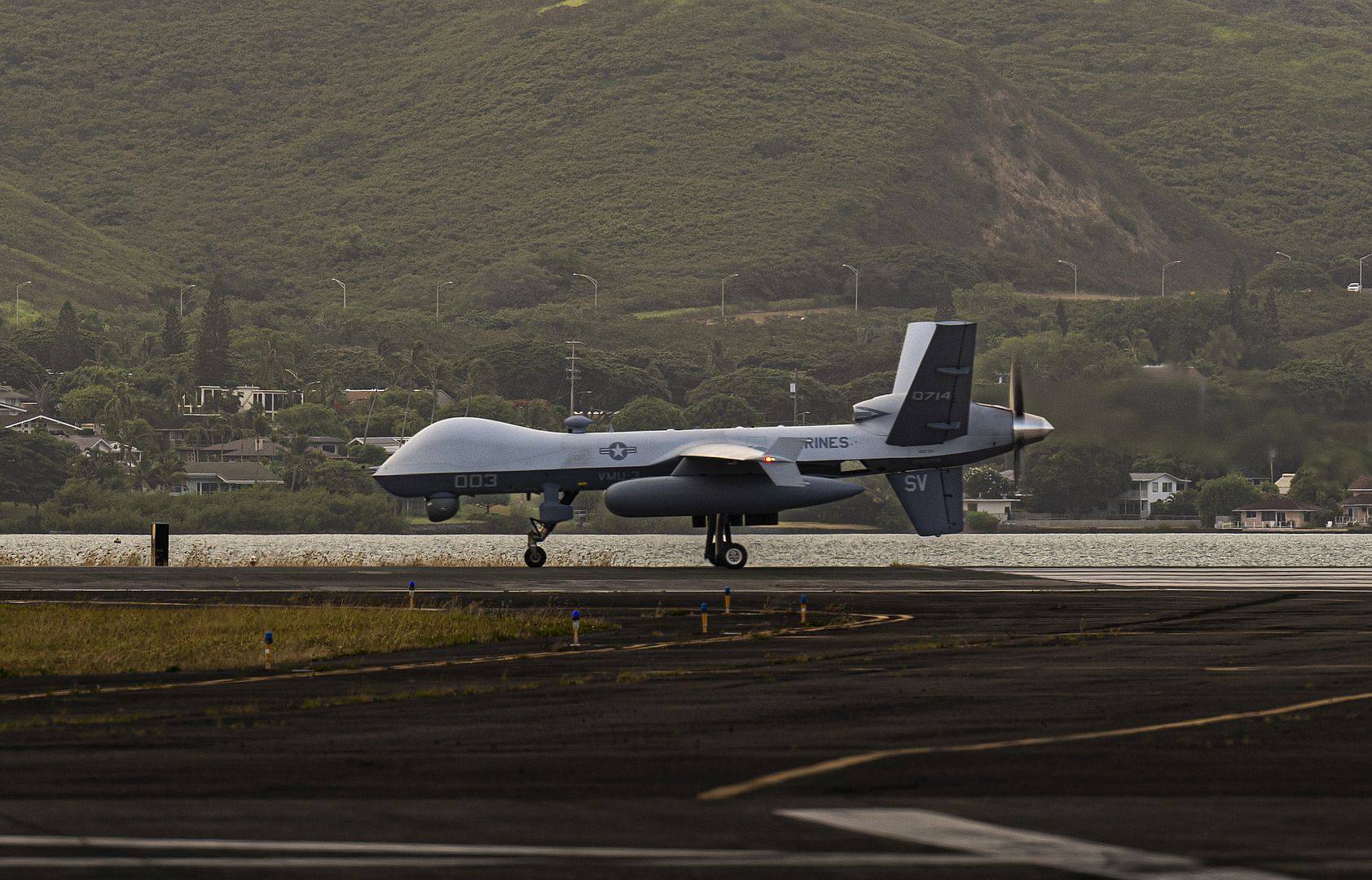
U.S. Navy EA-18G Growlers fly off the wing of a U.S. Air Force KC-135 Stratotanker from MacDill Air Force Base, Florida, near Joint Base Pearl Harbor-Hickam, Hawaii, during Exercise Rim of the Pacific (RIMPAC) 2024, July 12. Twenty-nine nations, 40 surface ships, three submarines, 14 national land forces, more than 150 aircraft and 25,000 personnel are participating in RIMPAC in and around the Hawaiian Islands, June 27 to Aug. 1. The world’s largest international maritime exercise, RIMPAC provides a unique training opportunity while fostering and sustaining cooperative relationships among participants critical to ensuring the safety of sea lanes and security on the world’s oceans. RIMPAC 24 is the 29th exercise in the series that began in 1971. (U.S. Air Force photo by Staff Sgt. Tiffany A. Emery)_2024_July_12..jpg?width=1920&height=1080&fit=bounds)
U.S. Navy F-18F Super Hornets fly off the wing of a U.S. Air Force KC-135 Stratotanker with MacDill Air Force Base near Joint Base Pearl Harbor-Hickam, Hawaii, during Exercise Rim of the Pacific (RIMPAC) 2024, July 12. Twenty-nine nations, 40 surface ships, three submarines, 14 national land forces, more than 150 aircraft and 25,000 personnel are participating in RIMPAC in and around the Hawaiian Islands, June 27 to Aug. 1. The world’s largest international maritime exercise, RIMPAC provides a unique training opportunity while fostering and sustaining cooperative relationships among participants critical to ensuring the safety of sea lanes and security on the world’s oceans. RIMPAC 24 is the 29th exercise in the series that began in 1971. (U.S. Air Force photo by Staff Sgt. Tiffany A. Emery)_2024_July_12..jpg?width=1920&height=1080&fit=bounds)
SEATTLE, July 15, 2024 /PRNewswire/ -- Boeing [NYSE: BA] and Aviation Capital Group LLC (ACG) announced today the airplane lessor has finalized an order for 35 737 MAX jets, including 16 737-8 and 19 of the larger 737-10 variant. Following an incremental 737 MAX order last year, this new purchase increases ACG's 737 MAX commitment to 82 orders as ACG grows its portfolio to meet customer demand for fuel-efficient airplanes.
"This firm order for additional 737 MAX aircraft enhances the strategic value of ACG's order book, supports a key pillar of our growth strategy and reinforces our commitment to invest in modern and fuel-efficient aircraft technology," said Thomas Baker, Chief Executive Officer and President at ACG. "We look forward to supporting our airline customers throughout the world with these highly versatile and fuel-efficient aircraft."
The 737-8 can carry up to 210 passengers based on configuration with a range of 3,500 nautical miles (6,480 km), while the 737-10, the largest 737 MAX model with the best per-seat economics of any single-aisle airplane, seats up to 230 passengers with a range of 3,100 nautical miles (5,740 km). Both variants reduce fuel use and carbon emissions by 20% compared to the airplanes they replace.
"Today's repeat order demonstrates market demand for the 737 MAX family of airplanes as ACG's customers seek to operate flexible, fuel-efficient fleets," said Brad McMullen, Boeing senior vice president of Commercial Sales and Marketing. "ACG has been a longstanding, valued partner on the 737 MAX program, and we look forward to working together to deliver the latest airplane technology to its airline customers."
On average, each 737 MAX saves up to eight million pounds of CO2 emissions annually and is a quieter airplane, with a 50% smaller noise footprint than the airplanes it replaces.
Aviation Capital Group is one of the world's premier full-service aircraft asset managers with over 480 owned, managed and committed aircraft as of March 31, 2024, leased to roughly 90 airlines in approximately 45 countries. It specializes in commercial aircraft leasing and provides certain aircraft asset management services and aircraft financing solutions for third parties. It was founded in 1989 and is a wholly owned subsidiary of Tokyo Century Corporation. Follow ACG on LinkedIn, and for more information, visit www.aviationcapitalgroup.com.
As a leading global aerospace company, Boeing develops, manufactures and services commercial airplanes, defense products and space systems for customers in more than 150 countries. As a top U.S. exporter, the company leverages the talents of a global supplier base to advance economic opportunity, sustainability and community impact. Boeing's diverse team is committed to innovating for the future and living the company's core values of safety, quality and integrity. Learn more at www.boeing.com.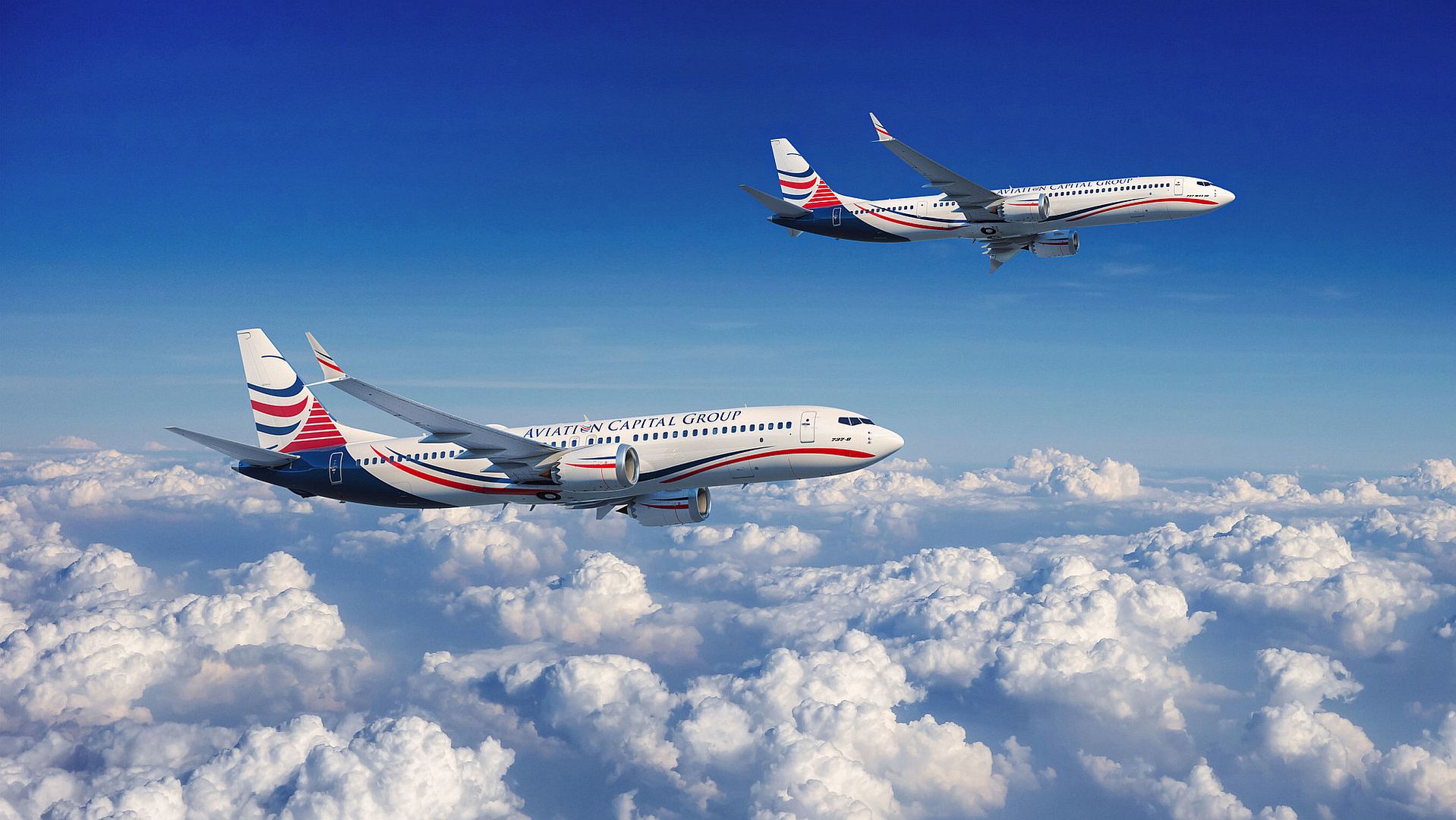
Grand Prairie, Texas – Memorial Hermann Life Flight® has placed orders for one H160 and four H145s to replace its current fleet of EC145 helicopters. The nationally recognised emergency medical services program will be the first in the world to operate the H160 for helicopter emergency medical services (HEMS).
Memorial Hermann Life Flight®, a service provided by Memorial Hermann Health System, was founded in 1976 by trauma surgeon James “Red” Duke, M.D., and serves the community within a 150-mile radius of the Texas Medical Center in Houston. It has exclusively relied on Airbus helicopters since its inception and has flown more than 166,000 lifesaving missions.
“Memorial Hermann invested in this new fleet of helicopters to expand our reach and allow us to help even more people who are in critical need of air ambulance transport,” said Toni Von Wenkstern, Vice President, Trauma, Memorial Hermann Health Systems.
“The Memorial Hermann Life Flight® team has long been a leader in the HEMS market, setting industry benchmarks and incorporating the latest technology to benefit the communities they serve,” said Bart Reijnen, President of Airbus Helicopters, Inc. and Head of the North America region. “Our team is proud of the long-standing partnership we have with the program, and is dedicated to supporting them as their new helicopters enter into service and throughout the fleet’s lifecycle.”
“The enhanced technology and safety features, larger cabin and cargo space, increased fuel load and shorter reconfiguration times will provide us with the capabilities of a mobile intensive care unit,” said Tom Flanagan, Consultant and Program Director.
The H160 is in service in the U.S., Canada, Brazil, Japan, Saudi Arabia, France, and other European countries and has been ordered for use in energy, private business aviation, HEMS, search and rescue, law enforcement and military missions. The H160 offers the largest cabin in its class, sliding doors, low levels of vibration, flat attitude in flight, and Blue Edge rotor blades, making it the quietest helicopter in its class and providing a more comfortable experience for patients and health care professionals.
In total, there are more than 1,675 H145 family helicopters in service, logging a total of more than 7.6 million flight hours. Powered by two Safran Arriel 2E engines, the H145 is equipped with a full authority digital engine control (FADEC) and the Helionix digital avionics suite. It includes a high performance 4-axis autopilot, increasing safety and reducing pilot workload. Its particularly low acoustic footprint makes the H145 the quietest helicopter in its class, while its CO2 emissions are the lowest amongst its competitors.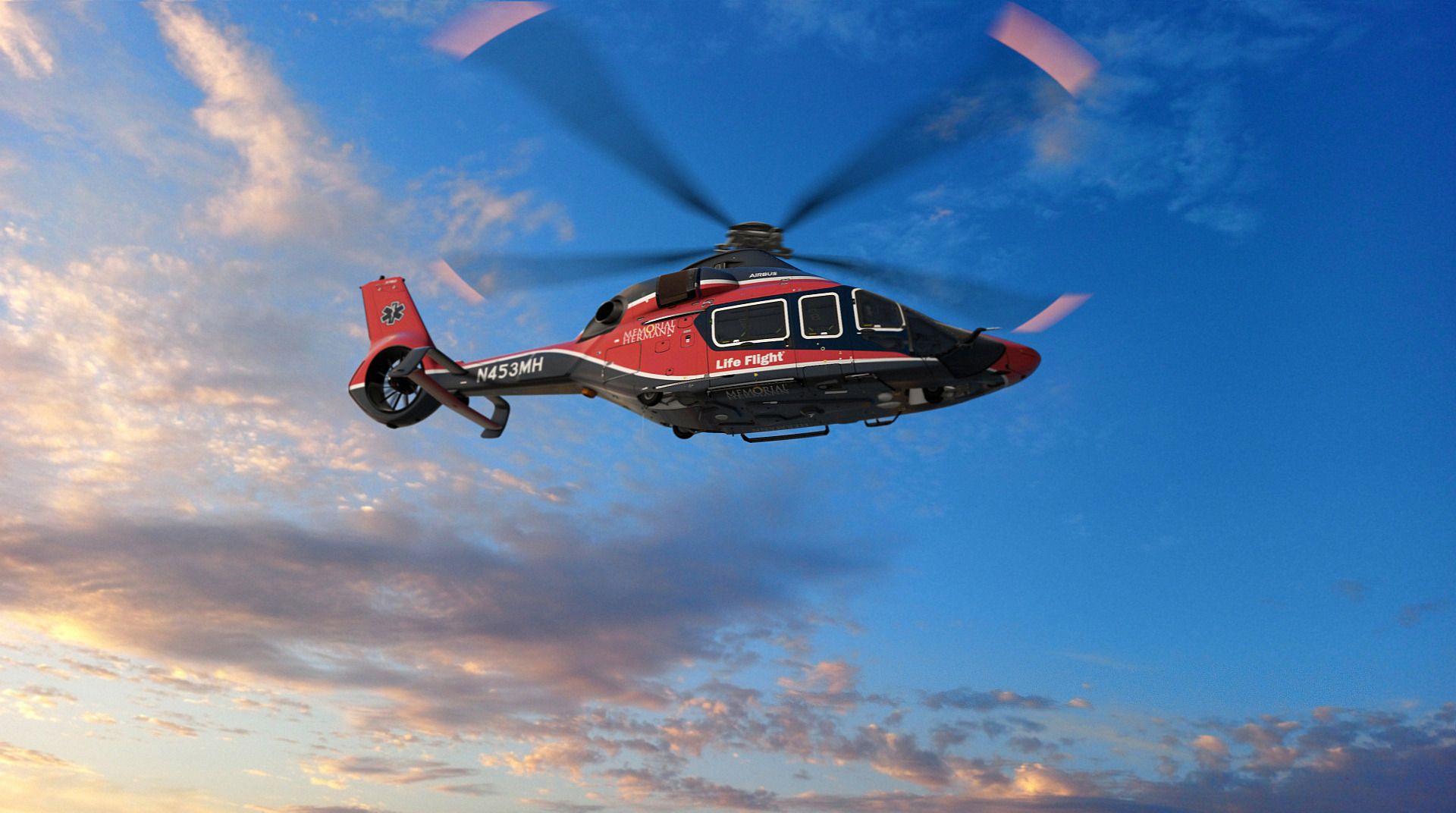
Whilst deployed on NATO operations in the Black Sea region, IX (B) Squadron from RAF Lossiemouth have been officially certified as a Multi-Role Combat Ready Squadron.
Having now completed the required training and operations, IX (B) Squadron were declared Multi-Role Combat Ready by the Chief of the Air Staff, Air Chief Marshal Sir Richard Knighton on 3rd July 2024 in Romania, where they are currently deployed.
With an impressive history and aircraft flown including the Lancaster, Vulcan, Canberra and Tornado, the Squadron re-formed at RAF Lossiemouth in 2019 as a Typhoon Aggressor and QRA Squadron, providing first-class, specialist adversary training to frontline units.
The Squadron has also deployed to an arctic exercise in Norway and conducted Baltic air policing in Estonia alongside the German Air Force.
(Photo courtesy of the RAF)
An F-35B of 809 Naval Air Squadron has completed a sortie flown by an 809 pilot, in an aircraft maintained, dispatched and recovered solely by 809 personnel at RAF Marham.
The squadron stood up in December as the UK’s second front-line stealth fighter formation, since when it’s been working up to this moment with the help of the first front-line squadron, 617 ‘Dambusters’ Squadron.
Phoenix Squadron – the nickname comes from the unit badge – is gearing up for its first embarkation this autumn, when it joins HMS Prince of Wales.
(Photo courtesy of the RN)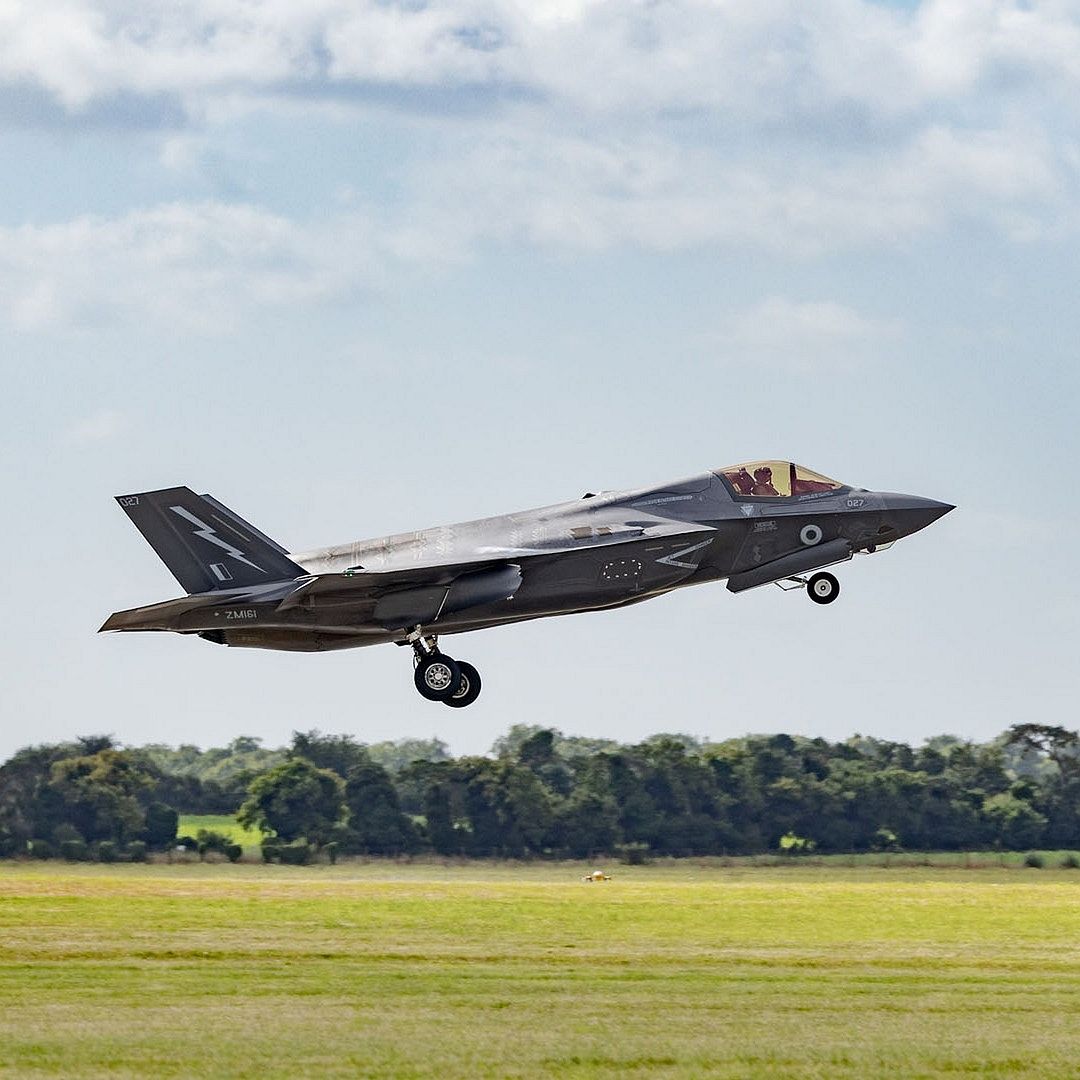
Su-30MKI touched down in style on arrival in Darwin last week for Exercise Pitch Black 24.
(Photos courtesy of the RAAF)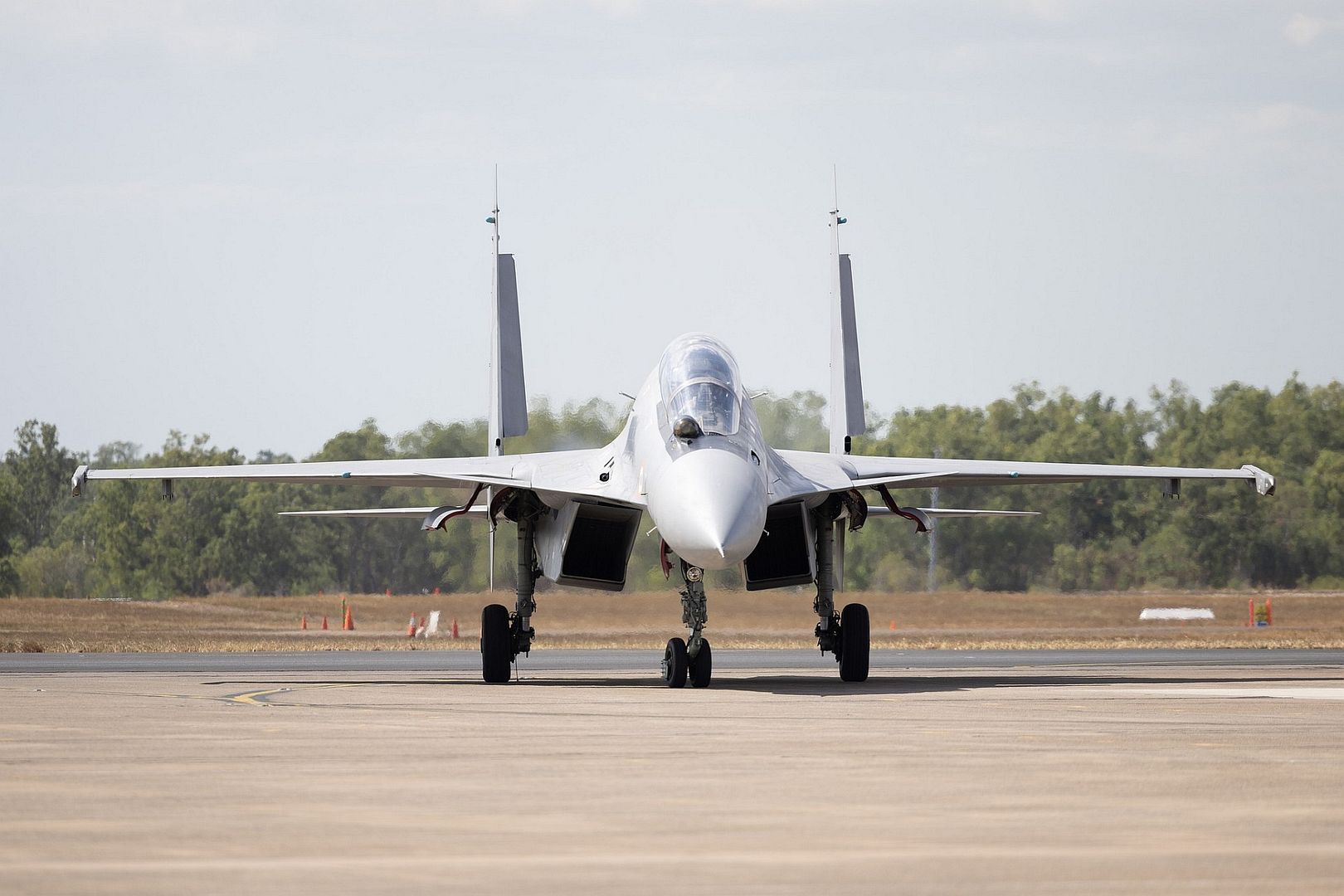
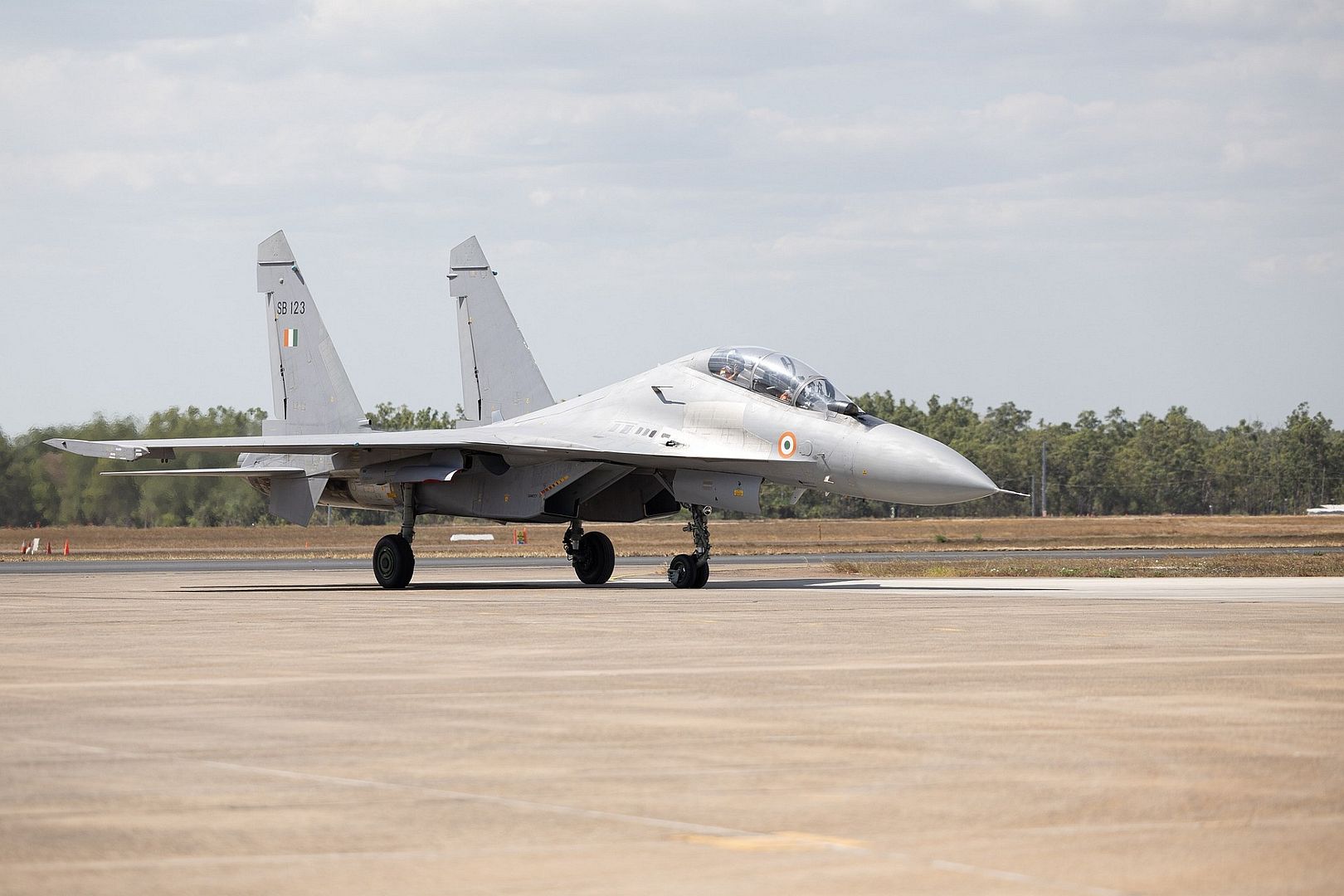

Post a reply
- Go to Previous topic
- Go to Next topic
- Go to Welcome
- Go to Introduce Yourself
- Go to General Discussion
- Go to Screenshots, Images and Videos
- Go to Off topic
- Go to Works in Progress
- Go to Skinning Tips / Tutorials
- Go to Skin Requests
- Go to IJAAF Library
- Go to Luftwaffe Library
- Go to RAF Library
- Go to USAAF / USN Library
- Go to Misc Library
- Go to The Ops Room
- Go to Made in Germany
- Go to Campaigns and Missions
- Go to Works in Progress
- Go to Juri's Air-Raid Shelter
- Go to Campaigns and Missions
- Go to Works in Progress
- Go to Skinpacks
- Go to External Projects Discussion
- Go to Books & Resources
